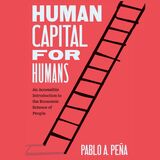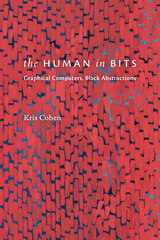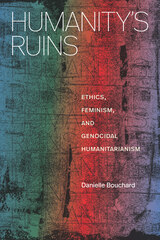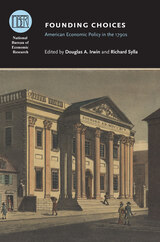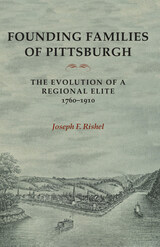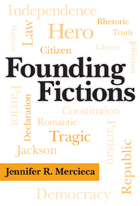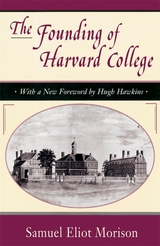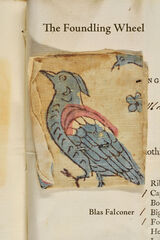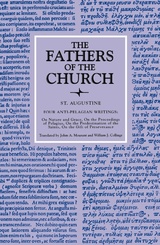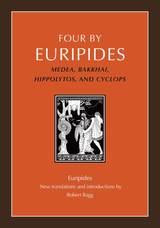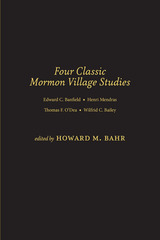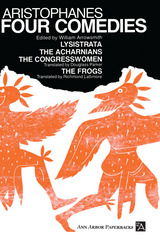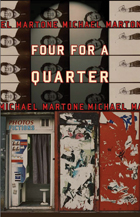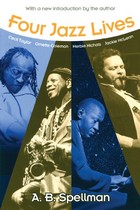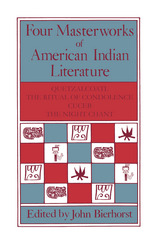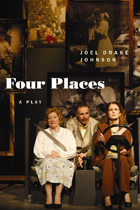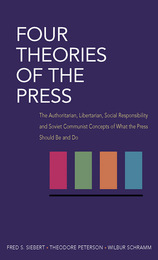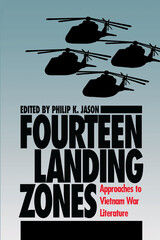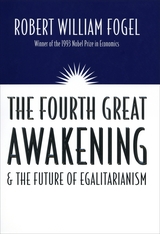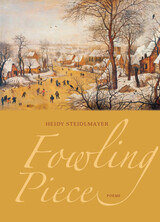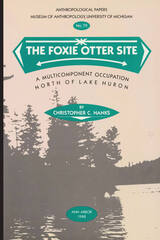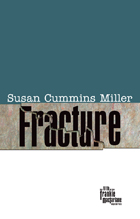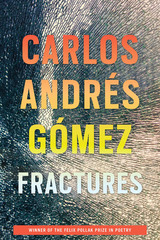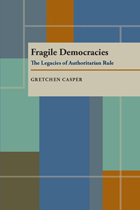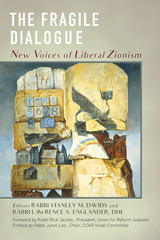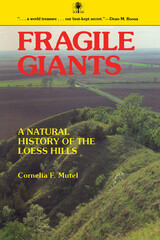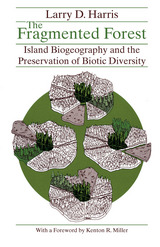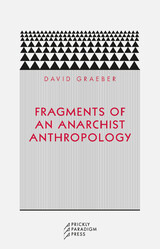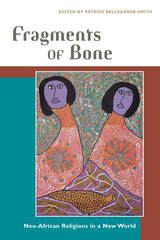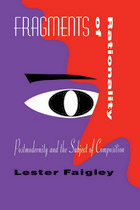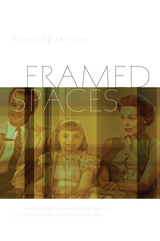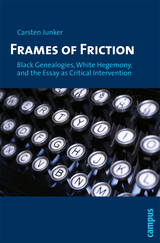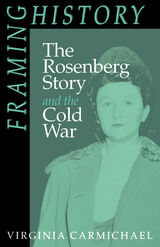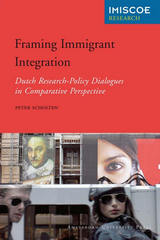Founding Choices: American Economic Policy in the 1790s
Edited by Douglas A. Irwin and Richard Sylla
University of Chicago Press, 2010 The political decisions made by the founding fathers were crucial to the success of the early republic. But the economic decisions they made were just as pivotal, ensuring the general welfare and common defense of the United States for decades to come. Founding Choices explores these economic choices and their profound influence on American life, westward expansion, and influence abroad. Among the topics covered are finance, trade, and monetary and banking policy, with a focus on the factors guiding those policies and their end result.
This book redresses the relative neglect of the economic achievements of the founders. It will be essential reading for historians and economists alike.
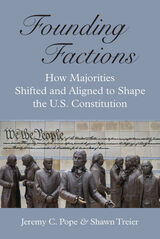 Founding Factions: How Majorities Shifted and Aligned to Shape the U.S. Constitution
Jeremy C. Pope and Shawn Treier
University of Michigan Press, 2020 The fundamental importance of the 1787 Constitutional Convention continues to affect contemporary politics. The Constitution defines the structure and limits of the American system of government, and it organizes contemporary debates about policy and legal issues—debates that explicitly invoke the intentions and actions of those delegates to the Convention. Virtually all scholarship emphasizes the importance of compromise between key actors or factions at the Convention. In truth, the deep structure of voting at the Convention remains somewhat murky because the traditional stories are incomplete. There were three key factions at the Convention, not two. The alliance of the core reformers with the slave interests helped change representation and make a stronger national government. When it came time to create a strong executive, a group of small state delegates provided the crucial votes. Traditional accounts gloss over the complicated coalition politics that produced these important compromises, while this book shows the specific voting alignments. It is true that the delegates came with common purposes, but they were divided by both interests and ideas into three crosscutting factions. There was no persistent dominant coalition of reformers or nationalists; rather, there was a series of minority factions allying with one another on the major issues to fashion the compromise. Founding Factions helps us understand the nature of shifting majorities and how they created the American government.
Founding Families Of Pittsburgh: The Evolution Of A Regional Elite 1760-1910
Joseph F Rishel
University of Pittsburgh Press, 1990 As Pittsburgh and its surrounding area grew into an important commercial and industrial center, a group of families emerged who were distinguished by their wealth and social position. Joseph Rishel studies twenty of these families to determine the degree to which they formed a coherent upper class and the extent to which they were able to maintain their status over time. His analysis shows that Pittsburgh's elite upper class succeeded in creating the institutions needed to sustain a local aristocracy and possessed the ability to adapt its accumulated advantages to social and economic changes.
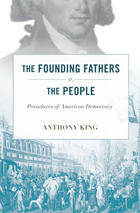 The Founding Fathers v. the People: Paradoxes of American Democracy
Anthony King
Harvard University Press, 2011 As pundits and politicians remind us at every election cycle or turn of the television dial, the United States sees itself as the world’s greatest democracy. But what citizens might also hear, if they knew how to listen, is the grinding of two tectonic plates on which this democracy was established. In the venerable tradition of keen foreign observers of American politics, Anthony King exposes the political paradoxes in our system that we may well be too close to see—founding principles of our great democracy that are distinctly undemocratic.
In an extended essay eloquent in its plainspoken good sense, King begins, on the one hand, with the founding fathers who emphasized moderation, deliberation, checks and balances, and the separation of powers—a system in which “the people” were allowed to play only a limited role. On the other hand were radical democrats who insisted that the people, and only the people, should rule. The result was a political system tangled up in conflicts that persist to this day: unelected and unaccountable Supreme Court justices who exercise enormous personal power; severe restrictions on the kind of person the people can elect as president; popular referendums at the state and local level but none at the federal level, not even to ratify amendments to the Constitution.
In King’s provocative analysis, we see how these puzzles play out in the turmoil of our nation’s public life and political culture—and we glimpse, perhaps, a new way to address them.
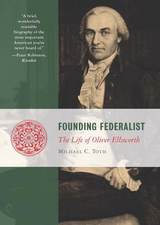 Founding Federalist: The Life of Oliver Ellsworth
Michael C. Toth
Intercollegiate Studies Institute, 2011
In Founding Federalist, Michael C. Toth provides an in-depth look at the life and work of Oliver Ellsworth, a largely forgotten but eminently important Founding Father.
The American Founding was the work of visionaries and revolutionaries. But amid the celebrated luminaries, the historic transformations, the heroic acts, and unforgettable discourses were practical politicians, the consensus builders who made the system work. Oliver Ellsworth—Framer, senator, chief justice, diplomat—was such a leader.
Founding Federalist brings to life a figure whose contributions shape American political life even today. Vividly capturing the pivotal debates at Philadelphia in the summer of 1787, Toth shows how Ellsworth was a vital force in shaping the Constitution as a Federalist document, one that did not extinguish the role of the states even as it recognized the need for national institutions. The author illuminates what Ellsworth and other Founders understood to be the meaning of the new constitutional order—a topic highly relevant to twenty-first-century debates about the role of government. Toth, an attorney, also brilliantly analyzes Ellsworth’s most important legislative achievement: the creation of the U.S. federal court system.
With this insightful new biography, Michael Toth has reclaimed a figure who made crucial contributions to a lasting creation: a federal republic.
Founding Fictions
Jennifer R. Mercieca
University of Alabama Press, 2010 An extended analysis of how Americans imagined themselves as citizens between 1764 and 1845
Founding Fictions develops the concept of a “political fiction,” or a narrative that people tell about their own political theories, and analyzes how republican and democratic fictions positioned American citizens as either romantic heroes, tragic victims, or ironic partisans. By re-telling the stories that Americans have told themselves about citizenship, Mercieca highlights an important contradiction in American political theory and practice: that national stability and active citizen participation are perceived as fundamentally at odds.
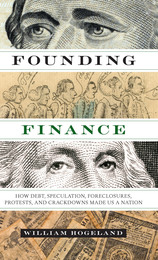 Founding Finance: How Debt, Speculation, Foreclosures, Protests, and Crackdowns Made Us a Nation
By William Hogeland
University of Texas Press, 2014 Recent movements such as the Tea Party and anti-tax “constitutional conservatism” lay claim to the finance and taxation ideas of America’s founders, but how much do we really know about the dramatic clashes over finance and economics that marked the founding of America? Dissenting from both right-wing claims and certain liberal preconceptions, Founding Finance brings to life the violent conflicts over economics, class, and finance that played directly, and in many ways ironically, into the hardball politics of forming the nation and ratifying the Constitution—conflicts that still continue to affect our politics, legislation, and debate today. Mixing lively narrative with fresh views of America’s founders, William Hogeland offers a new perspective on America’s economic infancy: foreclosure crises that make our current one look mild; investment bubbles in land and securities that drove rich men to high-risk borrowing and mad displays of ostentation before dropping them into debtors’ prisons; depressions longer and deeper than the great one of the twentieth century; crony mercantilism, war profiteering, and government corruption that undermine any nostalgia for a virtuous early republic; and predatory lending of scarce cash at exorbitant, unregulated rates, which forced people into bankruptcy, landlessness, and working in the factories and on the commercial farms of their creditors. This story exposes and corrects a perpetual historical denial—by movements across the political spectrum—of America’s all-important founding economic clashes, a denial that weakens and cheapens public discourse on American finance just when we need it most.
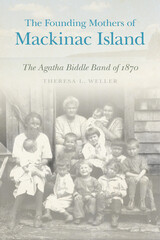 The Founding Mothers of Mackinac Island: The Agatha Biddle Band of 1870
Theresa L. Weller
Michigan State University Press, 2021 Drawing on a wide array of historical sources, Theresa L. Weller provides a comprehensive history of the lineage of the seventy-four members of the Agatha Biddle band in 1870. A highly unusual Native and Métis community, the band included just eight men but sixty-six women. Agatha Biddle was a member of the band from its first enumeration in 1837 and became its chief in the early 1860s. Also, unlike most other bands, which were typically made up of family members, this one began as a small handful of unrelated Indian women joined by the fact that the US government owed them payments in the form of annuities in exchange for land given up in the 1836 Treaty of Washington, DC. In this volume, the author unveils the genealogies for all the families who belonged to the band under Agatha Biddle’s leadership, and in doing so, offers the reader fascinating insights into Mackinac Island life in the nineteenth century.
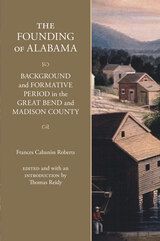 The Founding of Alabama: Background and Formative Period in the Great Bend and Madison County
Frances Cabaniss Roberts, edited and introduced by Thomas Reidy
University of Alabama Press, 2020 The most thorough history of Alabama’s Madison County region, widely available for the first time
The 1956 dissertation by Frances Cabaniss Roberts is a classic text on Alabama history that continues to be cited by southern historians. Roberts was the first woman to earn a PhD from the University of Alabama’s history department. In the 1950s, she was the only full-time faculty member at what is now the University of Alabama in Huntsville, where she was appointed chair of the history department in 1966.
Roberts’s dissertation, “Background and Formative Period in the Great Bend and Madison County,” remains the most thorough history of the region yet produced. While certainly a product of its era, Roberts work is visionary in its own way and offers a useful look at Alabama’s rise to statehood. Thomas Reidy, editor of this edition, has kept Roberts’s words intact except for correction of minor typographical errors and helpful additions to the notes and citations. His introduction describes both the value of Roberts’s decades of service to UAH and the importance of her dissertation over time. While highlighting the great intrinsic value of Roberts’s research and writing, Reidy also notes its significance in demonstrating how the practice of history—its methods, priorities, and values—has evolved over the intervening decades.
In her examination of Madison County, Roberts spotlights exemplars of civic performance and good community behavior, giving readers one of the earliest accountings of the antebellum southern middle class. Unlike many historians of her time, Roberts displays an interest in both the “common folks” and leaders who built the region—rural and urban—and created the institutions that shaped Madison County. She examines the contributions of merchants, shopkeepers, lawyers, doctors, architects, craftsmen, planters, farmers, elected and appointed officials, board members, and entrepreneurs.
The Founding of Harvard College
Samuel Eliot Morison
Harvard University Press In this volume Professor Morison describes the background and founding of Harvard College and its history before the granting of the Charter of 1650. The story of Harvard has never before been told in such detail, and it is difficult even to suggest in this brief paragraph the wealth of historical information here laid before the reader. A glance at mediaeval universities, a description of the University of Cambridge in the half century before Harvard was founded, the exact circumstances and motives of founding Harvard, the inspiring story of John Harvard’s brief life in America, the sad but amusing tale of Nathaniel Eatoh, first head of Harvard College, the eventful first ten years of Henry Dunster’s presidency—these are only a few of the chief topics discussed. The volume is lavishly illustrated with portraits, prints, facsimiles, plans, maps, and coats of arms.
The Founding of Harvard College: With a New Foreword by Hugh Hawkins
Samuel Eliot Morison
Harvard University Press, 1995 Pulitzer Prize–winning author Samuel Eliot Morison traces the roots of American universities back to Europe, providing “a lively contemporary perspective…a realistic picture of the founding of the first American university north of the Rio Grande” [Lewis Gannett, New York Herald Tribune].
The Foundling Wheel
Blas Falconer
Four Way Books, 2012 Centered on the adoption of a gay couple’s first child, The Foundling Wheel employs apt imagery to create an emotional mosaic that explores the complicated bond between father and son. Beginning in a place where the desire to have a child has not yet been realized, this book is a journey, and while the poems certainly rejoice in fatherhood, they also grapple with the fears that accompany it.
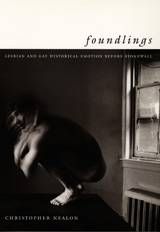 Foundlings: Lesbian and Gay Historical Emotion before Stonewall
Christopher Nealon
Duke University Press, 2001 What is it like to “feel historical”? In Foundlings Christopher Nealon analyzes texts produced by American gay men and lesbians in the first half of the twentieth century—poems by Hart Crane, novels by Willa Cather, gay male physique magazines, and lesbian pulp fiction. Nealon brings these diverse works together by highlighting a coming-of-age narrative he calls “foundling”—a term for queer disaffiliation from and desire for family, nation, and history.
The young runaways in Cather’s novels, the way critics conflated Crane’s homosexual body with his verse, the suggestive poses and utopian captions of muscle magazines, and Beebo Brinker, the aging butch heroine from Ann Bannon’s pulp novels—all embody for Nealon the uncertain space between two models of lesbian and gay sexuality. The “inversion” model dominant in the first half of the century held that homosexuals are souls of one gender trapped in the body of another, while the more contemporary “ethnic” model refers to the existence of a distinct and collective culture among gay men and lesbians. Nealon’s unique readings, however, reveal a constant movement between these two discursive poles, and not, as is widely theorized, a linear progress from one to the other.
This startlingly original study will interest those working on gay and lesbian studies, American literature and culture, and twentieth-century history.
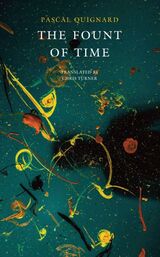 The Fount of Time: The Last Kindom II
Pascal Quignard
Seagull Books, 2021 “Last Kingdom is a set of books that . . . is neither philosophical argumentation nor little disparate, scholarly essays, nor novelistic narrative; gradually, for me, all genres have fallen away.”
So writes Pascal Quignard of his monumental book series, Last Kingdom. In the latest volume, The Fount of Time, he focuses on the paradoxically immediate presence in our lives of the deepest, most distant past. He explores this subject through a multitude of mediums: fragments of autobiography; curious folktales; literary snippets; historical anecdotes both classical and modern; ruminations on biology, archaeology, and linguistics. Using all of these forms, he confronts dimensions of human experience which, though customarily conveyed in legend, myth, and dreams, run somehow beneath the everyday world and yet are part of our most tangible reality.
To enter Quignard’s horizonless time-space is to embrace a rich vision in which the totality of human history and culture is placed disconcertingly on a single footing. In The Fount of Time we are able to glimpse—whether through obscure cultural detail or unusual anecdote—“another world beneath the world.”
Fountain and Furnace
Hadara Bar-Nadav
Tupelo Press, 2016 We fill our days with matter and clutter, objects that might disappear inside their particular and necessary function: soap, a wineglass, nightgown, or thumb. Do we truly think about what the bedroom door has witnessed? Or the fountain, with its sculpture of a boy standing naked in a city square? Like Francis Ponge, Gertrude Stein, Seamus Heaney, and Pablo Neruda, Bar-Nadav makes a poetic investigation of objects to illuminate their visceral and playful potential in our lives.
Fountains, Statues, and Flowers: Studies in Italian Gardens of the Sixteenth and Seventeenth Centuries
Elizabeth Blair MacDougall
Harvard University Press, 1994 The essays in this volume focus on the different aspects of Italian gardens of the sixteenth and seventeenth centuries. This volume is divided into two parts, with the first part concentrating on the decorations in Roman gardens of the sixteenth centuries, especially the fountains and statue collections, their iconographic programs, and their relationship to contemporary and ancient literature.
The second half of the volume considers two particular sites. The first, a Savoy duke’s villa, is considered through the history of its construction and its relationship to contemporary festivity architecture. The second essay considers a secret garden at the Palazzo Barberini in the 1630s. Also included are illustrations and text from three Barberini manuscripts documenting the plants used in this garden.
Four by Euripides: Medea, Bakkhai, Hippolytos, and Cyclops
Robert Bagg
University of Massachusetts Press, 2019
Robert Bagg’s translations are prized for making ancient Greek dramas immediate and gripping. His earlier translations of the plays of Sophocles and Euripides have been performed over seventy times, across a wide array of stages. This edition includes accessible new translations of four plays by Euripides—the tragedies Medea, Bakkhai, and Hippolytos, and the satyr play Cyclops—all rendered in iambic pentameter, a meter wellsuited for the stage. They sustain the strengths that Bagg is known for: taut and vivid language and faithfulness to the Greek. Students new to the world of classical drama will find rich and informative introductions to each work, explanatory notes, and stage directions that evoke the plays’ original fifthcentury BCE Athenian settings.
The Four Cardinal Virtues
Josef Pieper
University of Notre Dame Press, 1990 In The Four Cardinal Virtues, Josef Pieper delivers a stimulating quartet of essays on the four cardinal virtues. He demonstrates the unsound overvaluation of moderation that has made contemporary morality a hollow convention and points out the true significance of the Christian virtues.
Four Classic Mormon Village Studies
Howard M. Bahr
University of Utah Press, 2014 Saints Observed: Studies of Mormon Village Life, 1850–2005 serves as a comprehensive introduction to this second volume, which makes available four of the best Mormon village studies, all previously unpublished. These postwar village studies differ substantially from earlier village studies initiated by Nelson’s work and offer in-depth investigations by observers who lived and participated in village life. Together, they capture in rich detail the dayto- day life of mid-century Mormon villagers. Editor Howard Bahr’s afterword highlights changes in the four villages across the past half-century, drawing upon recent site visits, interviews, and texts.
Four Comedies
Aristophanes
University of Michigan Press, 1969 Contains Lysistrata, The Congresswomen, The Acharnians, and The Frogs
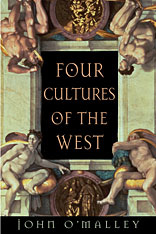 Four Cultures of the West
John W. O'Malley
Harvard University Press, 2006 The workings of Western intelligence in our day--whether in politics or the arts, in the humanities or the church--are as troubling as they are mysterious, leading to the questions: Where are we going? What in the world were we thinking? By exploring the history of four "cultures" so deeply embedded in Western history that we rarely see their instrumental role in politics, religion, education, and the arts, this timely book provides a broad framework for addressing these questions in a fresh way.
The cultures considered here originated in the ancient world, took on Christian forms, and manifest themselves today in more secular ways. These are, as John W. O'Malley identifies them: the prophetic culture that proclaims the need for radical change in the structures of society (represented by, for example, Jeremiah, Martin Luther, and Martin Luther King, Jr.); the academic culture that seeks instead to understand those structures (Aristotle, Aquinas, the modern university); the humanistic culture that addresses fundamental human issues and works for the common good of society (Cicero, Erasmus, and Eleanor Roosevelt); and the culture of art and performance that celebrates the mystery of the human condition (Phidias, Michelangelo, Balanchine).
By showing how these cultures, as modes of activity and discourse in which Western intelligence has manifested itself through the centuries and continues to do so, O'Malley produces an essay that especially through the history of Christianity brilliantly illuminates the larger history of the West.
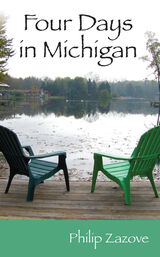 Four Days in Michigan: A Novel
Philip Zazove
Gallaudet University Press, 2012 As a young, deaf Jewish woman living in a small town in Michigan in 1942, Sandra Horowitz felt deeply frustrated by her limited prospects. Even though she had just graduated from junior college, she knew that she had two strikes against her in fulfilling her dream to become a veterinarian. Better to marry Jacob Winter, her parents urged her, a deaf Jewish man who made a good living. Then, Sandra met Rudy Townsend, a hearing soldier on leave before shipping out to the war in Europe. In just four days, both Sandra and Rudy’s worlds were turned upside down. Sandra’s parents feared him for being hearing and a Gentile, while Rudy’s parents expressed openly their bias against her ethnic background and her deafness. Even so, Sandra and Rudy soon realized that they had fallen in love, deeply and passionately. As they shared the brief time they had together, they learned about each other’s dreams for the future — Sandra’s desire to be a vet and Rudy’s determination to serve in Congress. Then, Rudy had to leave for the war. Philip Zazove’s novel Four Days in Michigan captures perfectly the power of irrepressible love between two individuals from opposite backgrounds. The struggles they encounter in an era when such differences were never more sharply drawn also reveal great detail about deaf and hearing life. Despite all, their triumph comes ultimately because of their long-lasting individual respect and love.
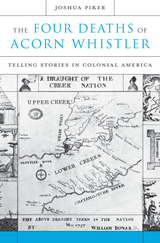 The Four Deaths of Acorn Whistler: Telling Stories in Colonial America
Joshua Piker
Harvard University Press, 2013 Who was Acorn Whistler, and why did he have to die? A deeply researched analysis of a bloody eighteenth-century conflict and its tangled aftermath, The Four Deaths of Acorn Whistler unearths competing accounts of the events surrounding the death of this Creek Indian. Told from the perspectives of a colonial governor, a Creek Nation military leader, local Native Americans, and British colonists, each story speaks to issues that transcend the condemned man’s fate: the collision of European and Native American cultures, the struggle of Indians to preserve traditional ways of life, and tensions within the British Empire as the American Revolution approached.
At the hand of his own nephew, Acorn Whistler was executed in the summer of 1752 for the crime of murdering five Cherokee men. War had just broken out between the Creeks and the Cherokees to the north. To the east, colonists in South Carolina and Georgia watched the growing conflict with alarm, while British imperial officials kept an eye on both the Indians’ war and the volatile politics of the colonists themselves. They all interpreted the single calamitous event of Acorn Whistler’s death through their own uncertainty about the future. Joshua Piker uses their diverging accounts to uncover the larger truth of an early America rife with violence and insecurity but also transformative possibility.
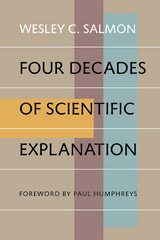 Four Decades of Scientific Explanation
Wesley C. Salmon
University of Pittsburgh Press, 2006
As Aristotle stated, scientific explanation is based on deductive argument--yet, Wesley C. Salmon points out, not all deductive arguments are qualified explanations. The validity of the explanation must itself be examined. Four Decades of Scientific Explanation provides a comprehensive account of the developments in scientific explanation that transpired in the last four decades of the twentieth century. It continues to stand as the most comprehensive treatment of the writings on the subject during these years.
Building on the historic 1948 essay by Carl G. Hempel and Paul Oppenheim, "Studies in the Logic of Explanation,” which introduced the deductive-nomological (D-N) model on which most work on scientific explanation was based for the following four decades, Salmon goes beyond this model's inherent basis of describing empirical knowledge to tells us “not only what, but also why.” Salmon examines the predominant models in chronological order and describes their development, refinement, and criticism or rejection.
Four Decades of Scientific Explanation underscores the need for a consensus of approach and ongoing evaluations of methodology in scientific explanation, with the goal of providing a better understanding of natural phenomena.
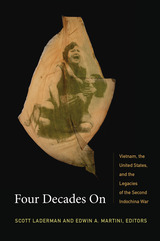 Four Decades On: Vietnam, the United States, and the Legacies of the Second Indochina War
Scott Laderman and Edwin A. Martini, eds.
Duke University Press, 2013 In Four Decades On, historians, anthropologists, and literary critics examine the legacies of the Second Indochina War, or what most Americans call the Vietnam War, nearly forty years after the United States finally left Vietnam. They address matters such as the daunting tasks facing the Vietnamese at the war's end—including rebuilding a nation and consolidating a socialist revolution while fending off China and the Khmer Rouge—and "the Vietnam syndrome," the cynical, frustrated, and pessimistic sense that colored America's views of the rest of the world after its humiliating defeat in Vietnam. The contributors provide unexpected perspectives on Agent Orange, the POW/MIA controversies, the commercial trade relationship between the United States and Vietnam, and representations of the war and its aftermath produced by artists, particularly writers. They show how the war has continued to affect not only international relations but also the everyday lives of millions of people around the world. Most of the contributors take up matters in the United States, Vietnam, or both nations, while several utilize transnational analytic frameworks, recognizing that the war's legacies shape and are shaped by dynamics that transcend the two countries.
Contributors. Alex Bloom, Diane Niblack Fox, H. Bruce Franklin, Walter Hixson, Heonik Kwon, Scott Laderman, Mariam B. Lam, Ngo Vinh Long, Edwin A. Martini, Viet Thanh Nguyen, Christina Schwenkel, Charles Waugh
Four Essays
Murray Anthony Potter
Harvard University Press
Four Essays on Romance
Herschel C. Baker
Harvard University Press, 1971 In his Introduction, Herschel Baker writes, “Although Romance, the dominant genre of secular literature throughout the later Middle Ages, has prompted floods of scholarship and speculation, it still bristles with unanswered problems of origin, development, and even definition.”
Helaine Newstead contributes “Malory and Romance”; A. Bartlett Giamatti, “Spenser: From Magic to Miracle”; Norman Rabkin, “The Holy Sinner and the Confidence Man: Illusion in Shakespeare’s Romances”; and Barbara K. Lewalski, “Milton: Revaluations of Romance.”
Four for a Quarter: Fictions
Michael Martone
University of Alabama Press, 2011 Normal0falsefalsefalseMicrosoftInternetExplorer4 Four is the magic number in Michael Martone’s Four for a Quarter. In subject—four fifth Beatles, four tie knots, four retellings of the first Xerox, even the sex lives of the Fantastic Four—and in structure—the book is separated into four sections, with each section further divided into four chapterettes— Four for a Quarter returns again and again to its originating number, making chaos comprehensible and mystery out of the most ordinary. Normal0falsefalsefalseMicrosoftInternetExplorer4
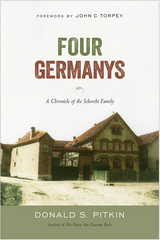 Four Germanys: A Chronicle of the Schorcht Family
Donald S. Pitkin
Temple University Press, 2016 In this last book by the late Donald Pitkin, author of The House that Giacomo Built, comes a story of the Schorcht family, through whose fortunes and struggles one can see the transformations of Germany through the long twentieth century. Each chapter of Four Germanys is reflective of generational rather than historical time. In 1922, Edwin Schorcht inherited his family farm, and in Part One, Pitkin traces the derivation of this farmstead. Part Two focuses on Schorcht’s children who came of age in Hitler’s Germany. Part Three has the Schorchts growing up in the Ulbricht years (1950–73) of the German Democratic Republic. The book concludes with the great-granddaughter, Maria, looking back to the past in relation to the new Germany that history had bequeathed her. Ultimately, Four Germanys reflects the impact of critical historical events on ordinary East Germans while it also reveals how one particular family managed its own historical adaptation to these events.
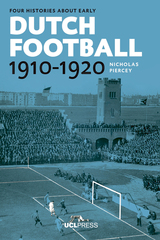 Four Histories about Early Dutch Football, 1910-1920: Constructing Discourses
Nicholas Piercey
University College London, 2016 What is the purpose of history today, and how can sporting research help us understand the world around us? In this stimulating book, Nicholas Piercey constructs four new histories of early Dutch football, exploring urban change, club members, the media, and the diaries of Cornelis Johannes Karel van Aalst, a stadium director, to propose practical examples of how history can become an important democratic tool for the 21st century. Using early Dutch football as a field for experimental thinking about the past, the four histories offer new insights into the lives, interests and passions of those connected to the sport in the 1910s and the cities they lived in. How did the First World War impact on Dutch football? Were new stadia a form of social control? Is the spread of the beautiful game really a good thing? And why was one of the sport’s most prominent figures more concerned with potatoes? These stories of early Dutch football suggest how vital sport and history can be in shaping our lives, perceptions and actions, and why we need to challenge the influence they have today. This book also includes a downloadable appendix. Download it here(.xlsx).
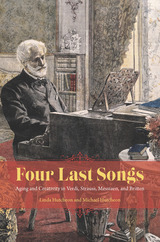 Four Last Songs: Aging and Creativity in Verdi, Strauss, Messiaen, and Britten
Linda Hutcheon and Michael Hutcheon
University of Chicago Press, 2015 Aging and creativity can seem a particularly fraught relationship for artists, who often face age-related difficulties as their audience’s expectations are at a peak. In Four Last Songs, Linda and Michael Hutcheon explore this issue via the late works of some of the world’s greatest composers.
Giuseppe Verdi (1813–1901), Richard Strauss (1864–1949), Olivier Messiaen (1908–92), and Benjamin Britten (1913–76) all wrote operas late in life, pieces that reveal unique responses to the challenges of growing older. Verdi’s Falstaff, his only comedic success, combated Richard Wagner’s influence by introducing young Italian composers to a new model of national music. Strauss, on the other hand, struggling with personal and political problems in Nazi Germany, composed the self-reflexive Capriccio, a “life review” of opera and his own legacy. Though it exhausted him physically and emotionally, Messiaen at the age of seventy-five finished his only opera, Saint François d’Assise, which marked the pinnacle of his career. Britten, meanwhile, suffering from heart problems, refused surgery until he had completed his masterpiece, Death in Venice. For all four composers, age, far from sapping their creative power, provided impetus for some of their best accomplishments.
With its deft treatment of these composers’ final years and works, Four Last Songs provides a valuable look at the challenges—and opportunities—that present themselves as artists grow older.
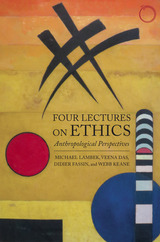 Four Lectures on Ethics: Anthropological Perspectives
Michael Lambek, Veena Das, Didier Fassin, and Webb Keane
HAU, 2015 Anthropology has recently seen a lively interest in the subject of ethics and comparative notions of morality and freedom. This masterclass brings together four of the most eminent anthropologists working in this field—Michael Lambek, Veena Das, Didier Fassin, and Webb Keane—to discuss, via lectures and responses, important topics facing anthropological ethics and the theoretical debates that surround it.
The authors explore the ways we understand morality across many different cultural settings, asking questions such as: How do we recognize the ethical in different ethnographic worlds? What constitutes agency and awareness in everyday life? What might an anthropology of ordinary ethics look like? And what happens when ethics approaches the political in both Western and non-Western societies. Contrasting perspectives and methods—and yet in complimentary ways—this masterclass will serve as an essential guide for how an anthropology of ethics can be formulated in the twenty-first century.
 The Four Little Dragons: The Spread of Industrialization in East Asia
Ezra F. Vogel
Harvard University Press, 1991 Japan and the four little dragons—Taiwan, South Korea, Hong Kong, and Singapore—constitute less than 1 percent of the world’s land mass and less than 4 percent of the world’s population. Yet in the last four decades they have become, with Europe and North America, one of the three great pillars of the modern industrial world order. How did they achieve such a rapid industrial transformation? Why did the four little dragons, dots on the East Asian periphery, gain such Promethean energy at this particular time in history?
Ezra F. Vogel, one of the most widely read scholars on Asian affairs, provides a comprehensive explanation of East Asia’s industrial breakthrough. While others have attributed this success to tradition or to national economic policy, Vogel’s penetrating analysis illuminates how cultural background interacted with politics, strategy, and situational factors to ignite the greatest burst of sustained economic growth the world has yet seen.
Vogel describes how each of the four little dragons acquired the political stability needed to take advantage of the special opportunities available to would-be industrializers after World War II. He traces how each little dragon devised a structure and a strategy to hasten industrialization and how firms acquired the entrepreneurial skill, capital, and technology to produce internationally competitive goods. Vogel brings masterly insight to the underlying question of why Japan and the little dragons have been so extraordinarily successful in industrializing while other developing countries have not. No other work has pinpointed with such clarity how institutions and cultural practices rooted in the Confucian tradition were adapted to the needs of an industrial society, enabling East Asia to use its special situational advantages to respond to global opportunities.
This is a book that all scholars and lay readers with an interest in Asia will want to read and ponder.
Four Masterworks of American Indian Literature: Quetzalcoatl, the Ritual of Condolence, Cuceb, the Night Chant
Edited by John Bierhorst
University of Arizona Press, 1984 "Bierhorst offers access to more than primary texts here: he maps a way of reading and the necessary apparatus for that reading (including pronunciation guides, reminding us they are oral performances)." —World Literature Today
"This comparative application of the epic poetry tradition to Amerind literature is a scholarly success.... this book is a most noteworthy item in the field of American Indian studies, and is not to be missed by any serious devotee." --Library Journal
"Biehorst's introductions and notes are brilliant, thorough, and an important contribution to the scholarship on these works. His new translation of the Quetzalcoatl is also excellent." --Choice
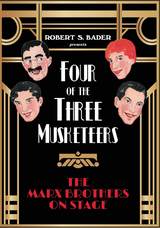 Four of the Three Musketeers: The Marx Brothers on Stage
Robert S. Bader
Northwestern University Press, 2022 An updated paperback version of the book heralded as “a new benchmark in Marx scholarship” by the Los Angeles Times
Before film made them international comedy legends, the Marx Brothers developed their comic skills on stage for twenty-five years. In Four of the Three Musketeers: The Marx Brothers on Stage, Robert S. Bader offers the first comprehensive history of the foursome’s hardscrabble early years honing their act in front of live audiences.
From Groucho’s debut in 1905 to their final live performances of scenes from A Night in Casablanca in 1945, the brothers’ stage career shows how their characters and routines evolved before their arrival in Hollywood. Four of the Three Musketeers draws on an unmatched array of sources, many not referenced elsewhere. Bader’s detailed portrait of the struggling young actors both brings to vivid life a typical night on the road for the Marx Brothers and illuminates the inner workings of the vaudeville business, especially during its peak in the 1920s.
As Bader traces the origins of the characters that would later come to be beloved by filmgoers, he also skillfully scrapes away the accretion of rumors and mythology perpetuated not only by fans and writers but by the Marx Brothers themselves. Revealing, vital, and entertaining, Four of the Three Musketeers has taken its place as an essential reference for this legendary American act. Now, the updated edition adds newly discovered performances—some submitted by readers—and additional information provided by descendants of long-departed vaudevillians mentioned in the book.
Four Places: A Play
Joel Drake Johnson
Northwestern University Press, 2009 Sketched together on a deceptively simple frame, this emotionally precise play uses its spare structure to devastating and darkly comic effect. A brother and sister have received word from their parents’ caretaker that their elderly parents may be a danger to each other. The brother breaks his routine to join his sister and mother on their weekly lunch date in hopes that together he and his sister can get a clearer picture of the situation. As the mother confronts the indignities of age and the children stare down a mounting list of losses and disappointments, an image of the family emerges that is true to life. Johnson gives readers an unwavering exploration of the ways that the love and knowledge family members have of one another creates both hurt and comfort.
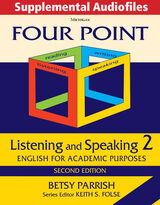 Four Point Listening and Speaking 2, Second Ed., Supplemental Audiofiles: Audio Download
Betsy Parrish
University of Michigan Press, 2014 These audiofiles accompany the content in Four Point: Listening-Speaking 2, Second Edition (978-0-472-03742-1). The 12 MP3 files include content that facilitates the use of the material presented in the textbook. The running time is 1:49:06.
This audio download product is NOT an audio reproduction of all the content in the accompanying textbook (Four Point: Listening & Speaking 2, Second Edition).
The Four Point series is designed for English language learners whose primary goal is to succeed in an academic setting.The series covers the four academic skills of reading, writing, listening, and speaking while providing reinforcement and systematic recycling of key vocabulary and further exposure to grammar issues. In order to participate in academic settings, English learners need focused activities to develop and then maintain their use of vocabulary and grammar. Each book in the series focuses heavily on vocabulary in particular, highlighting between 125-150 key vocabulary items including individual words, compound words, phrasal verbs, short phrases, idioms, metaphors, collocations, and longer set lexical phrases.
 Four Quartets: Poetry in the Pandemic
Edited by Jeffrey Levine and Kristina Marie Darling
Tupelo Press, 2020 In this timely anthology, established and emerging poets bear powerful witness to the COVID-19 pandemic in writing that reels from collective grief and uncertainty. This volume consists of sixteen separate chapbooks, and a collection of pandemic-era photography, which are unified by a shared narrative: public and private experiences of quarantine, and the impulse toward creation during a time of enormous upheaval, injustice, and protest. Each voice brings with it a deeply personal account of this globally historic moment, and in doing so, conveys the urgency of introspection, of isolation, and of revolution. These pieces feature B. A. Van Sise, Jimmy Santiago Baca, Yusef Komunyakaa, Laren McClung, Stephanie Strickland, Mary Jo Bang, Shane McCrae, Ken Chen, J. Mae Barizo, Dora Malech, Jon Davis, Lee Young-Ju, Jae Kim, Rachel Eliza Griffiths, A. Van Jordan, Maggie Queeney, Traci Brimhall, Brynn Saito, Denise Duhamel, and Rick Barot. This is a transcendent and ultimately transformative book of poetry written through the COVID-19 pandemic.
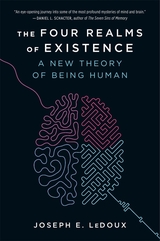 The Four Realms of Existence: A New Theory of Being Human
Joseph E. LeDoux
Harvard University Press, 2023 One of the world’s leading experts on mind and brain takes us on an expedition that reveals a new view of what makes us who we are.
Humans have long thought of their bodies and minds as separate spheres of existence. The body is physical—the source of aches and pains. But the mind is mental; it perceives, remembers, believes, feels, and imagines. Although modern science has largely eliminated this mind-body dualism, people still tend to imagine their minds as separate from their physical being. Even in research, the notion of the “self” as somehow distinct from the rest of the organism persists.
Joseph LeDoux argues that we have hit an epistemological wall—that ideas like the self are increasingly barriers to discovery and understanding. He offers a new framework of who we are, theorizing four realms of existence—bodily, neural, cognitive, and conscious.
The biological realm makes life possible. Hence, every living thing exists biologically. Animals, uniquely, supplement biological existence with a nervous system. This neural component enables them to control their bodies with speed and precision unseen in other forms of life. Some animals with nervous systems possess a cognitive realm, which allows the creation of internal representations of the world around them. These mental models are used to control a wide range of behaviors. Finally, the conscious realm allows its possessors to have inner experiences of, and thoughts about, the world.
Together, LeDoux shows, these four realms make humans who and what we are. They cooperate continuously and underlie our capacity to live and experience ourselves as beings with a past, present, and future. The result, LeDoux shows, is not a self but an “ensemble of being” that subsumes our entire human existence, both as individuals and as a species.
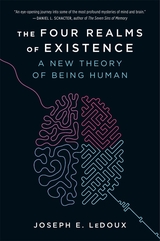 The Four Realms of Existence: A New Theory of Being Human
Joseph E. LeDoux
Harvard University Press A Seminary Co-op Notable Book
“A big picture perspective on the mind, decision-making, and consciousness…Provocative and stimulating.” —Philosophical Psychology
“LeDoux’s aim is to provide a new theory of being human by dividing our evolutionary past into four realms: biological at the bottom, then neurobiological, cognitive and conscious…Along the way are excellent accounts of the evolution of brain structures and cognitive abilities.” —New Scientist
“A rigorously scientific yet eminently readable exploration of what it means to be human.” —Publishers Weekly
Modern science has largely dispensed with mind-body dualism, yet people still tend to imagine their minds as separate from their physical being. Even researchers persistently presume a “self” somehow distinct from the rest of the organism.
Arguing that the self is a barrier to understanding, leading neuroscientist Joseph LeDoux offers a new framework based on four realms of existence: bodily, neural, cognitive, and conscious. Every living thing, whether bacterium or plant or animal, has a body. Animals alone then supplement such biological existence with a nervous system, which enables quick and precise control of the organism. Certain animals can also think and plan, and thus exist cognitively. Finally, some of the cognitive organisms have inner experiences of and thoughts about the world—the hallmarks of the conscious realm.
These four realms cooperate continuously to create the experience of a being with a past, present, and future. The result, LeDoux shows, is not a self but an “ensemble of being” that subsumes humans’ entire existence, both as individuals and as a species.
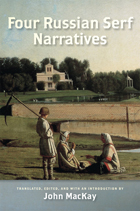 Four Russian Serf Narratives
Translated, edited, and with an introduction by John MacKay
University of Wisconsin Press, 2009 Although millions of Russians lived as serfs until the middle of the nineteenth century, little is known about their lives. Identifying and documenting the conditions of Russian serfs has proven difficult because the Russian state discouraged literacy among the serfs and censored public expressions of dissent. To date scholars have identified only twenty known Russian serf narratives.
Four Russian Serf Narratives contains four of these accounts and is the first translated collection of autobiographies by serfs. Scholar and translator John MacKay brings to light for an English-language audience a diverse sampling of Russian serf narratives, ranging from an autobiographical poem to stories of adventure and escape. “Autobiography” (1785) recounts a highly educated serf’s attempt to escape to Europe, where he hoped to study architecture. The long testimonial poem “News About Russia” (ca. 1849) laments the conditions under which the author and his fellow serfs lived. In “The Story of My Life and Wanderings” (1881) a serf tradesman tells of his attempt to simultaneously escape serfdom and captivity from Chechen mountaineers. The fragmentary “Notes of a Serf Woman” (1911) testifies to the harshness of peasant life with extraordinary acuity and descriptive power.
These accounts offer readers a glimpse, from the point of view of the serfs themselves, into the realities of one of the largest systems of unfree labor in history. The volume also allows comparison with slave narratives produced in the United States and elsewhere, adding an important dimension to knowledge of the institution of slavery and the experience of enslavement in modern times.
 Four Scraps of Bread
Magda Hollander-Lafon
University of Notre Dame Press, 2016 Born in Hungary in 1927, Magda Hollander-Lafon was among the 437,000 Jews deported from Hungary between May and July 1944. Magda, her mother, and her younger sister survived a three-day deportation to Auschwitz-Birkenau; there, she was considered fit for work and so spared, while her mother and sister were sent straight to their deaths. Hollander-Lafon recalls an experience she had in Birkenau: “A dying woman gestured to me: as she opened her hand to reveal four scraps of moldy bread, she said to me in a barely audible voice, ‘Take it. You are young. You must live to be a witness to what is happening here. You must tell people so that this never happens again in the world.’ I took those four scraps of bread and ate them in front of her. In her look I read both kindness and release. I was very young and did not understand what this act meant, or the responsibility that it represented.”
Years later, the memory of that woman’s act came to the fore, and Magda Hollander-Lafon could be silent no longer. In her words, she wrote her book not to obey the duty of remembering but in loyalty to the memory of those women and men who disappeared before her eyes. Her story is not a simple memoir or chronology of events. Instead, through a series of short chapters, she invites us to reflect on what she has endured. Often centered on one person or place, the scenes of brutality and horror she describes are intermixed with reflections of a more meditative cast. Four Scraps of Bread is both historical and deeply evocative, melancholic, and at times poetic in nature. Following the text is a “Historical Note” with a chronology of the author's life that complements her kaleidoscopic style. After liberation and a period in transit camps, she arrived in Belgium, where she remained. Eventually, she chose to be baptized a Christian and pursued a career as a child psychologist.
The author records a journey through extreme suffering and loss that led to radiant personal growth and a life of meaning. As she states: "Today I do not feel like a victim of the Holocaust but a witness reconciled with myself.” Her ability to confront her experiences and free herself from her trauma allowed her to embrace a life of hope and peace. Her account is, finally, an exhortation to us all to discover life-giving joy.
 Four Seasons of Flowers: A Selection of Botanical Illustrations from the Rare Book Collection at Dumbarton Oaks
Linda Lott
Harvard University Press Four Seasons of Flowers is an illustrated volume that presents a selection of the manuscripts, herbals, and printed botanical texts from the Rare Book Collection at Dumbarton Oaks. Representing pivotal works in the intellectual history of Europe from the sixteenth to the twentieth centuries, these drawings, books, and manuscripts are among the most significant materials conserved in the Rare Book Reading Room. They offer an illuminating overview of the history of botany as a modern science, from its inception to the present day. Each text is accompanied by a remarkable set of botanical illustrations. Their scientific accuracy and aesthetic beauty testify to the importance of the visual image once the efficacy of the printing press as an instrument for the furtherance of knowledge in the sciences and technology—from anatomy to zoology and from astronomy to botany—had been fully recognized. Botanical illustrations constitute an indispensable source of information for historians of not only botanical sciences but also garden and landscape architecture, thus shedding light on the study of plants in different periods, as well as on the evolution of the visual arts in areas where the representation of the plant world played a central role.
 Four Shakespearean Period Pieces
Margreta de Grazia
University of Chicago Press, 2021 In the study of Shakespeare since the eighteenth century, four key concepts have served to situate Shakespeare in history: chronology, periodization, secularization, and anachronism.
Yet recent theoretical work has called for their reappraisal. Anachronisms, previously condemned as errors in the order of time, are being hailed as alternatives to that order. Conversely chronology and periods, its mainstays, are now charged with having distorted the past they have been entrusted to represent, and secularization, once considered the driving force of the modern era, no longer holds sway over the past or the present.
In light of this reappraisal, can Shakespeare studies continue unshaken? This is the question Four Shakespearean Period Pieces takes up, devoting a chapter to each term: on the rise of anachronism, the chronologizing of the canon, the staging of plays “in period,” and the use of Shakespeare in modernity’s secularizing project.
To read these chapters is to come away newly alert to how these fraught concepts have served to regulate the canon’s afterlife. Margreta de Grazia does not entirely abandon them but deftly works around and against them to offer fresh insights on the reading, editing, and staging of the author at the heart of our literary canon.
Four Theories of the Press: The Authoritarian, Libertarian, Social Responsibility, and Soviet Communist Concepts of What the Press Should Be and Do
Fredrick S. Siebert, Theodore Peterson, and Wilbur Schramm
University of Illinois Press, 1956 Presented here are four major theories behind the functioning of the world's presses: (1) the Authoritarian theory, which developed in the late Renaissance and was based on the idea that truth is the product of a few wise men; (2) the Libertarian theory, which arose from the works of men like Milton, Locke, Mill, and Jefferson and avowed that the search for truth is one of man's natural rights; (3) the Social Responsibility theory of the modern day: equal radio and television time for political candidates, the obligations of the newspaper in a one-paper town, etc.; (4) the Soviet Communist theory, an expanded and more positive version of the old Authoritarian theory.
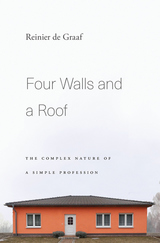 Four Walls and a Roof: The Complex Nature of a Simple Profession
Reinier de Graaf
Harvard University Press, 2017 A Financial Times Best Book of the Year
A Guardian Best Architecture Book of the Year
“Sharp, revealing, funny.”
—The Guardian
“An original and even occasionally hilarious book about losing ideals and finding them again… [De Graaf] deftly shows that architecture cannot be better or more pure than the flawed humans who make it.”
—The Economist
Architecture, we like to believe, is an elevated art form that shapes the world as it pleases. Four Walls and a Roof turns this fiction on its head, offering a candid account of what it’s really like to work as an architect. Drawing on his own tragicomic experiences in the field, Reinier de Graaf reveals the world of contemporary architecture in vivid snapshots: from the corridors of wealth in London, Moscow, and Dubai to the demolished hopes of postwar social housing in New York and St. Louis. We meet ambitious oligarchs, developers for whom architecture is nothing more than an investment, and layers of bureaucrats, consultants, and mysterious hangers-on who lie between any architect’s idea and the chance of its execution.
“This is a book about power, money and influence, and architecture’s complete lack of any of them… Witty, insightful and funny, it is a (sometimes painful) dissection of a profession that thinks it is still in control.”
—Financial Times
“This is the most stimulating book on architecture and its practice that I have read for years.”
—Architects’ Journal
 Four Years in Izumi
Lee Butler
University of Michigan Press, 2026 Four Years in Izumi takes an in-depth and critical approach to understanding Japanese village life through analysis of the diary of Kujō Masamoto, the former chancellor of the imperial court who resided briefly in one of his provincial estates from 1501 to 1504. For a high ranking courtier to travel to the countryside and manage a family estate was unheard of during the era of Sengoku, the “country at war.” The diary Masamoto kept offers a remarkably rich and vivid portrait of village Japan, which has seen no significant study in English-language scholarship.
Through extensive examination of the diary, and close and critical reading of it and complementary sources, Lee Butler provides a window into the inner workings of late medieval village life that challenges typical portrayals of the period. In Four Years in Izumi, we see the complexity of relations between commoners and elites in action. We also see the ways in which an estate functioned in practice at the heart of the medieval economy and local social structure.
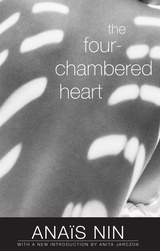 The Four-Chambered Heart
Anaïs Nin
Ohio University Press, 2023 The Four-Chambered Heart, Anaïs Nin’s 1950 novel, recounts the real-life affair she conducted with café guitarist Gonzalo Moré in 1936. Nin and Moré rented a house-boat on the Seine, and under the pervading influence of the boat’s watchman and Moré’s wife Helba, developed a relationship. Moré; named the boat Nanankepichu, meaning "not really a home." In the novel, which Nin drew from her experiences on the boat, the characters' sources are clear. Djuna is an embodiment of Nin herself. A young dancer in search of fulfillment, she encapsulates all that the author was striving for at that time. The character of Djuna features in other novels, perhaps weaving a directly autobiographical thread into Nin’s fiction. The gypsy musician, Rango, is therefore Moré, and his invalid wife is Zora. The old watchman is present as a force that, along with Zora, works against the lovers in their quest for happiness. Nin’s main concern throughout the novel is the "exterior," and how it affects the "interior." Water is a cleverly used theme. “I have no great fear of depths,” says Djuna, “and a great fear of shallow living.” Rango and Djuna’s relationship is, in effect, their effort to remain afloat. Often, Nin employs a stream of consciousness, especially in her flowing analyses of love, life and music, which continues the water image. Anaïs Nin’s writing is typically exquisite in its detail and texture. She describes Paris: its "black lacquered cobblestones" and "silver filigree trees." The "humid scarfs of fog" on the river, and "the sharp incense of roasted chestnuts" reveal their source through their reality: Nin’s personal experience.
 The Four-Chambered Heart: V3 in Nin's Continuous Novel
Anaïs Nin
Ohio University Press, 1959 The Four-Chambered Heart, Anaïs Nin’s 1950 novel, recounts the real-life affair she conducted with café guitarist Gonzalo Moré in 1936. Nin and Moré rented a house-boat on the Seine, and under the pervading influence of the boat’s watchman and Moré’s wife Helba, developed a relationship. Moré; named the boat Nanankepichu, meaning "not really a home."
In the novel, which Nin drew from her experiences on the boat, the characters are clearly based. Djuna is an embodiment of Nin herself. A young dancer in search of fulfillment, she encapsulates all that the author was striving for at that time. The character of Djuna features in other novels, perhaps weaving a directly autobiographical thread into Nin’s fiction. The gypsy musician, Rango, is therefore Moré, and his invalid wife is Zora. The old watchman is present as a force which, along with Zora, works against the lovers in their quest for happiness.
Nin’s main concern is the "outside," and how it affects the "interior." Water is a cleverly used theme. “I have no great fear of depths,” says Djuna, “and a great fear of shallow living.” Rango and Djuna’s relationship is, in effect, their effort to remain afloat. Often, Nin employs a stream of consciousness, especially in her flowing analyses of love, life and music, which continues the water image.
Anaïs Nin’s writing is typically exquisite in its detail and texture. She describes Paris: its "black lacquered cobblestones" and "silver filigree trees." The "humid scarfs of fog" on the river, and "the sharp incense of roasted chestnuts" reveal their source through their reality: Nin’s personal experience.
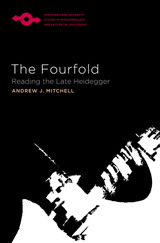 The Fourfold: Reading the Late Heidegger
Andrew J. Mitchell
Northwestern University Press, 2015 Heidegger’s later thought is a thinking of things, so argues Andrew J. Mitchell in The Fourfold. Heidegger understands these things in terms of what he names “the fourfold”—a convergence of relationships bringing together the earth, the sky, divinities, and mortals—and Mitchell’s book is the first detailed exegesis of this neglected aspect of Heidegger’s later thought. As such it provides entrée to the full landscape of Heidegger’s postwar thinking, offering striking new interpretations of the atomic bomb, technology, plants, animals, weather, time, language, the holy, mortality, dwelling, and more. What results is a conception of things as ecstatic, relational, singular, and, most provocatively, as intrinsically tied to their own technological commodification. A major new work that resonates beyond the confines of Heidegger scholarship, The Fourfold proposes nothing less than a new phenomenological thinking of relationality and mediation for understanding the things around us.
Fourteen Landing Zones: Approaches to Vietnam War Literature
Philip K. Jason
University of Iowa Press, 1991 It is in the spirit of the LZ that the essayists in Fourteen Landing Zones approach the writings of the Vietnam War. These fourteen diverse and powerful works by some of today's leading critics in Vietnam studies begin to answer the question of how we will filter the writings of the Vietnam War—including fiction, poetry, drama, and memoirs. What will survive the process of critical acclaim and societal affirmation—and why? Included is an incisive introduction by Jason that provides an overview of the burgeoning body of Vietnam War literature and its peculiar life in the literary and academic marketplace. This strong, often emotional volume will be of particular importance to all those interested in the literature of the Vietnam War, contemporary literature, and contemporary culture and history.
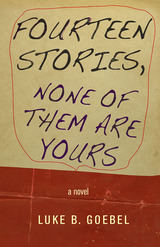 Fourteen Stories, None of Them Are Yours: A Novel
Luke B. Goebel
University of Alabama Press, 2014 A wild, sex-and-peyote-fueled road trip through heartbreak and the mythic American West, Fourteen Stories, None of Them Are Yours is a fever dream and cult classic of love, loss, and self-destruction. Goebel’s grief-stricken adrenalized alter ego goes on a cross-country search for his sanity—crashing through relationships, memories, and mania from New York to Texas, Puerto Rico to Los Angeles, spiraling through the wreckage of a love affair that won’t stay put. Grieving the sudden death of his brother and a past that won’t let go, the narrator must rewrite his own story before it devours him. At its heart, this is a raw reckoning with loss, abuse, and madness, told in lyrical prose that feels pulled from the heart of a bard on fire. With echoes of The Dharma Bums, The Chronology of Water, and The Catcher in the Rye, this is an untamed, confessional Künstlerroman—a howl of desire, dislocation, and the burning need to belong to a world that doesn’t even exist.
The Fourteenth Amendment: From Political Principle to Judicial Doctrine
William E. Nelson
Harvard University Press, 1988 In a remarkably fresh and historically grounded reinterpretation of the American Constitution, William Nelson argues that the fourteenth amendment was written to affirm the general public’s long-standing rhetorical commitment to the principles of equality and individual rights on the one hand, and to the principle of local self-rule on the other.
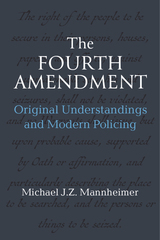 The Fourth Amendment: Original Understandings and Modern Policing
Michael J.Z. Mannheimer
University of Michigan Press, 2023 Police are required to obey the law. While that seems obvious, courts have lost track of that requirement due to misinterpreting the two constitutional provisions governing police conduct: the Fourth and Fourteenth Amendments. The Fourth Amendment forbids "unreasonable searches and seizures" and is the source of most constitutional constraints on policing. Although that provision technically applies only to the federal government, the Fourteenth Amendment, ratified in the wake of the Civil War, has been deemed to apply the Fourth Amendment to the States. This book contends that the courts’ misinterpretation of these provisions has led them to hold federal and state law enforcement mistakenly to the same constitutional standards. The Fourth Amendment was originally understood as a federalism, or “states’ rights,” provision that, in effect, required federal agents to adhere to state law when searching or seizing. Thus, applying the same constraint to the States is impossible. Instead, the Fourteenth Amendment was originally understood in part as requiring that state officials (1) adhere to state law, (2) not discriminate, and (3) not be granted excessive discretion by legislators. These principles should guide judicial review of modern policing. Instead, constitutional constraints on policing are too strict and too forgiving at the same time. In this book, Michael J.Z. Mannheimer calls for a reimagination of what modern policing could look like based on the original understandings of the Fourth and Fourteenth Amendments.
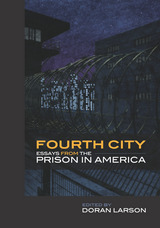 Fourth City: Essays from the Prison in America
Edited by Doran Larson
Michigan State University Press, 2014 At 2.26 million, incarcerated Americans not only outnumber the nation’s fourth-largest city, they make up a national constituency bound by a shared condition. Fourth City: Essays from the Prison in America presents more than seventy essays from twenty-seven states, written by incarcerated Americans chronicling their experience inside. In essays as moving as they are eloquent, the authors speak out against a national prison complex that fails so badly at the task of rehabilitation that 60% of the 650,000 Americans released each year return to prison. These essays document the authors’ efforts at self-help, the institutional resistance such efforts meet at nearly every turn, and the impact, in money and lives, that this resistance has on the public. Directly confronting the images of prisons and prisoners manufactured by popular media, so-called reality TV, and for-profit local and national news sources, Fourth City recognizes American prisoners as our primary, frontline witnesses to the dysfunction of the largest prison system on earth. Filled with deeply personal stories of coping, survival, resistance, and transformation, Fourth City should be read by every American who believes that law should achieve order in the cause of justice rather than at its cost.
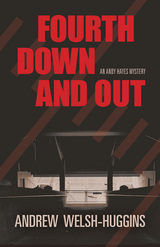 Fourth Down and Out: An Andy Hayes Mystery
Andrew Welsh-Huggins
Ohio University Press, 2015 The job seems easy enough at first for private investigator Andy Hayes: save his client’s reputation by retrieving a laptop and erasing a troublesome video from its hard drive. But that’s before someone breaks into Andy’s apartment in Columbus; before someone else, armed with a shotgun, relieves him of the laptop; and before the FBI suddenly shows up on his doorstep asking questions. Soon, there’s a growing list of people with a claim on the computer, all of them with secrets they don’t want uncovered. When one of those people ends up dead, Andy has his hands full convincing authorities he’s not responsible, while trying to figure out who is—and who’s got the laptop—before someone else dies. Soon the trail leads to the last place Andy wants to go: back to Ohio State University, where few have forgiven him for a mistake he made two decades earlier in his days as the Buckeyes’ star quarterback. That misjudgment sent him on a downward spiral that cost him a playing career, two marriages, several wrecked relationships, and above all his legacy in Ohio’s capital city, where the fortunes of the OSU team are never far from people’s minds. As Andy tracks a laptop and a killer from the toniest of the city’s suburbs to its grittiest neighborhoods, he must confront a dark figure from his past and prove that this time he won’t drop the ball.
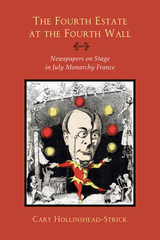 The Fourth Estate at the Fourth Wall: Newspapers on Stage in July Monarchy France
Cary Hollinshead-Strick
Northwestern University Press, 2019 New media are often greeted with suspicion by older media. The Fourth Estate at the Fourth Wall explores how, when the commercial press arrived in France in 1836, popular theater critiqued its corruption, its diluted politics, and its tendency to orient its content toward the lowest common denominator.
July Monarchy plays, which provided affordable entertainment to a broad section of the public, constitute a large, nearly untapped reservoir of commentary on the arrival of the forty-franc press. Vaudevilles and comedies ask whether journalism that benefits from advertisement can be unbiased. Dramas explore whether threatening to spread false news is an acceptable way for journalists to exercise their influence. Hollinshead-Strick uses both plays and novels to show that despite their claims to enlighten their readers, newspapers were often accused of obscuring public access to information. Balzac’s interventions in this media sphere reveal his utopian views on print technology. Nerval’s and Pyat’s demonstrate the nefarious impact that corrupt theater critics could have on authors and on the public alike.
Scholars of press and media studies, French literature, theater, and nineteenth-century literature more generally will find this book a valuable introduction to a cross-genre debate about press publicity that remains surprisingly resonant today.
 Fourth Genre 17, no. 1
Laura Julier
Michigan State University Press Journals, 2015 IN THIS ISSUE
Editor's Note
Winner, 2014 Fourth Genre Steinberg Essay Prize
David Zoby, “My Brother Arrives in Kansas”
Runner-Up, 2014 Fourth Genre Steinberg Essay Prize
Beth Richards, “Fight”
Essays
Liz Falvey, “Ultimate Gifts”
Gina Troisi, “The Angle of Flickering Light”
Dawn S. Davies, “Band-Aid Wrappers at the Bottom of the Bin: A Soliloquy”
Molly Beer, “On Nativity”
Re’Lynn Hansen, “Race This Race”
Carolyn Flynn, “Resurrection”
Emily Bradley, “The Gravity of Marble”
Gary Garvin, “Above the Roofs of Paris, a Non-Memoir”
Gail Seneca, “Waiting for the Bomb”
Aurvi Sharma, “Poetry, KY”
Melissa L. Sevigny, “Shallow Roots”
Essay with Commentary
Patrick Madden, “Spit”
Patrick Madden, “Commentary on ‘Spit’: Transmuting the Ruder World into the Finer”
Writer as Reader
Robin Silbergleid, “Pregnant Pauses: Re-reading Carole Maso’s The Room Lit by Roses”
Review Essays
“Inter-Review: Jen Percy and Leslie Jamison Talk with Each Other about Their New Books”
Randon Billings Noble, “Many Ways of Seeing, Many Ways of Saying”
Fred Arroyo, “Listening to Memory”
Paul Haney, “The Burroway House”
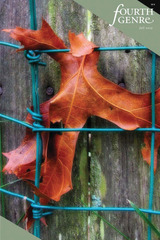 Fourth Genre 17, no. 2
Laura Julier
Michigan State University Press Journals, 2015 IN THIS ISSUE
Editor's Note
Honoring Judith Kitchen
Kate Carroll de Gutes, “Learning To Be on the Page: The Generosity and Insight of Judith Kitchen”
Sonja Livingston, “Hypotenuse Blue”
Lia Purpura, “No Distance, All Directions: On ‘Displacement,’ from Distance and Direction”
Brenda Miller, “Considering Judith Kitchen”
Fleda Brown, “Judith Kitchen’s Uncertainty Principle”
Dinah Lenney, “Like One of Those Songs that You Can’t Get Out of Your Head”
Joe Mackall, “The Breathing Green of Judith Kitchen”
Stan Sanvel Rubin, “End with a Question: Reflections on Judith Kitchen’s Aesthetic and Achievement”
Essays
Cate Hennessey, “Beets”
Jericho Parms, “Origins”
Stephen D. Gutierrez, “Hopper at the Train Yard”
Jad Adkins, “Airborne”
Brandel France de Bravo, “Transutopia”
Kelley Shinn, “Airy Nothings”
Diane Glancy, “Selections from An Act of Disobedience”
Nona Kennedy Carlson, “Behind the Wheel”
Laurel DiGangi, “The Club”
Mary Kudenov, “Threadbare”
Lauren Crux, “Good Enough. For Now.”
Fabienne Sylvia Josaphat, “Bitter in the Mouth”
Hayley Katzen, “Bachelor Brothers”
Lynna Williams, “Where We Are”
Essay with Commentary
Dawn S. Davies, “Pie”
Dawn S. Davies, “Commentary on ‘Pie’: Secrecy, Honesty, and Creative Nonfiction”
Writer as Reader
Doug Hesse, “Teaching a Stone to Read”
Review Essays
Anne Panning, “A Remembrance of Things Present: The Circus Train by Judith Kitchen”
Joyce Meier, “On Love, Language, and Loss”
Susan F. O’Neill, “Transformations”
Clinton Crockett Peters, “Plumbing the Tide”
“Inter-Review: Sarah Gorham and Ladette Randolph Talk with Each Other About Their New Books”
 Fourth Genre 18, no. 1
Laura Julier
Michigan State University Press Journals, 2016 IN THIS ISSUE
Editor's Note
Winner, 2015 Fourth Genre Steinberg Essay Prize
Kaitlyn Teer, “Ossification”
Essays
Denise Duhamel and Julie Marie Wade, “Sixteen Forecasts”
Kathryn U. Hulings, “Light”
Michael Chaney, “Is the Cartoonal Violent?”
Mimi Dixon, “Anesthesia”
Molly Tranberg, “How to Build a Fortress”
Mira Dougherty-Johnson, “Recapitulation Theory”
Jacob M. Appel, “Why Get There from Here?”
Rachael Perry, “The Sand Dunes: An Elegy”
Lawrence Lenhart, “Too Slow Is How That Tortoise Go: A Carapace in 37 Parts”
Jane Bernstein, “The Incident in My Park”
Deborah Thompson, “Brother Sammy”
Essays with Commentary
Katherine E. Standefer, “Animalis: References for a Body, One Winter”
Katherine E. Standefer, “Breaking the Body: On the Writing of ‘Animalis’”
Lina M. Ferreira Cabeza-Vanegas, “The Peach Orchard”
Lina M. Ferreira Cabeza-Vanegas, “On ‘The Peach Orchard’”
Writer as Reader
Dawn S. Davies, “Disquiet and the Lyric Essay”
Review Essays
William Bradley, “The Accidental Ann Landers”
Eric LeMay, “‘I—The First Ever to Do So’”
Holly Welker, “Based on a True Story”
Michael Martone and Wendy S. Walters, “Inter-Review: Michael
Martone and Wendy S. Walters Talk with Each Other about Their New Books”
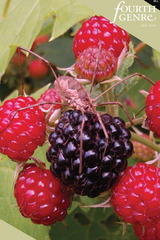 Fourth Genre 18, no. 2
Laura Julier
Michigan State University Press Journals, 2016 IN THIS ISSUE
Editor's Note
Essays
Michael Ramos, “A Long but Incomplete List of Some of the Things You Can’t (Don’t) Talk About”
Victoria Blanco, “Desert Race”
Sharon Stephenson, “On Marie Curie and Me”
Nick Neely, “Gone Rogue”
Henry Wei Leung, “This Quintessence of Dust”
Laurel Nakanishi, “88 Temples”
Jane Molinary, “The Storm That’s Always Happening to Everyone”
Brad Modlin, “A Game of Owaré”
T. Stores, “White Out”
Karen Gordon, “My Hair Is the Problem”
Michael Reid Busk, “September 11: Green and White”
Davis Webster, “Wyo.”
Kathryn Winograd, “Skyglow”
Hyewon Jin Grigoni, “Go Well”
Marin Sardy, “The Dragon at the Bottom of the Sea”
Jill Storey, “Safe Passage”
Essays with Commentary
Justin Lawrence Daugherty and Jill Talbot, “On Place, an Instruction”
Jill Talbot and Justin Lawrence Daugherty, “Place Is Heavy in Us: Commentary on ‘On Place, an Instruction’”
Writer as Reader
Mary Swander, “The Marginal World”
Review Essays
Alexis Paige, “Marrying the Personal and the Political”
Kate Carroll de Gutes, “Small Press, Big Impact: A Roundup of Small, Independent, and University Presses that Publish Creative Nonfiction”
Penny Guisinger, “Flying into Flagstaff, Listening to the Heart”
Holly Welker, “Good Human Animals Make a Good Family”
Patrick Madden, “The Indomitable Max”
 Fourth Genre 19, no. 1
Laura Julier
Michigan State University Press Journals, 2017 IN THIS ISSUE
Editor’s Note
Winner, 2016 Fourth Genre Steinberg Essay Prize
Molly Gallentine, “Powder House”
Essays
Wilfredo Pascual, “Terminus” (Contest runner-up)
Cherise Morris, “blk girls x-ing”
Jen Palmares Meadows, “Otolith”
Isaac Anderson, “Before Green”
Will Jennings, “Such as Ground, So Close to Air”
Nina Boutsikaris, “This One Long Winter”
Anna Louise Peterson, “My Undoing”
A. Sandosharaj, “Hot Dog Curry”
TaraShea Nesbit, “Paper Nests”
Margot Anne Kelley, “Earthbound”
Cameron Kenny, “Just a Teardown Anyway”
Ruth Gila Berger, “The Skin Changes Quickly”
Essay and Commentary
Bruce Ballenger, “Return to the Typewriter”
Bruce Ballenger, “The Gestalt of Revision: Commentary on ‘Return to the Typewriter’”
Writer as Reader
181 Ryan Van Meter, “Safekeeping”
Review Essays
Mary Cappello and Patrick Madden, “Inter-Review”
Renée E. D’Aoust, “The Life-Affirming Essay”
DeWitt Henry, “Sacred Viewing”
Ned Stuckey-French, “Lifeboat”
Fourth Genre 19, no. 2
Laura Julier
Michigan State University Press Journals, 2017 IN THIS ISSUE
Editor’s Note
Essays
Ira Sukrungruang, “Yummy”
Micah Ling, “I Imagine Blood”
Ember Johnson, “Dissolution”
Leslie Maxwell, “Some May Be Infi nite”
Kevin Honold, “Spring Arrives in the Gobi”
Chauna Craig, “States of Emergency”
S. Isabel Choi, “The Natural Order of Things”
Kerry Muir, “Toxic Malibu: An Ode”
Qinglan Wang, “Homeloss”
Jennifer Rose, “Buff alo, 1971”
JP Hyzy, “Taxonomy”
Sandell Morse, “Brown Leather Satchel”
Rosanna N. Henderson, “Firewood”
Writer as Reader
David Hamilton, “A Certain Arc”
Dale Rigby, “On Rimrocking Right”
On the Lyric Essay
Desirae Matherly, “Prose, Essay, Lyric”
Travis Scholl, “Reading Lyric: Essay and Archive”
Beth Peterson, “The Lyric Invitation”
Review Essays
Kathleen Livingston, “The Poetics of Leaving a Place”
Bob Cowser, Jr., “The Act and Practice of Love”
Anne Panning and Ned Stuckey-French, “Criminal: A Conversation & Review”
 Fourth Genre 20, no. 1
Laura Julier
Michigan State University Press Journals, 2018 In this issue:
Editor’s Note
Winner, 2017 Fourth Genre Steinberg Essay Prize
Sue D. Burton, “Box Set”
Essays
Melissa Stephenson, “Attachment Therapy”
Victor Yang, “Sardine Parties”
Michaela Hansen, “Goats”
Anne Liu Kellor, “Popo”
Joey Franklin, “Not in My Backyard”
Alysia Sawchyn, “Dog Brain”
Melissa Ferrone, “Whale Fall”
Jody L. Keisner, “The Maternal Lizard Brain”
Kristin Collier, “Emily in the Ocean”
Amy Zimmerman, “Don’t Fucking Touch Me”
Katie Karnehm-Esh, “What Waiting Looks Like”
Sara Greenslit, “What’s Not There”
Essay and Commentary
Laura Jones, “My Life in Movies”
Laura Jones, “Commentary on the Graphic Memoir”
Writer as Reader
Julene Bair, “So Slight a Thing as a Word: Reflections on Marilynne Robinson”
Review Essays
Renée E. D’Aoust, “Alpine Heart” (Review of Alpine Apprentice: A Memoir, by Sarah Gorham)
Anita Darcel Taylor, “She Finally Gets Her Close-Up” (Review of A Mother’s Tale, by Phillip Lopate)
Ned Stuckey-French, “A Mind Thinking” (Reviews of Epistolophilia: Writing the Life Ona Šimaitė, by Julija Šukys and Siberian Exile: Blood, War, and a Granddaughter’s Reckoning,
by Julija Šukys
Fourth Genre 20, no. 2
Laura Julier
Michigan State University Press Journals, 2018 Editor's Note
"Please Have the Conversation"
Essays
Sheree L. Greer, “Bars”
Katherine Levie, “Behind the Plastic Curtain”
Jessica Yen, “Tributary”
Alice Hatcher, “General Grant Wore a Pink Dress”
Ben Nickol, “Caffè Americano”
E. C. Salibian, “White Petals”
Tom Montgomery Fate, “Fishing for My Father”
Julie Marie Wade, “Still Life with Guns”
Terrance Wedin, “Learning to Drive”
Rashaun J. Allen, “Everyone Laughs”
John T. Price, “Appendicized”
Essay with Commentary
Maribeth Fischer, “She and I”
Maribeth Fischer, “Writing about My Sister: A Commentary on ‘She and I’”
An Essay on Nonfiction
Francesca Rendle-Short, Quinn Eades, Barrie Jean Borich, Peta Murray, Lawrence Lacambra Ypil, “Nonfiction as Queer Aesthetic: Score for Five Speakers in Two Acts”
Review Essays
Renée E. D’Aoust, “Best Friends”
Patrick Madden, “The Essay-Lover’s Guide to Brian Doyle”
About the Contributors
 Fourth Genre 21, no. 1
Laura Julier
Michigan State University Press Journals, 2018 In This Issue
Editor's Note
Winner, 2018 Fourth Genre Steinberg Essay Prize
Erica Berry, "Like a Shipwreck"
Runner-Up, 2018 Fourth Genre Steinberg Essay Prize
Annie Sheppard, "We at Old Birds Welcome Messages from God, Even if Unverifiable
Essays
Willow Naomi Curry, "Starting Over"
Michele Morano, "Vocabulary for a Nervous Heart"
Sarah Capdeville, "How to Use a Crosscut Saw"
Gretchen Legler, "Hunters: A Meander"
Martha Lundin, "The Bound Body"
Emily W. Blacker, "My Wife’s Sandwich"
Sean Ironman, "Saluda"
E. A. Giorgi, "Intimacy"
Daniel Allen Cox, "Headstrong"
Arra Ross, "Fringed Gentian: Notes of a Flower Watcher"
Jessica McCaughey, "Not, of Course, Their Mothers"
Vince Granata, "The Devil’s Greatest Trick"
Sue Fagalde Lick, "Golden Fire"
Suzanne Fernandez Gray, "Wayne’s"
Essay on the Form
John T. Price, "Thoreau’s 'The Bean-Field'"
Review Essays
Sonya Huber and Mimi Schwartz, "Inter-Review"
Angela Morales and Sarah Virens, "Inter-Review"
Timothy Hillegonds, "Images, Landscapes, and the Restrained Alchemy of Short Prose"
 Fourth Genre 21, no. 2
Laura Julier
Michigan State University Press Journals, 2019 In This Issue
Editor’s Note, “Silences”
Essays
K. Mikey Borgard, “Constellation of Grace”
Steven Harvey, “Autumn Hours”
Traci Brimhall, “Intimacy: A Bestiary”
Jarek Steele, “Man in the Mirror”
Matthew Schultz, “The News”
Sheryl St. Germain, “A Story about Breasts”
Josina Cooper Guess, “Everyone Carries”
Achas Burin, “Love in a Time of Dementia”
Jaclyn Moyer, “Didi”
Jeff Oaks, “Having Given Up”
Brett Armes, “An American Drilling”
Liz Green, “Hold On”
Joanna Brichetto, “House Wren”
Zach Jacobs, “All the Times We’ve Died”
Ashwak Fardoush, “The Fragility of All Things”
Toni Mirosevich, “Feral Memory”
Roundtable
Dawn Davies, Maribeth Fischer, Vince Granata, EJ Levy, Kathleen Livingston, Kerry Reilly, Sheryl St. Germain, Marin Sardy, and Melissa Stephenson, “Writing about Others: A (Continued) Conversation”
Review Essays
Karen Babine and Julija Šukys, “Inter-Review”
Robert Cocanougher, “I’m Your Puppet”
Paul Haney, “The Lifelong Conversation”
 Fourth Genre 22, no. 1
Laura Julier
Michigan State University Press Journals, 2020 In This Issue
Editors’ Notes
Laura Julier
Joey Franklin and Patrick Madden
Winner, 2019 Fourth Genre Steinberg Essay Prize
Marco Verdoni, “When to Tell Someone You Went to Prison”
Essays
Ana Maria Spagna, “Massacre”
Jo Hooste, “The Middle Way”
Arianne Zwartjes, “Notes on Bewilderment”
James Allen Hall, “Rescue Me”
Prachi Priyam, “Suppose This Is Globe”
Jason Thayer, “In the Shadow of a Mountain”
Amy Wright, “Circle of Willis”
Cameron Quan Louie, “Visions”
Lindsay Wilson, “A Few Songs as One”
Anastasia Walker, “Memory’s Disavowed Daughter”
Shara McCallum, “Not Sound but the Memory of Sound”
Fátima Policarpo, “Speak, Body”
Cuifen Chen, “Jennifer”
Emily Waples, “The Ridgeway”
Joshua Doležal, “Syruping”
Beth Cleary, “Bird Hearts”
Molly Rideout, “Flight Officer Carl George Larsen (Feb 22, 1921–Aug 31, 1943): Union Cemetery, Columbus, Ohio”
Jacob Little, “Going to Gooseberry Falls”
Review Essays
Timothy J. Hillegonds and Kate Carroll de Gutes, “Embodying Masculinity: Two Writers on Gender, Binaries, and Moving Beyond”
Timothy J. Hillegonds, The Distance Between: A Memoir
Nancy DeJoy, “Memoir as Process: Something Other than Remembering”
Helen Macdonald, H is for Hawk
Rebecca Solnit, The Faraway Nearby
Kate Carroll de Gutes, “On Reckoning with White Privilege and the Black Struggle to Survive”
Saeed Jones, How We Fight for Our Lives: A Memoir
Kiese Laymon, Heavy: An American Memoir
 Fourth Genre 22, no. 2
Patrick Madden
Michigan State University Press Journals, 2020 In This Issue
Editors’ Note
Patrick Madden and Joey Franklin, “Untimely”
Essays
Danielle Cadena Deulen, “Driving Lessons”
Mary Mullen, “Mr. Moon”
Benjamín Naka-Hasebe Kingsley, “Home/boy”
David Lazar, “Martin Balsam: The Best Possible Arnold Burns”
Nellie Croy Smith, “I Went to the City in the Year of the Flood”
Peter Wayne Moe, “To Flense”
Jacqueline Doyle, “On Being Told That Her First Husband”
Helena Rho, “The Korean Woman”
Laura Johnsrude, “Finishing the Breast (or, Four Bras a Year)”
Jan Shoemaker, “A Crack in Everything”
Phillip Sterling, “Between Kennel and Creek”
Elizabeth M. Dalton, “Burying Molly”
Tyler Lewke, “American Crow ( Corvus brachyrhynchos)”
Anna Whiteside, “All My Little Deaths”
Mike Yunxuan Li, “A Diff erent Kind of Mind Palace”
Jordi Doce, translated by Steven J. Stewart, “Aphorisms: From Perros en la playa (Dogs on the Beach)”
Marianne Manzler, “On the Making of a Mumu”
John Patrick McShea, “Fear and the Mesa (South on Utah State Route 261)”
Rod Rosenquist, “Ladies and Gentlemen: The Steelhead”
Christine McSwain, “Excavation of a Car Crash”
Nora Seilheimer, “A Bind”
Review Essays
A. Kendra Greene and Fowzia Karimi, “Inter-Review: On the Objects of Memory and Where Text Meets Image on the Page”
Fowzia Karimi, Above Us the Milky Way
A. Kendra Greene, The Museum of Whales You Will Never See
Sue William Silverman and Gail Griffin, “Inter-Review: A Conversation about Memoir-in-Essays, Memory, and Survival”
Gail Griffin, Grief’s Country: A Memoir in Pieces
Sue William Silverman, How to Survive Death and Other Inconveniences
Patrick Madden, “Addendum to the Essay-Lover’s Guide to Brian Doyle”
Brian Doyle, One Long River of Song: Notes on Wonder
About the Contributors
 Fourth Genre 23, no. 1
Patrick Madden
Michigan State University Press Journals, 2021 In This Issue
Editors’ Note
Joey Franklin and Patrick Madden, “The Audacity of the Essay”
Winner, 2020 Fourth Genre Steinberg Memorial Essay Prize
Sean Enfield, “The Revolution Will Be Revised”
Essays
Negesti Kaudo, “Marginalia”
Anne P. Beatty, “The Daily Cover”
Carol Claassen, “Three Wishes for the Missing Man’s Daughter”
Darius Stewart, “Rogue Soldier”
J. Malcolm Garcia, “In Those Days”
Kelly Magee, “Eleven Ways to Carry: A Self-Quiz in Real Time”
Mary O. Parker, “Sanctuary”
Nathaniel Perry, “Already Wide Enough: Edward Arlington Robinson and the Lives of Others”
Ryan Dennis, “The Sparrow and the Robot”
Jacquelyn Thomas, “Mystery Readers”
Suzanne Farrell Smith, “In the Clouds”
Kristin Barendsen, “How to Live Thin”
Debra Marquart, “At 79, My Mother Decides to Plant Trees”
Clinton Crockett Peters, “Love in the Valley of Death”
Writer as Reader
Jenny Spinner, “Rooting the Black Essay: Gertrude Bustill Mossell (1855–1948)”
Gertrude Bustill Mossell, “Our Women in Journalism”
Review Essays
Kate Carroll de Gutes, “Activist, Essayist, Poet, Woman, Black”
Shayla Lawson, This Is Major: Notes on Diana Ross, Dark Girls, and Being Dope
Sarah Pape, “‘A Period of Interval’: Two Books on the Pandemic”
Zadie Smith, Intimations
Rick Barot, During the Pandemic
About the Contributors
 Fourth Genre 23, no.2
Patrick Madden
Michigan State University Press Journals, 2021 In This Issue
Editors’ Note
Joey Franklin and Patrick Madden, “Perseverance”
Essays
Nicole Graev Lipson, “Very Nice Blastocysts”
Christin Marie Taylor, “The Elements of Style: Lessons in Gender and Race”
Zlatina G. Sandalska, “Lace”
Sarah Fawn Montgomery, “Descendant”
Sarah Haak, “After the Flood”
Catherine Jagoe, “Voracious”
Allison Vrbova, “Laundry Days”
Jane Campbell, “This Is My Body”
Susan Moldaw, “My Big Toe and Your Big Toe”
Ann Keniston, “Synecdochic: On My Mother’s Autopsy”
Cynthia Ezell, “Every Set of Three”
Jody Keisner, “Runaway Mother”
Leslie Jernegan, “Lifelines, Hammocks”
Robert Erle Barham, “A True Account”
Maisie Wiltshire-Gordon, “Endless Particulars”
Vyshali Manivannan, “Chaos Itself Is an Order”
Johannah Racz Knudson, “Anthony Bourdain at Chernobyl”
Maddie Norris, “On the Love of Hills”
Bret Lott, “One Night in Umbria”
Review Essays
David Lazar and Joanna Eleftheriou, “Inter-Review”
Joanna Eleftheriou, This Way Back
David Lazar, Celeste Holm Syndrome: On Character Actors from Hollywood’s Golden Age
Cait West, “Leaving Patriarchy, Writing New Stories”
Megan Phelps-Roper, Unfollow: A Memoir of Loving and Leaving Extremism
Alice Greczyn, Wayward: A Memoir of Spiritual Warfare & Sexual Purity
Caitlin Myer, Wiving: A Memoir of Loving Then Leaving the Patriarchy
About the Contributors
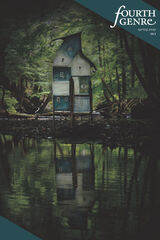 Fourth Genre 24, no. 1
Patrick Madden
Michigan State University Press Journals, 2022 Editors’ Note
Patrick Madden and Joey Franklin, “Hesitations”
Winners, 2021 Fourth Genre Steinberg Memorial Essay Prize
Jacob M. Appel, “Cousin Marvin’s Secret”
Matthew Morris, “Fucked Fable”
Essays
Nichole LeFebvre, “The Beginning of Memory: January 2020”
Emily Arnason Casey, “There Is No Loneliness Like Theirs”
Mariah Burton Nelson, “The Fun Mother and Her Lovely Assistant”
Heather Quinn, “The Wound of Time”
Sara Mansfield Taber, “A Bowl of Cream of Wheat: Memoir of a Moment”
Craig Bernardini, “A Forgivable Enthusiasm”
Kathryn Britanny Jackson, “I Am Not All the Way Here”
Jennifer Delahunty, “Future Perfect”
Jax Connelly, “Must Have Been a Lie”
Bethany Ericson, “At Times I Didn’t Drown”
Cynthia Salter, “Unlisted”
Beth Alvarado, “Bloomsbury in Winter—2020”
Zoe Fowler, “Sifting”
Kate Martin Rowe, “Full vs. Empty”
Photo Essay
Anne McGrath and Robert Hite, “Imagined Histories”
Review Essays
Kate Carroll de Gutes, “In Praise of Refusing the Questions”
Melissa Faliveno, TomboyLand
Raechel Anne, Rust Belt Femme
Tarn Wilson, In Praise of Inadequate Gifts
Catherine Carberry, “Revolution and Power in Puerto Rican Nonfiction”
Nelson Denis, War Against All Puerto Ricans
Jaquira Diaz, Ordinary Girls
Laura Julier, “Shaping Loss and Love: The Essay Projects of Carl Klaus”
The Ninth Decade: An Octogenarian’s Chronicle
Letters to Kate: Life After Life
Taking Retirement: A Beginner’s Diary
Weathering Winter: A Gardener’s Daybook
My Vegetable Love: A Journal of a Growing Season
About the Contributors
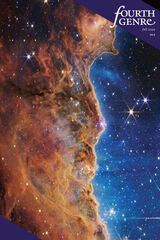 Fourth Genre 24, no. 2
Patrick Madden
Michigan State University Press Journals, 2022 In This Issue
Editors’ Note
Patrick Madden and Joey Franklin, “Carina, Carina”
Essays
Paula Carter, “Care”
Miriam Camitta, “Necessary for Life”
D. Dina Friedman, “Communication Lake”
J.D. Scrimgeour, “Unfinished Painting”
Sarah Gorham, “‘Perchoo,’ or the Music of Mourning”
Kristine Langley Mahler, “Home Trap”
Shiva Saboori, “Moman’s Secret Agenda”
Siobhan Harvey, “What We Remember, What We Forget: (Or: The Comfort of Confabulation)”
Rohini Harvey, “Press 4 for Emotional Support”
Joel Wachman, “Duck”
Jill McCabe Johnson, “You Hold the Hand”
James M. Hessler, “Ranch Life: The Knuckled Calf”
Laura J. Rose, “Rapture”
Jeff Weyant, “Sons of Telamon”
Gray Hilmerson, “My Mind Was a Military Sky”
Sarah Myers, “They Don’t Tell You”
Hannah White, “Renovations”
Madeleine Barowsky, “On Loving Clothes, and Preferring Not To”
Phillip Sterling, “Diving Lessons: A Memoir / The Critical Edition”
Collaborative Essay
David Carlin, Sophie Cunningham, Alvin Pang, and Jessica L. Wilkinson, “Essaying the Impasse”
Review Essays
Jennifer Brennock, “The Word ‘Mother’ Is a Verb”
Nicole Chung, All You Can Ever Know
Megan Culhane Galbraith, The Guild of the Infant Saviour
Karen Pickell, An Adoptee Lexicon
Timothy J. Hillegonds, “On the Stories and Substance of Our Addictions”
Anna Lembke, Dopamine Nation: Finding Balance in the Age of Indulgence
Gina Troisi, The Angle of Flickering Light: A Memoir
Hannah D. Markley, “Conversations as Vessels and Anchors”
Brenda Miller and Julie Marie Wade, Telephone: essays in two voices
Amy Wright, Paper Concert: A Conversation in the Round
About the Contributors
 Fourth Genre 25, no. 1
Patrick Madden
Michigan State University Press Journals, 2023 Contents
Editors’ Note
Joey Franklin and Patrick Madden, “A Break in the Clouds”
Winner, 2022 Fourth Genre Steinberg Memorial Essay Prize
Peggy Shinner, “The Rest Is History”
Essays
Melissa Lauer, “Watching Clotho”
Michael J. Hess, “The Jim Croce Question”
Kabi Hartman, “Nipple Day”
Joanne Jacobson, “Garden Hunter”
Karen Babine, “Rhapsody in Turquoise”
Erin Wisti, “On Earth and in My House”
Elaine Herrick Lee, “Four Elegies: For My Grandparents, and the Twentieth Century”
Allison Ellis, “Crossings”
Jocelyn Winn, “A Craft Essay on Trauma”
Erin Langner, “Seeing Pink”
Margaret Nowaczyk, “Sensorium”
Cara Stoddard, “Overlay”
Chris Arthur, “A Kist o’ Whistles”
Tanya Bomsta, “Against the End of the World: for Kari Norgaard”
James Sullivan, “Chart Notes”
Annie Penfield, “Shoulder Season”
Steven Church, “Jumping Sharks”
Patrick Hicks, “The Borderlands”
Review Essays
Hannah D. Markley, “‘To the Widest Imagination’”
Victoria Chang, Dear Memory: Letters on Writing, Silence, and Grief
Jana Larson, Reel Bay: A Cinematic Essay
Aisha Sabatini Sloan, Borealis: An Essay
Paul Haney, “One by One, the Stars: Ned’s Triumph”
John T. Price and Tom Montgomery Fate, “Inter-Review”
Tom Montgomery Fate, The Long Way Home: Detours and Discoveries
John T. Price, All Is Leaf: Essays and Transformations
About the Contributors
 Fourth Genre: Twenty-Five Essays from Our First Twenty-Five Years
Joey Franklin
Michigan State University Press, 2025 Fourth Genre: Twenty-Five Essays from Our First Twenty-Five Years is an anthology of outstanding creative nonfiction published since the journal’s first issue in 1999. Describing it as an anthology, though, feels too dry for this collection. Is it a mixtape, maybe? A literary festival or a potluck? A mosaic of voices, a tapestry, or an open mic? This volume includes essays on grief and guns, prayer and parenthood, fear and family, race and religion, hometowns and home cooking. It features stories from parents, teachers, scholars, activists, and artists, told in voices that represent white, Black, brown, gay, straight, transgender, and immigrant experiences. Ordinary people engaged in the extraordinary act of humble self-reflection, all wrestling with issues, big and small, trusting in the power of the personal to reveal essential truths about all of us. Each essay comes paired with writing prompts and a reflective note from the author that reveals their personal creative process, inviting readers to begin their own journeys of discovery. Whether you’re here to teach, learn, or just savor fine writing, this book will remind you that life, in all its strange, wonderful, heartbreaking, devastating beauty and trauma, is always worth writing about.
The Fourth Great Awakening and the Future of Egalitarianism
Robert William Fogel
University of Chicago Press, 2000 Robert William Fogel was awarded the Nobel Prize in Economic Science in 1993.
"To take a trip around the mind of Robert Fogel, one of the grand old men of American economic history, is a rare treat. At every turning, you come upon some shiny pearl of information."—The Economist
In this broad-thinking and profound piece of history, Robert William Fogel synthesizes an amazing range of data into a bold and intriguing view of America's past and future—one in which the periodic Great Awakenings of religion bring about waves of social reform, the material lives of even the poorest Americans improve steadily, and the nation now stands poised for a renewed burst of egalitarian progress.
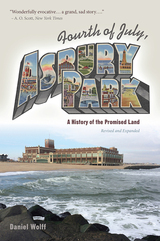 Fourth of July, Asbury Park: A History of the Promised Land
Daniel Wolff
Rutgers University Press, 2022 Bruce Springsteen brought international attention to the Jersey shore by naming his debut album Greetings from Asbury Park, NJ. But the real Asbury Park has an even more fascinating story behind it: a seaside city of dreams that became a magnet for both the best and worst of America, playing host to John Philip Sousa, Count Basie, and Dr. Martin Luther King, as well as the mob and the Ku Klux Klan.
Fourth of July, Asbury Park tells the tale of the city’s first 150 years, guiding us through the development of its lavish amusement parks and bandstands, as well as the decay of its working-class neighborhoods and spread of its racially-segregated ghettos. Featuring exclusive interviews with Springsteen and other prominent Asbury Park residents, Daniel Wolff uncovers the history of how this Jersey shore resort town came to epitomize both the promises of the American dream and the tragic consequences when those promises are broken.
Hailed by The New York Times as a “wonderfully evocative…grand, sad story” when first published in 2006, this revised and expanded edition considers how Asbury Park has changed in the twenty-first century, experiencing both gentrification and new forms of segregation.
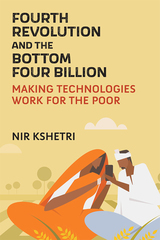 Fourth Revolution and the Bottom Four Billion: Making Technologies Work for the Poor
Nir Kshetri
University of Michigan Press, 2023 Products and services based on advanced technologies such as artificial intelligence and blockchain are normally considered to be for rich consumers in advanced countries. Fourth Revolution and the Bottom Four Billion demonstrates how marginalized and vulnerable groups with limited resources can also benefit from these technologies. Nir Kshetri suggests that the falling costs and the increased ease of developing and deploying applications based on these technologies are making them more accessible. He illustrates how key emerging technologies are transforming major industries and application areas such as healthcare and pandemic preparedness, agriculture, finance, banking, and insurance. The book also looks at how these transformations are affecting the lives of low-income people in low- and middle-income countries and highlights the areas needing regulatory attention to adequately protect marginalized and vulnerable groups from the abuse and misuse of these technologies. Kshetri discusses how various barriers such as the lack of data, low resource languages, underdeveloped technology infrastructures, lack of computing power and shortage of skill and talent have hindered the adoption of these technologies among marginalized and vulnerable groups. Fourth Revolution and the Bottom Four Billion suggests that it is the responsibility of diverse stakeholders—governments, NGOs, international development organizations, academic institutions, the private sector, and others—to ensure that marginal groups also benefit from these transformative innovations.
Fowling Piece: Poems
Heidy Steidlmayer
Northwestern University Press, 2012 Winner, 2013 Kate Tufts Discovery Award
Winner, 2012 John C. Zacharias First Book Award for best debut book by a Ploughshares writer A remarkably mature first collection of poems, Heidy Steidlmayer’s Fowling Piece is the debut of a highly original voice. As they search for meaning in both the extraordinary and the everyday, these poems, in exquisitely compressed language, display a fierce attention to the history of individual words and a surprising wit. In Steidlmayer's poetic landscape, words strike the reader as at once familiar and exotic, becoming instruments through which she is able to access and make sense of the most profound, irreducible aspects of human experience. Her mastery of and experiments in form are exceptional for a poet of any age. Fowling Piece offers the rare gift of a new poet whose work is truly new.
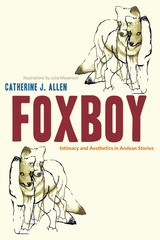 Foxboy: Intimacy and Aesthetics in Andean Stories
By Catherine J. Allen
University of Texas Press, 2011 Once there was a Quechua folktale. It begins with a trickster fox's penis with a will of its own and ends with a daughter returning to parents who cannot recognize her until she recounts the uncanny adventures that have befallen her since she ran away from home. Following the strange twists and turnings of this tale, Catherine J. Allen weaves a narrative of Quechua storytelling and story listening that links these arts to others—fabric weaving, in particular—and thereby illuminates enduring Andean strategies for communicating deeply felt cultural values. In this masterful work of literary nonfiction, Allen draws out the connections between two prominent markers of ethnic identity in Andean nations—indigenous language and woven cloth—and makes a convincing case that the connection between language and cloth affects virtually all aspects of expressive culture, including the performing arts. As she explores how a skilled storyteller interweaves traditional tales and stock characters into new stories, just as a skilled weaver combines traditional motifs and colors into new patterns, she demonstrates how Andean storytelling and weaving both embody the same kinds of relationships, the same ideas about how opposites should meet up with each other. By identifying these pervasive patterns, Allen opens up the Quechua cultural world that unites story tellers and listeners, as listeners hear echoes and traces of other stories, layering over each other in a kind of aural palimpsest.
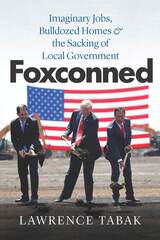 Foxconned: Imaginary Jobs, Bulldozed Homes, and the Sacking of Local Government
Lawrence Tabak
University of Chicago Press, 2021 Powerful and resonant, Foxconned is both the definitive autopsy of the Foxconn fiasco and a dire warning to communities and states nationwide.
When Wisconsin governor Scott Walker stood shoulder to shoulder with President Trump and Speaker of the House Paul Ryan at the White House in July 2017, they painted a glorious picture of his state’s future. Foxconn, the enormous China-based electronics firm, was promising to bring TV manufacturing back to the United States with a $10 billion investment and 13,000 well-paying jobs. They actually were making America great again, they crowed.
Two years later, the project was in shambles. Ten thousand construction workers were supposed to have been building what Trump had promised would be “the eighth wonder of the world.” Instead, land had been seized, homes had been destroyed, and hundreds of millions of municipal dollars had been committed for just a few hundred jobs—nowhere near enough for Foxconn to earn the incentives Walker had shoveled at them. In Foxconned, journalist Lawrence Tabak details the full story of this utter collapse, which was disturbingly inevitable.
As Tabak shows, everything about Foxconn was a disaster. But worse, he reveals how the economic incentive infrastructure across the country is broken, leading to waste, cronyism, and the steady transfer of tax revenue to corporations. Tabak details every kind of financial chicanery, from eminent domain abuse to good old-fashioned looting—all to benefit a coterie of consultants, politicians, and contractors. With compassion and care, he also reports the distressing stories of the many individuals whose lives were upended by Foxconn.
 Foxes for Everybody: Twenty-Four Hours of Early Motherhood
Catherine Pierce
Northwestern University Press, 2026 Meditations on time, motherhood, and the ordinary beauty of everyday life
Like a newborn’s patterns of sleeping and waking, the revelations of motherhood don’t follow a reasonable schedule, and there’s no clocking out. Organized around the hours of the day, Foxes for Everybody gives voice to the marvels, fears, absurdities, and astonishments of parenthood. These essays offer twenty-four glimpses into how we experience time, our families, our planet, and all of those small moments that aren’t small at all. In memories and reflections that weave through tornadoes and jellyfish, cemeteries and carousels, mortality, mental health, and the exquisite gift of a perfect sentence, acclaimed writer Catherine Pierce reminds us that fear and joy can and do live side by side, and urges us to stay awake—even when, especially when, we’re at the brink of exhaustion—to the possibility of wonder.
The Foxie Otter Site: A Multicomponent Occupation North of Lake Huron
Christopher C. Hanks
University of Michigan Press, 1988 In this volume, the author reports on the excavation and interpretation of the Foxie Otter Site, a large archaeological site on Fox Lake in Ontario, Canada. This site, which was used by native people for about 7,000 years, contains one of the longest archaeological records in the Upper Great Lakes.
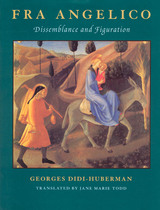 Fra Angelico: Dissemblance and Figuration
Georges Didi-Huberman
University of Chicago Press, 1995 The traditional story of Renaissance painting is one of inexorable progress toward the exact representation of the real and visible. Georges Didi-Huberman disrupts this story with a new look—and a new way of looking—at the fifteenth-century painter Fra Angelico. In doing so, he alters our understanding of both early Renaissance art and the processes of art history.
A Florentine painter who took Dominican vows, Fra Angelico (1400-1455) approached his work as a largely theological project. For him, the problems of representing the unrepresentable, of portraying the divine and the spiritual, mitigated the more secular breakthroughs in imitative technique. Didi-Huberman explores Fra Angelico's solutions to these problems—his use of color to signal approaching visibility, of marble to recall Christ's tomb, of paint drippings to simulate (or stimulate) holy anointing. He shows how the painter employed emptiness, visual transformation, and displacement to give form to the mystery of faith.
In the work of Fra Angelico, an alternate strain of Renaissance painting emerges to challenge rather than reinforce verisimilitude. Didi-Huberman traces this disruptive impulse through theological writings and iconographic evidence and identifies a widespread tradition in Renaissance art that ranges from Giotto's break with Byzantine image-making well into the sixteenth century. He reveals how the techniques that served this ultimately religious impulse may have anticipated the more abstract characteristics of modern art, such as color fields, paint spatterings, and the absence of color.
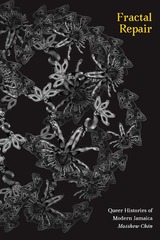 Fractal Repair: Queer Histories of Modern Jamaica
Matthew Chin
Duke University Press, 2024 In Fractal Repair, Matthew Chin investigates queerness in Jamaica from early colonial occupation to the present, critically responding to the island’s global reputation for extreme homophobia and anti-queer violence. Chin advances a theory and method of queer fractals to bring together genealogies of queer and Caribbean formation. Fractals—a kind of geometry in which patterns repeat but never exactly in the same way—make visible shifting accounts of Caribbean queerness in terms of race, gender, and sexual alterity. Drawing on this fractal orientation, Chin assembles and analyzes multigenre archives, ranging from mid-twentieth-century social science studies of the Caribbean to Jamaica’s National Dance Theatre Company to HIV/AIDS organizations, to write reparative histories of queerness. Chin’s proposal of a fractal politics of repair invests in the horizon of difference that repetition materializes, and it extends reparations discourses intent on overcoming the past and calculating economic compensation for survivors of violence.
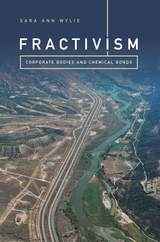 Fractivism: Corporate Bodies and Chemical Bonds
Sara Ann Wylie
Duke University Press, 2018 From flammable tap water and sick livestock to the recent onset of hundreds of earthquakes in Oklahoma, the impact of fracking in the United States is far-reaching and deeply felt. In Fractivism Sara Ann Wylie traces the history of fracking and the ways scientists and everyday people are coming together to hold accountable an industry that has managed to evade regulation. Beginning her story in Colorado, Wylie shows how nonprofits, landowners, and community organizers are creating novel digital platforms and databases to track unconventional oil and gas well development and document fracking's environmental and human health impacts. These platforms model alternative approaches for academic and grassroots engagement with the government and the fossil fuel industry. A call to action, Fractivism outlines a way forward for not just the fifteen million Americans who live within a mile of an unconventional oil or gas well, but for the planet as a whole.
Fracture
Susan Cummins Miller
Texas Tech University Press, 2011 Geologist Frankie MacFarlane and P.I. Philo Dain, just back from Afghanistan, are packing for an R&R trip to a cooler clime when Philo’s Aunt Heather is murdered in her empty Tucson mansion. Her husband, wealthy developer Derek Dain, is the prime suspect. The day before, Heather had left town with the Dain coin collection, worth millions. Now it's missing. Though Philo and his uncle haven’t spoken in years, Philo and Frankie agree to backtrack Heather on a quest that takes them from the sun-baked Tucson Basin to the foggy San Francisco Peninsula. Among California’s fault-scarred hills they uncover painful secrets from Philo’s past—and clues to a mysterious chess set worthy of kings, long protected by one family and long coveted by another. A treasure worth killing for—but who will survive to claim it?
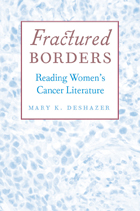 Fractured Borders: Reading Women's Cancer Literature
Mary K. DeShazer
University of Michigan Press, 2010 Women have been writing about cancer for decades, but since the early 1990s, the body of literature on cancer has increased exponentially as growing numbers of women face the searing realities of the disease and give testimony to its ravages and revelations.
Fractured Borders: Reading Women's Cancer Literature surveys a wide range of contemporary writing about breast, uterine, and ovarian cancer, including works by Marilyn Hacker, Margaret Edson, Carole Maso, Audre Lorde, Eve Sedgwick, Mahasweta Devi, Lucille Clifton, Alicia Ostriker, Jayne Anne Phillips, Terry Tempest Williams, and Jeanette Winterson, among many others. DeShazer's readings bring insights from body theory, performance theory, feminist literary criticism, French feminisms, and disability studies to bear on these works, shining new light on a literary subject that is engaging more and more writers.
"An important and useful book that will appeal to people in a variety of fields and walks of life, including scholars, teachers, and anyone interested in this subject."
--Suzanne Poirier, University of Illinois at Chicago
"A book on a timely and important topic, wisely written beyond scholarly boundaries and crossing many theoretical and disciplinary lines."
--Patricia Moran, University of California, Davis
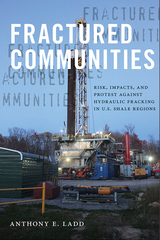 Fractured Communities: Risk, Impacts, and Protest Against Hydraulic Fracking in U.S. Shale Regions
Ladd, Anthony E.
Rutgers University Press, 2017 While environmental disputes and conflicts over fossil fuel extraction have grown in recent years, few issues have been as contentious in the twenty-first century as those surrounding the impacts of unconventional natural gas and oil development using hydraulic drilling and fracturing techniques—more commonly known as “fracking”—on local communities. In Fractured Communities, Anthony E. Ladd and other leading environmental sociologists present a set of crucial case studies analyzing the differential risk perceptions, socio-environmental impacts, and mobilization of citizen protest (or quiescence) surrounding unconventional energy development and hydraulic fracking in a number of key U.S. shale regions. Fractured Communities reveals how this contested terrain is expanding, pushing the issue of fracking into the mainstream of the American political arena.
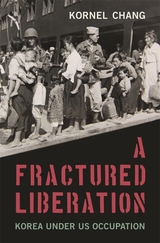 A Fractured Liberation: Korea under US Occupation
Kornel Chang
Harvard University Press, 2025 Shortlist, Cundill History Prize
A poignant return to Korea’s forgotten “Asian Spring”—a moment ripe with possibility denied by the postwar US military occupation.
When Japanese imperial rule ended in August 1945, the Korean peninsula erupted with hopes that had been bottled up for forty years. New mother Chŏn Sukhŭi marveled at the news, envisioning her son growing up free in an independent Korea. Yi Ilchae, who only days before had been drafted into the Japanese army, threw himself into union activism. An electrifying excitement jolted Koreans into action everywhere. Peasants occupied Japanese-owned farmlands, workers seized control of factories, and women demanded political and economic equality.
A Fractured Liberation brings to vivid life the brief but intense moment in postwar Korea when anything seemed possible, but nothing was guaranteed. The country had been abruptly split into US and Soviet military occupation zones, but, as Kornel Chang shows, ordinary people threw themselves into achieving self-governance throughout a unified Korea. The mostly left-leaning efforts were bolstered by an eclectic group of American supporters, including New Deal liberals, Christian socialists, and trade unionists.
The Koreans’ greatest obstacle, however, proved to be the US military government in the south and its rigidly anti-communist leadership. Despite promising liberation from the hated Japanese-imposed institutions, the US occupation government under General John R. Hodge hired back Koreans who had worked for the Japanese to do the dirty work of curbing protests and muzzling reformers. As concern over the budding superpower rivalry with the Soviet Union overshadowed the Koreans’ democratic aspirations, the United States increasingly narrowed the possibilities for Korean independence, helping to cement the North-South divide and ensure decades of authoritarian rule on both sides.
 Fractured Politics: Peruvian Democracy Past and Present
Edited by John Crabtree
University of London Press, 2011 Latin American opinion surveys consistently point to Peruvian citizens' deep distrust of their elected rulers and democratic institutions. The 2011 presidential and legislative elections in Peru, along with the regional and municipal polls of the previous year,showed once again the degree of political fragmentation in contemporary Peru andthe weakness of its party system. Fractured Politics examines the history of political exclusion in Peru, the weaknessof representative institutions, and the persistence of localized violent protest. It also evaluates the contribution of institutional reforms in bridging the gap between state and society, including Peru's Law on Political Parties, administrative decentralization, and the experience of the Defensor, or ombudsman's office. The chapters, by leading scholars of Peruvian politics, emerge from a conference, held in 2009 in Saint Antony's College Oxford. Julio Cotler, from the Instituto de Estudios Peruanos (IEP), was the keynote speaker.
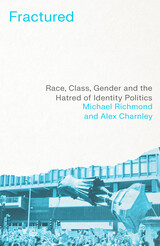 Fractured: Race, Class, Gender and the Hatred of Identity Politics
Michael
Pluto Press, 2022 Identity politics has smeared political discourse for over a decade. The right uses it to lament the loss of free speech, while many on the left bemoan that it will be the end of class politics. It has been used to dismiss movements such as Black Lives Matter and brought seemingly progressive people into the path of fascism. It has armed the march of the transphobes. In Fractured, the authors move away from the identity politics debate. Instead of crudely categorizing race, gender, and sexuality as 'identities', or forcing them under the heading of 'diversity', they argue that the interconnectedness of these groupings has always been inseparable from the history of class struggle under British and American capitalism. Through an appraisal of pivotal historical moments in Britain and the US, and a sharp look at contemporary debates, the authors tame the frenzied culture war, offering a refreshing and reasoned way to understand how class struggle is formed and creating the possibilities for new forms of solidarity in an increasingly fractured world.
 Fractured Rebellion: The Beijing Red Guard Movement
Andrew G. Walder
Harvard University Press, 2012 Fractured Rebellion is the first full-length account of the evolution of China’s Red Guard Movement in Beijing, the nation’s capital, from its beginnings in 1966 to its forcible suppression in 1968. Andrew Walder combines historical narrative with sociological analysis as he explores the radical student movement’s crippling factionalism, devastating social impact, and ultimate failure.
Most accounts of the movement have portrayed a struggle among Red Guards as a social conflict that pitted privileged “conservative” students against socially marginalized “radicals” who sought to change an oppressive social and political system. Walder employs newly available documentary evidence and the recent memoirs of former Red Guard leaders and members to demonstrate that on both sides of the bitter conflict were students from comparable socioeconomic backgrounds, who shared similar—largely defensive—motivations. The intensity of the conflict and the depth of the divisions were an expression of authoritarian political structures that continued to exert an irresistible pull on student motives and actions, even in the midst of their rebellion.
Walder’s nuanced account challenges the main themes of an entire generation of scholarship about the social conflicts of China’s Cultural Revolution, shedding light on the most tragic and poorly understood period of recent Chinese history.
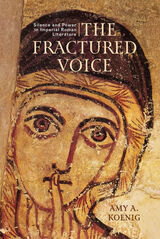 The Fractured Voice: Silence and Power in Imperial Roman Literature
Amy A. Koenig
University of Wisconsin Press, 2023 Imperial Rome privileged the elite male citizen as one of sound mind and body, superior in all ways to women, noncitizens, and nonhumans. One of the markers of his superiority was the power of his voice, both literal (in terms of oratory and the legal capacity to represent himself and others) and metaphoric, as in the political power of having a “voice” in the public sphere. Muteness in ancient Roman society has thus long been understood as a deficiency, both physically and socially.
In this volume, Amy Koenig deftly confronts the trope of muteness in Imperial Roman literature, arguing that this understanding of silence is incomplete. By unpacking the motif of voicelessness across a wide range of written sources, she shows that the Roman perception of silence was more complicated than a simple binary and that elite male authors used muted or voiceless characters to interrogate the concept of voicelessness in ways that would be taboo in other contexts. Paradoxically, Koenig illustrates that silence could in fact be freeing—that the loss of voice permits an untethering from other social norms and expectations, thus allowing a freedom of expression denied to many of the voiced.
Fractures
Carlos Andrés Gómez
University of Wisconsin Press, 2020 In his landmark debut, Carlos Andrés Gómez interrogates race, gender, sexuality, and violence to explore some of the most pressing issues of our time. These poems address the complexities and nuances of toxic masculinity, assimilation, homophobia, and the joy and anguish of trying to raise Black children in America. Gómez casts an uncompromising eye toward both brutality and tenderness, going where we are most uncomfortable and lingering in moments of introspection that reveal fear, grief, or hatred. Birthed at a breaking point, these poems carve open silence, revealing fissures that welcome the light. Unflinching, poignant, and powerful, Fractures is both a gut punch and a balm.
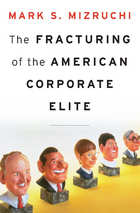 The Fracturing of the American Corporate Elite
Mark S. Mizruchi
Harvard University Press, 2013 In the aftermath of a financial crisis marked by bank-friendly bailouts and loosening campaign finance restrictions, a chorus of critics warns that business leaders have too much influence over American politics. Mark Mizruchi worries about the ways they exert too little. The Fracturing of the American Corporate Elite advances the surprising argument that American CEOs, seemingly more powerful today than ever, have abrogated the key leadership role they once played in addressing national challenges, with grave consequences for American society.
Following World War II, American business leaders observed an ethic of civic responsibility and enlightened self-interest. Steering a course of moderation and pragmatism, they accepted the legitimacy of organized labor and federal regulation of the economy and offered support, sometimes actively, as Congress passed legislation to build the interstate highway system, reduce discrimination in hiring, and provide a safety net for the elderly and needy. In the 1970s, however, faced with inflation, foreign competition, and growing public criticism, corporate leaders became increasingly confrontational with labor and government. As they succeeded in taming their opponents, business leaders paradoxically undermined their ability to act collectively. The acquisition wave of the 1980s created further pressures to focus on shareholder value and short-term gain rather than long-term problems facing their country.
Today’s corporate elite is a fragmented, ineffectual group that is unwilling to tackle the big issues, despite unprecedented wealth and political clout. Mizruchi’s sobering assessment of the dissolution of America’s business class helps explain the polarization and gridlock that stifle U.S. politics.
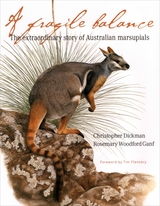 A Fragile Balance: The Extraordinary Story of Australian Marsupials
Christopher Dickman
University of Chicago Press, 2007
Marsupials are nearly synonymous with Australia. Although one of these enigmatic pouched mammals—the opossum—inhabits the United States and another 80 or so thrive in South America, some 220 species are confined to the Australasian region. In Australia, marsupials are the most diverse and dominant indigenous species, from the wallaby and the wombat to the kangaroo and koala.
The extraordinary story of these fascinating animals, A Fragile Balance provides the most up-to-date information on marsupials without losing sight of the unique set of circumstances that led them to prevalence Down Under. Covering all marsupial species in Australia, the book uses an evolutionary framework to interpret the marsupial’s biological traits. Each species account includes a basic biological description, a range map, and a measure of conservation status. The accounts are bounded by general chapters on biology, natural history, cultural history, and conservation. A Fragile Balance is the first book to emphasize interactions between and among marsupials, as well as between humans and marsupials.
Combining the expertise of renowned biologist Christopher Dickman with the artistic talents of illustrator Rosemary Woodford Ganf, A Fragile Balance will be a much celebrated reference for mammalogists worldwide, as well as for readers interested in Australian natural and cultural history.
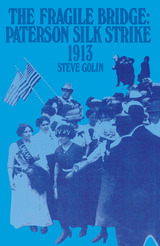 The Fragile Bridge: Paterson Silk Strike, 1913
Steve Golin
Temple University Press, 1992 "The book ranks with the finest products of the new labor history.... A significant contribution to debates over the role of ethnicity, gender, and skill in American labor history, it also enhances our understanding of American intellectual life in the early twentieth century."
--Journal of Economic History
In this full-length study of the 1913 Paterson silk strike, Steve Golin examines the creative collaboration between the silk workers, organizers from the Industrial Workers of the World, and Greenwich Village intellectuals. Although the strike was defeated, this alliance could become a model for the American left because it suggests the possibilities of connecting economic, political, and cultural struggles.
Combining perspectives from labor history, social history, and intellectual history Golin argues that while the silk workers began the 1913 strike and controlled it themselves, the IWW helped them create institutions that supported the strike and reinforced its radically democratic character. The deadlock in Paterson dictated the need for a "bridge" to New York that was facilitated by a growing mutual trust between the Wobblies and intellectuals from Greenwich Village. At the height of the struggle, the IWW and the Village radicals joined the workers in presenting a powerful strike pageant in Madison Square Garden.
The story of the 1913 silk strike is important because it challenges long-held conservative assumptions about labor history, including the elitist role of skilled workers, the bureaucratic function of union organization, and the irrelevance of intellectuals. Although the strikers were ultimately defeated, the strike's failure had more damaging consequences for the IWW and the intellectuals than for the workers themselves and Golin views this loss as a major turning point for the American left.
"Golin offers a major reinterpretation of the Paterson strike as a turning point in the history of American radical culture.... More than other labor historians, Golin approaches his subject from a cultural and intellectual perspective."
--The Journal of American History
"Golin has provided us with a pioneering work that demands a fundamental reinterpretation of the Paterson strike, one that finally accords the workers themselves the historical recognition that their extraordinary effort so richly deserves."
--Labor History
"Steve Golin presents an enthusiastic, politically engaged analysis of the strike. His beautifully written study demonstrates how a detailed narrative of a limited historical episode can throw a spotlight on broader issues in the history of American workers...a significant contribution to labor history."
--Union Labor News
"[Golin] makes his case with rich details that bring the whole dramatic series of events to life."
--Labour/Le Travail
"[Golin] has restored the 'fragile bridge' of the Paterson strike that fused at and class consciousness, and he has constructed new bridges between the scholarly domains of social and cultural history and between the 'moment' of 1913, so filled with revolutionary promise, and our own time."
--International Review of Social History
"An excellent book.... Golin's exciting, moving, informative book reminds us that social history is something not only to be written and read, but to be made."
--Zeta Magazine
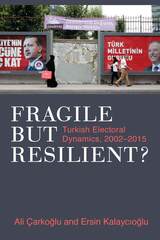 Fragile but Resilient?: Turkish Electoral Dynamics, 2002-2015
Ali Çarkoglu and Ersin Kalaycioglu
University of Michigan Press, 2021 Ersin Kalaycıoğlu and Ali Çarkoğlu, who conducted surveys comparable to the American National Election Survey for the 2002 and 2015 national elections in Turkey, chart the dynamics that brought the pro-Islamist conservative Justice and Development Party (Adalet ve Kalkınma Partisi-AKP) to power in 2002, and that continue to influence electoral politics. The authors trace the uneven course of democratization in Turkey, as revealed through elections, since the first competitive, multi-party elections in 1950. Since the market liberalization reforms of 1980, Turkey has been rapidly evolving from a closed, agricultural, comparatively underdeveloped polity into an open and industrial state primarily integrated with the global economy. Kalaycıoğlu and Çarkoğlu analyze different dimensions of five elections surveys in 2002-2015 period to show how the consequent socio-economic changes and traditional socio-cultural divisions have affected elections, political parties, and individual voters. The authors conclude that the historical-cultural divide between rural, peripheral, conservative groups and more urban, centrist, and modernized groups not only persists but shapes elections more than ever. This book not only provides an original comprehensive and critical evaluation of the Turkish electoral and party politics, it also offers a case study of voting behavior in a state undergoing both democratization and market liberalization in a rapidly changing and volatile international environment.
Fragile Democracies: The Legacies of Authoritarian Rule
Gretchen Casper
University of Pittsburgh Press, 1995
Examining the Marcos and Aquino administrations in the Philippines, and a number of cases in Latin Amarica, Casper discusses the legacies of authoritarianism and shows how difficult it is for popularly elected leaders to ensure that democracy will flourish. Authoritarian regimes leave an imprint on society long after their leaders have been overthrown because they transform or destroy the social institutions on which a successful democracy depends. Casper concludes that redemocratization is problematic, even in countries with strong democratic traditions.
The Fragile Dialogue: New Voices of Liberal Zionism
Rabbi Stanley M. Davids
Central Conference of American Rabbis, 2018 Israel has quickly become one of the most polarizing forces in the North American Jewish community. In a world already much too divided, how can we approach the subject of Zionism without widening the rifts? This book wrestles with and attempts to frame the very fragile dialogue surrounding Zionism and Israel in the 21st century Progressive Jewish community. Written from a multiplicity of views, the collection explores the many lenses through which this varied community approaches Zionism, not only set apart by political differences but also by geographical diversity, religious divisiveness, socio-economic policies, gender issues, the use and abuse of power, and more. The Fragile Dialogue is a conversation starter, meant to provide a basis for narrowing the rifts in our dialogue around Zionism today.
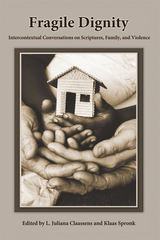 Fragile Dignity: Intercontextual Conversations on Scriptures, Family, and Violence
L. Juliana Claassens
SBL Press, 2013 Human dignity insists that every human deserves respect and a safe place to live. For many, this is not a reality. The essays collected here analyze the background of this problem in contemporary family life and society at large, with special emphasis on the role of women and on the Bible as a source of inspiration and transformation. The collection is the product of a six-year conversation on family, violence, and human dignity between the Protestant Theological University in Kampen, The Netherlands, and the Faculty of Theology at Stellenbosch University, South Africa, a North-South dialogue that included annual conferences, a series of responsive letters, and additional external responses. The contributors are Cheryl B. Anderson, Hendrik Bosman, Gerrit Brand, Athalya Brenner, L. Juliana Claassens, Dorothea Erbele-Küster, Leo J. Koffeman, Frits de Lange, Monica Jyotsna Melanchthon, Magda Misset-van de Weg, Beverly Eileen Mitchell, Anne-Claire Mulder, Ian Nell, Mary-Anne Plaatjies-van Huffel, Jeremy Punt, Petruschka Schaafsma, D. Xolile Simon, Lee-Ann J. Simon, Gé Speelman, Klaas Spronk, Ciska Stark, Elsa Tamez, Charlene van der Walt, Robert Vosloo, and Yusef Waghid.
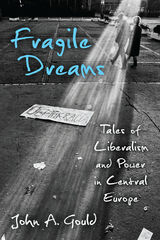 Fragile Dreams: Tales of Liberalism and Power in Central Europe
John A. Gould
University of Michigan Press, 2021 In Fragile Dreams, John A. Gould examines Central European communism, why it failed, and what has come since. Moving loosely chronologically from 1989 to the present, each chapter focuses on topics of importance to the fields of comparative politics, sociology, and feminist and gender studies. He draws heavily from his own research and experience as well as case studies of the former Czechoslovakia, Western Balkans, and Hungary—but much of the analysis has general applicability to the broader postcommunist region. Broad in its coverage, this academically rigorous book is ideal for students, travelers, and general readers. Gould writes in the first person and seamlessly blends theory with stories both from the existing literature and from 30 years of regional personal experience with family and friends. Throughout, Gould introduces key concepts, players, and events with precise definitions. Wherever possible, he emphasizes marginalized narratives, centering theory and stories that are often overlooked in standard comparative political science literature.
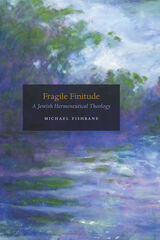 Fragile Finitude: A Jewish Hermeneutical Theology
Michael Fishbane
University of Chicago Press, 2021 The world we engage with is a vibrant collage brought to consciousness by language and our creative imagination. It is through the symbolic forms of language that the human world of value is revealed—this is where religious scholar Michael Fishbane dwells in his latest contribution to Jewish thought.
In Fragile Finitude, Fishbane clears new ground for a theological life through a novel reinterpretation of the Book of Job. On this basis, he offers a contemporary engagement with the four classical types of Jewish Scriptural exegesis. The first focuses on worldly experience, the second on communal forms of practice and thought in the rabbinical tradition, the third on personal development, and the fourth on transcendent, cosmic orientations. Through these four modes, Fishbane manages to transform Jewish theology from within, at once reinvigorating a long tradition and moving beyond it. What he offers is nothing short of a way to reorient our lives in relation to the divine and our fellow humans. Written from within the Jewish tradition, Fragile Finitude is intended for readers across the religious spectrum.
Fragile Giants: A Natural History of the Loess Hills
Cornelia F. Mutel
University of Iowa Press, 1989 Just east of the Missouri River in Iowa and northeastern Missouri, an angular band of rugged, prairie-topped and woodland-cloaked hills spans the otherwise uneventful skyline. These are the Loess Hills, recognized throughout the United States for their distinctive natural features. With clarity and thoroughness, Fragile Giants gives us a complete natural history of this area, including three auto tours and a comprehensive listing of public-use areas and educational programs.
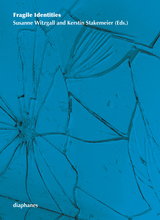 Fragile Identities
Edited by Susanne Witzgall and Kerstin Stakemeier
Diaphanes, 2016 What is the current state of the subject and what about the status of its self-image? In contemporary discourses we encounter more and more “fragile identities,” in artistic works as well as in scientific theories, and those are today much less referring to a critique of the concept of identity, but much rather to the relationship those concepts of identity entertain with the overall precarious state of the subject in current social conditions that are characterized by political upheaval and change.
The book Fragile Identities investigates among other things the chances and also the possible endangerments of such a fragile self and asks for the resurging urgency of a contemporary concept of subjectivity. The publication combines international artistic and scholarly contributions, discussions and project documentations in relation to the second annual theme of the cx centre for interdisciplinary studies at the Academy of Fine Arts Munich.
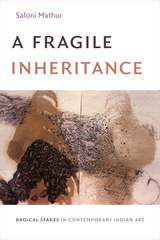 A Fragile Inheritance: Radical Stakes in Contemporary Indian Art
Saloni Mathur
Duke University Press, 2019 In A Fragile Inheritance Saloni Mathur investigates the work of two seminal figures from the global South: the New Delhi-based critic and curator Geeta Kapur and contemporary multimedia artist Vivan Sundaram. Examining their written and visual works over the past fifty years, Mathur illuminates how her protagonists’ political and aesthetic commitments intersect and foreground uncertainty, difficulty, conflict, and contradiction. This book presents new understandings of the culture and politics of decolonization and the role of non-Western aesthetic avant-gardes within the discourses of contemporary art. Through skillful interpretation of Sundaram's and Kapur’s practices, Mathur demonstrates how received notions of mainstream art history may be investigated and subjected to creative redefinition. Her scholarly methodology offers an impassioned model of critical aesthetics and advances a radical understanding of art and politics in our time.
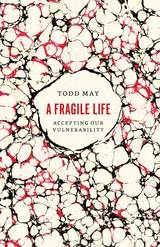 A Fragile Life: Accepting Our Vulnerability
Todd May
University of Chicago Press, 2017 Offering a guide on how to positively engage suffering, Todd May ultimately lays out a new way of thinking about how we exist in the world, one that reassures us that our suffering, rather than a failure of physical or psychological resilience, is a powerful and essential part of life itself
It is perhaps our noblest cause, and certainly one of our oldest: to end suffering. Think of the Buddha, Chuang Tzu, or Marcus Aurelius: stoically composed figures impervious to the torments of the wider world, living their lives in complete serenity—and teaching us how to do the same. After all, isn’t a life free from suffering the ideal? Isn’t it what so many of us seek? Absolutely not, argues Todd May in this provocative but compassionate book. In a moving examination of life and the trials that beset it, he shows that our fragility, our ability to suffer, is actually one of the most important aspects of our humanity.
May starts with a simple but hard truth: suffering is inevitable. At the most basic level, we suffer physically—a sprained ankle or a bad back. But we also suffer insults and indifference. We suffer from overburdened schedules and unforeseen circumstances, from moral dilemmas and emotional heartaches. Even just thinking about our own mortality—the fact that we only live one life—can lead us to tremendous suffering. No wonder philosophies such as Buddhism, Taosim, Stoicism, and even Epicureanism—all of which counsel us to rise above these plights—have had appeal over the centuries. May highlights the tremendous value of these philosophies and the ways they can guide us toward better lives, but he also exposes a major drawback to their tenets: such invulnerability is too emotionally disengaged from the world, leading us to place too great a distance between ourselves and our experience. Rather than seeking absolute immunity, he argues most of us just want to hurt less and learn how to embrace and accept what suffering we do endure in a meaningful way.
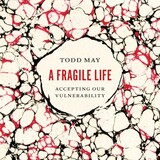 A Fragile Life: Accepting Our Vulnerability
Todd May
University of Chicago Press, 2017 This is an auto-narrated audiobook edition of this book. It is perhaps our noblest cause, and certainly one of our oldest: to end suffering. Think of the Buddha, Chuang Tzu, or Marcus Aurelius: stoically composed figures impervious to the torments of the wider world, living their lives in complete serenity—and teaching us how to do the same. After all, isn’t a life free from suffering the ideal? Isn’t it what so many of us seek? Absolutely not, argues Todd May in this provocative but compassionate book. In a moving examination of life and the trials that beset it, he shows that our fragility, our ability to suffer, is actually one of the most important aspects of our humanity.
May starts with a simple but hard truth: suffering is inevitable. At the most basic level, we suffer physically—a sprained ankle or a bad back. But we also suffer insults and indifference. We suffer from overburdened schedules and unforeseen circumstances, from moral dilemmas and emotional heartaches. Even just thinking about our own mortality—the fact that we only live one life—can lead us to tremendous suffering. No wonder philosophies such as Buddhism, Taosim, Stoicism, and even Epicureanism—all of which counsel us to rise above these plights—have had appeal over the centuries. May highlights the tremendous value of these philosophies and the ways they can guide us toward better lives, but he also exposes a major drawback to their tenets: such invulnerability is too emotionally disengaged from the world, leading us to place too great a distance between ourselves and our experience. Rather than seeking absolute immunity, he argues most of us just want to hurt less and learn how to embrace and accept what suffering we do endure in a meaningful way.
Offering a guide on how to positively engage suffering, May ultimately lays out a new way of thinking about how we exist in the world, one that reassures us that our suffering, rather than a failure of physical or psychological resilience, is a powerful and essential part of life itself.
 Fragile Lives: Violence, Power, and Solidarity in Eighteenth-Century Paris
Arlette Farge
Harvard University Press, 1993 The rich and complex texture of working-class neighborhoods in eighteenth-century Paris comes vibrantly alive in this collage of the experiences of ordinary people—men and women, rich and poor, masters and servants, neighbors and colleagues. Exploring three arenas of conflict and solidarity—the home, the workplace, and the street—Arlette Farge offers the reader an intimate social history, bringing long-dead citizens and vanished social groups back to life with sensitivity and perception.
Fragile Lives reconstructs the rhythms of this population's daily existence, the way they met, formed relationships and broke them off, conducted their affairs in the community, and raised their young. Farge follows them into the factory and describes the ways they organized to improve their working conditions, and how they were controlled by the authorities. She shows how these Parisians behaved in the context of collective events, from festive street spectacles to repressive displays of power by the police. As the author examines interwoven lives as revealed in judicial records, we come to know and understand the criminals and the underworld of the time; the situation of women as lovers, wives, or prostitutes; anxieties about food and drink, and the rules of conduct in a “fragile” society. Elegantly written and skillfully translated, Fragile Lives is a book for the curious general reader and for those interested in social and cultural history.
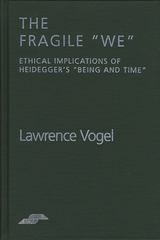 The Fragile We: Ethical Implications Of Heidegger's "Being and Time"
Lawrence Vogel
Northwestern University Press, 1994 Critics have charged that Heidegger's account of authenticity is morally nihilistic, that his fundamental ontology is either egocentric or chauvinistic; and many see Heidegger's turn to Nazism in 1933 as following logically from an indifference, and even hostility, to "otherness" in the premises of his early philosophy.
In The Fragile "We": Ethical Implications of Heidegger's "Being and Time," Lawrence Vogel presents three interpretations of authentic existence—the existentialist, the historicist, and the cosmopolitan—each of which is a plausible version of the personal ideal depicted in Being and Time. He then draws parallels between these interpretations and three moments in the contemporary liberal-communitarian debate over the relationship of the "I" and the "We." His book contributes both to a diagnosis of what there is about Being and Time that invites moral nihilism and to a sense of how fundamental ontology might be recast so that "the other" is accorded an appropriate place in an account of human existence.
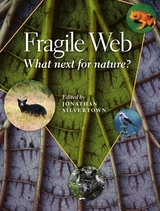 Fragile Web: What Next for Nature?
Edited by Jonathan Silvertown
University of Chicago Press, 2010 Biodiversity is as close as your breakfast table. Your cereal and coffee are the products of at least a dozen species of plants and animals. And believe it or not, you are related to your morning meal—all life on earth is descended from a common ancestor, giving new meaning to the old saying “You are what you eat.” Making clear why the future of biodiversity matters, Fragile Web—which takes its name from the delicate mechanism that holds all life together—unites a team of international experts to explore the wonder of the natural world. Drawing on the very latest research, the book explains what biodiversity is and explores its evolution, from 3.5 billion years ago to the present day. It discusses the importance of the world’s ecosystems and how directly or indirectly humans are responsible for the fate of nature. Crucially, it also examines what can be done to protect the natural world and why it matters. Although we cannot undo all that we have done, ignoring the current crisis facing biodiversity could fundamentally change the lives of future generations. Fully illustrated with color photographs, diagrams, and maps, and edited by celebrated ecologist Jonathan Silvertown, this book is a timely snapshot of the state of life on Earth. From the plant and animal products that make up our breakfast to the ecosystems that help to produce clean water, our very survival depends upon the variety of plant and animal life on our planet. The year 2010 has been declared by the United Nations the International Year of Biodiversity, and The Fragile Web will be an essential guidebook for our time.
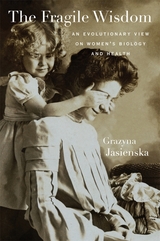 The Fragile Wisdom: An Evolutionary View on Women’s Biology and Health
Grazyna Jasienska
Harvard University Press, 2013 So many women who do everything right to stay healthy still wind up with breast cancer, heart disease, or osteoporosis. In The Fragile Wisdom, Grazyna Jasienska provides an evolutionary perspective on the puzzle of why disease prevention among women is so frustratingly difficult. Modern women, she shows, are the unlucky victims of their own bodies’ conflict of interest between reproductive fitness and life-long health.
The crux of the problem is that women’s physiology has evolved to facilitate reproduction, not to reduce disease risk. Any trait—no matter how detrimental to health in the post-reproductive period—is more likely to be preserved in the next generation if it increases the chance of giving birth to offspring who will themselves survive to reproductive age. To take just one example, genes that produce high levels of estrogen are a boon to fertility, even as they raise the risk of breast cancer in mothers and their daughters.
Jasienska argues that a mismatch between modern lifestyles and the Stone Age physiology that evolution has bequeathed to every woman exacerbates health problems. She looks at women’s mechanisms for coping with genetic inheritance and at the impact of environment on health. Warning against the false hope gene therapy inspires, Jasienska makes a compelling case that our only avenue to a healthy life is prevention programs informed by evolutionary understanding and custom-fitted to each woman’s developmental and reproductive history.
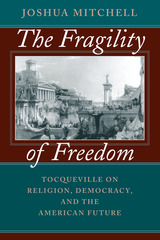 The Fragility of Freedom: Tocqueville on Religion, Democracy, and the American Future
Joshua Mitchell
University of Chicago Press, 1995 In this fresh interpretation of Tocqueville's thought, Joshua Mitchell explores the dynamic interplay between religion and politics in American democracy.
Focusing on Democracy in America, The Fragility of Freedom examines Tocqueville's key works and argues that his analysis of democracy is ultimately rooted in an Augustinian view of human psychology. As much a work of political philosophy as of religion, The Fragility of Freedom argues for the importance of a political theology that recognizes moderation.
"An intelligent and sharply drawn portrait of a conservative Toqueville."—Anne C. Rose, Journal of American History
"I recommend this book as one of a very few to approach seriously the sources of Tocqueville's intellectual and moral greatness."—Peter Augustine Lawler, Journal of Politics
"Mitchell ably places Democracy in America in the long conversation of Western political and theological thought."—Wilfred M. McClay, First Things
"Learned and thought-provoking."—Peter Berkowitz, New Republic
 The Fragility of Manhood: Hawthorne, Freud, and the Politics of Gender
David Greven
Ohio State University Press, 2012 Merging psychoanalytic and queer theory perspectives, The Fragility of Manhood: Hawthorne, Freud, and the Politics of Gender reframes Nathaniel Hawthorne’s work as a critique of the normative construction of American male identity. Revising Freudian and Lacanian literary theory and establishing the concepts of narcissism and the gaze as central, David Greven argues that Hawthorne represents normative masculinity as fundamentally dependent on the image. In ways that provocatively intersect with psychoanalytic theory, Hawthorne depicts subjectivity as identification with an illusory and deceptive image of wholeness and unity. As Hawthorne limns it, male narcissism both defines and decenters male heterosexual authority. Moreover, in Greven’s view, Hawthorne critiques hegemonic manhood’s recourse to domination as a symptom of the traumatic instabilities at the core of traditional models of male identity. Hawthorne’s representation of masculinity as psychically fragile has powerful implications for his depictions of female and queer subjectivity in works such as the tales “Rappaccini’s Daughter” and “The Gentle Boy,” the novel The Blithedale Romance, and Hawthorne’s critically neglected late, unfinished writings, such as Septimius Felton. Rereading Freud from a queer theory perspective, Greven reframes Freudian theory as a radical critique of traditional models of gender subjectivity that has fascinating overlaps with Hawthorne’s work. In the chapter “Visual Identity,” Greven also discusses the agonistic relationship between Hawthorne and Herman Melville and the intersection of queer themes, Hellenism, and classical art in their travel writings, The Marble Faun, and Billy Budd.
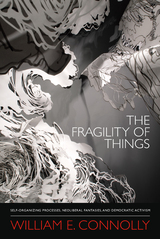 The Fragility of Things: Self-Organizing Processes, Neoliberal Fantasies, and Democratic Activism
William E. Connolly
Duke University Press, 2013 In The Fragility of Things, eminent theorist William E. Connolly focuses on several self-organizing ecologies that help to constitute our world. These interacting geological, biological, and climate systems, some of which harbor creative capacities, are depreciated by that brand of neoliberalism that confines self-organization to economic markets and equates the latter with impersonal rationality. Neoliberal practice thus fails to address the fragilities it exacerbates. Engaging a diverse range of thinkers, from Friedrich Hayek, Michel Foucault, Hesiod, and Immanuel Kant to Voltaire, Terrence Deacon, Friedrich Nietzsche, and Alfred North Whitehead, Connolly brings the sense of fragility alive as he rethinks the idea of freedom. Urging the Left not to abandon the state but to reclaim it, he also explores scales of politics below and beyond the state. The contemporary response to fragility requires a militant pluralist assemblage composed of those sharing affinities of spirituality across differences of creed, class, gender, sexual orientation, and ethnicity.
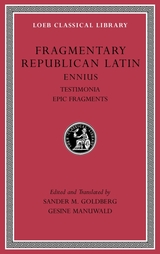 Fragmentary Republican Latin, Volume I: Ennius: Testimonia. Epic Fragments
Ennius
Harvard University Press, 2018 The assimilated assimilator.
Quintus Ennius (239–169 BC), widely regarded as the father of Roman literature, was instrumental in creating a new Roman literary identity and inspired major developments in Roman religion, social organization, and popular culture. Born in the Calabrian town of Rudiae in Magna Graecia, Ennius claimed descent from Messapus, eponymous hero of Messapia, and was uncle to the tragic dramatist Pacuvius. Brought in 204 from Sardinia to Rome in the entourage of Cato, Ennius took up independent residence on the Aventine and, fluent in his native Oscan as well as Greek and Latin, became one of the first teachers to introduce Greek learning to Romans through public readings of Greek and Latin texts. Transcending partisan interests, Ennius cultivated familiar relationships with several of Rome’s most distinguished families, including that of Marcus Fulvius Nobilior, through whose patronage he eventually attained Roman citizenship.
Best known for domesticating Greek epic and drama, Ennius also pursued a wide range of literary endeavors and, with the apparent exception of comedy, found success in all of them. He thus played a major role in setting Latin literature on the assimilationist course that was to be its hallmark throughout the Republican period. His tragedies were long regarded as classics of the genre, and his Annals gave Roman epic its canonical shape and pioneered many of its most characteristic features. Other endeavors included philosophical works in prose and verse, epigrams, didactic poems, dramas on Roman themes (praetextae), and occasional poetry that informed the later development of satire.
This two-volume edition of Ennius, which inaugurates the Loeb series Fragmentary Republican Latin, replaces that of Warmington in Remains of Old Latin, Volume I and offers fresh texts, translations, and annotation that are fully current with modern scholarship.
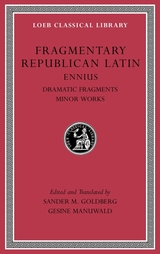 Fragmentary Republican Latin, Volume II: Ennius: Dramatic Fragments. Minor Works
Ennius
Harvard University Press, 2018 The assimilated assimilator.
Quintus Ennius (239–169 BC), widely regarded as the father of Roman literature, was instrumental in creating a new Roman literary identity and inspired major developments in Roman religion, social organization, and popular culture. Born in the Calabrian town of Rudiae in Magna Graecia, Ennius claimed descent from Messapus, eponymous hero of Messapia, and was uncle to the tragic dramatist Pacuvius. Brought in 204 from Sardinia to Rome in the entourage of Cato, Ennius took up independent residence on the Aventine and, fluent in his native Oscan as well as Greek and Latin, became one of the first teachers to introduce Greek learning to Romans through public readings of Greek and Latin texts. Transcending partisan interests, Ennius cultivated familiar relationships with several of Rome’s most distinguished families, including that of Marcus Fulvius Nobilior, through whose patronage he eventually attained Roman citizenship.
Best known for domesticating Greek epic and drama, Ennius also pursued a wide range of literary endeavors and, with the apparent exception of comedy, found success in all of them. He thus played a major role in setting Latin literature on the assimilationist course that was to be its hallmark throughout the Republican period. His tragedies were long regarded as classics of the genre, and his Annals gave Roman epic its canonical shape and pioneered many of its most characteristic features. Other endeavors included philosophical works in prose and verse, epigrams, didactic poems, dramas on Roman themes (praetextae), and occasional poetry that informed the later development of satire.
This two-volume edition of Ennius, which inaugurates the Loeb series Fragmentary Republican Latin, replaces that of Warmington in Remains of Old Latin, Volume I and offers fresh texts, translations, and annotation that are fully current with modern scholarship.
 Fragmentary Republican Latin, Volume III: Oratory, Part 1
Gesine Manuwald
Harvard University Press, 2019 Rhetorical remnants.
The Loeb Classical Library series Fragmentary Republican Latin continues with oratory, an important element of Roman life from the earliest times, essential to running public affairs and for advancing individual careers long before it acquired literary dimensions, which happened once orators decided to write up and circulate written versions of their speeches after delivery.
Beginning with Appius Claudius Caecus (340–273 BC), this three-volume edition covers the full range of speech-making—political, juridical, and epideictic (display)—and with the exceptions of Cato the Elder and Cicero includes all individuals for whom speech-making is attested and for whose speeches quotations, descriptive testimonia, or historiographic recreations survive.
Such an overview provides insight into the typical forms and themes of Roman oratory as well as its wide variety of occasions and styles. By including orators from different phases within the Republican period as well as men given high or low rankings by contemporaries and later ancient critics, the collection offers a fuller panorama of Roman Republican oratory than a selection guided simply by an orator’s alleged or canonical quality, or by the amount of evidence available.
This edition includes all the orators recognized by Malcovati and follows her numbering, but the texts have been drawn from the most recent and reliable editions of the source authors and revised in light of current scholarship; additional material has been included with its own separate numbering. Helping to guide readers through the material are faithful translations, informative introductions, and ample annotation.
 Fragmentary Republican Latin, Volume IV: Oratory, Part 2
Gesine Manuwald
Harvard University Press, 2019 Rhetorical remnants.
The Loeb Classical Library series Fragmentary Republican Latin continues with oratory, an important element of Roman life from the earliest times, essential to running public affairs and for advancing individual careers long before it acquired literary dimensions, which happened once orators decided to write up and circulate written versions of their speeches after delivery.
Beginning with Appius Claudius Caecus (340–273 BC), this three-volume edition covers the full range of speech-making—political, juridical, and epideictic (display)—and with the exceptions of Cato the Elder and Cicero includes all individuals for whom speech-making is attested and for whose speeches quotations, descriptive testimonia, or historiographic recreations survive.
Such an overview provides insight into the typical forms and themes of Roman oratory as well as its wide variety of occasions and styles. By including orators from different phases within the Republican period as well as men given high or low rankings by contemporaries and later ancient critics, the collection offers a fuller panorama of Roman Republican oratory than a selection guided simply by an orator’s alleged or canonical quality, or by the amount of evidence available.
This edition includes all the orators recognized by Malcovati and follows her numbering, but the texts have been drawn from the most recent and reliable editions of the source authors and revised in light of current scholarship; additional material has been included with its own separate numbering. Helping to guide readers through the material are faithful translations, informative introductions, and ample annotation.
 Fragmentary Republican Latin, Volume V: Oratory, Part 3
Gesine Manuwald
Harvard University Press, 2019 Rhetorical remnants.
The Loeb Classical Library series Fragmentary Republican Latin continues with oratory, an important element of Roman life from the earliest times, essential to running public affairs and for advancing individual careers long before it acquired literary dimensions, which happened once orators decided to write up and circulate written versions of their speeches after delivery.
Beginning with Appius Claudius Caecus (340–273 BC), this three-volume edition covers the full range of speech-making—political, juridical, and epideictic (display)—and with the exceptions of Cato the Elder and Cicero includes all individuals for whom speech-making is attested and for whose speeches quotations, descriptive testimonia, or historiographic recreations survive.
Such an overview provides insight into the typical forms and themes of Roman oratory as well as its wide variety of occasions and styles. By including orators from different phases within the Republican period as well as men given high or low rankings by contemporaries and later ancient critics, the collection offers a fuller panorama of Roman Republican oratory than a selection guided simply by an orator’s alleged or canonical quality, or by the amount of evidence available.
This edition includes all the orators recognized by Malcovati and follows her numbering, but the texts have been drawn from the most recent and reliable editions of the source authors and revised in light of current scholarship; additional material has been included with its own separate numbering. Helping to guide readers through the material are faithful translations, informative introductions, and ample annotation.
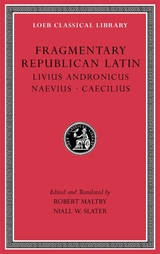 Fragmentary Republican Latin, Volume VI: Livius Andronicus. Naevius. Caecilius
Robert Maltby
Harvard University Press Three foundational Roman poets.
The Loeb Classical Library series Fragmentary Republican Latin continues with three highly influential pioneers in the creation and development of Latin poetry.
Livius Andronicus (born ca. 292 BC) was regarded by the Romans as the founder of Latin literature, introducing tragedy and comedy, adapting Homer’s Odyssey into Saturnian verse, and composing a nationally important hymn for Juno. A meeting place for writers and actors was established in the temple of Minerva on the Aventine in recognition of his poetic achievements.
Naevius (born ca. 280–260), though most famous for his comedies, also wrote tragedy and epic. He innovated by incorporating Roman material into his Greek models and writing on Roman subjects independently. The inventor of the fabula praetexta, drama on a Roman theme, he also introduced new topics to Roman tragedy, especially those relating to Troy, and his Punic War, the first epic on a Roman historical subject, was a longtime school text and a favorite of Augustus.
Caecilius (born probably in the 220s), a friend of the older Ennius, excelled at comedy, of which he was Rome’s leading exponent during his career, and was so considered by posterity. Caecilius continued the Naevian practice of inserting Roman allusions into his works and was admired by later critics particularly for his substantive and well-constructed plots, and for his ability to arouse emotion.
The texts are based on the most recent and reliable editions of the source authors and have been revised, freshly translated, and amply annotated in light of current scholarship.
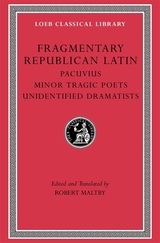 Fragmentary Republican Latin, Volume VII: Pacuvius. Minor Tragic Poets. Unidentified Dramatists
Pacuvius
Harvard University Press Dilapidated dramas.
The Loeb Classical Library series Fragmentary Republican Latin continues with Marcus Pacuvius (ca. 220–130), deemed by Cicero to be Rome’s greatest tragic poet, together with the fragments of those tragedians of whose work little has survived. Also included are fragments distinguished as dramatic by their meter, but whose genre (tragedy or comedy) can be uncertain.
Pacuvius, a nephew and possibly a pupil of Ennius and an older contemporary of Accius, seems to have had connections with high-ranking politicians and intellectuals, especially those such as Laelius and Scipio who supported Hellenistic culture at Rome; certainly he was remembered as a learned poet, and among his compositions was a fabula praetexta on L. Aemilius Paulus’ victory at Pydna in 168. He tended to treat less obvious aspects of the mythological tradition, perhaps a sign of his own originality, which allowed him to explore in depth issues that seem to have particularly interested him, such as mistaken or false identity ending in final recognition, and noble characters in reduced circumstances. There are also philosophical and cosmological themes, as in plays featuring characters recognized as related who join in overthrowing unjust rulers, raising questions of justice, power, and the role of a good ruler. His works remained in the repertory, were often quoted by orators, and influenced later poets such as Plautus, Terence, Virgil, and Ovid.
The texts are based on the most recent and reliable editions of the source authors and have been revised, freshly translated, and amply annotated in light of current scholarship.
 Fragmentary Speeches
Cicero
Harvard University Press, 2024 Incomplete but invaluable excerpts from otherwise lost orations.
Cicero (Marcus Tullius, 106–43 BC), Roman advocate, orator, politician, poet, and philosopher, about whom we know more than we do of any other Roman, lived through the stirring era that saw the rise, dictatorship, and death of Julius Caesar in a tottering republic. In Cicero’s political speeches and in his correspondence, we see the excitement, tension, and intrigue of politics and the important part he played in the turmoil of the time.
Although Cicero’s oratory is well attested—of 106 known speeches, fifty-eight survive intact or in large part—the sixteen speeches that survive only in quotations nevertheless fill gaps in our knowledge. These speeches attracted the interest of later authors, particularly Asconius and Quintilian, for their exemplary content, oratorical strategies, or use of language, failing to survive entire not because they were inferior in quality or interest but due to factors contingent on the way Cicero’s speeches were read, circulated, and evaluated in (especially late) antiquity.
The fragmentary speeches fall, like Cicero’s career in general, into three periods: the preconsular, the consular, and the postconsular, and here are presented chronologically, numbered continuously, and their fragments arranged, insofar as possible, in the order in which they would have occurred, followed by unplaced quotations. Each speech receives an introduction and ample notation.
This edition, which completes the Loeb Classical Library edition of Cicero, includes all speeches with attested fragments, together with testimonia. Based upon Crawford’s edition of 1994, the sources have been examined afresh, and newer source-editions substituted where appropriate.
 Fragmentation and Consensus: Communitarian and Casuist Bioethics
Mark G. Kuczewski
Georgetown University Press Both communitarianism and casuistry have sought to restore ethics as a practical science—the former by incorporating various traditions into a shared definition of the common good, the latter by considering the circumstances of each situation through critical reasoning. Mark G. Kuczewski analyzes the origins and methods of these two approaches and forges from them a new unified approach. This approach takes the communitarian notion of the person as its starting point but also relies upon the narrative and analogical tools of case-based reasoning. He separates out the rhetoric that is incongruent with the Aristotelian aspirations of each method to show that the two are complementary, and that consensus can emerge from fragmentation. He then applies his resulting method to three major problems in bioethics: the difficulties that the issue of personal identity poses for advance directives, the role of the family in medical decision making, and the refusal of treatment because of religious beliefs. He analyzes the need to assume a communitarian notion of the person as a starting point for the application of casuistic insights. Combining theoretical, practical, and scholarly insights, this book will be of interest to philosophers, political and social scientists, and bioethicists.
The Fragmented Forest: Island Biogeography Theory and the Preservation of Biotic Diversity
Larry D. Harris
University of Chicago Press, 1984 In this poineering application of island biogeography theory, Harris presents an alternative to current practices of timber harvesting.
"Harris pulls together many threads of biological thinking about islands and their effect on plant and animal survival and evolution. He weaves these threads into a model for managing forest lands in a manner that might serve both our short-term economic and social needs as well as what some people feel is our ancient charge to be steward of all parts of creation."—American Forests
Winner of the 1986 Wildlife Society Publication Award
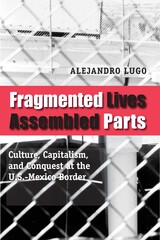 Fragmented Lives, Assembled Parts: Culture, Capitalism, and Conquest at the U.S.-Mexico Border
By Alejandro Lugo
University of Texas Press, 2008 Southwest Book Award, Border Regional Library Association, 2008
Association of Latina and Latino Anthropologists Book Award, 2009 Established in 1659 as Misión de Nuestra Señora de Guadalupe de los Mansos del Paso del Norte, Ciudad Juárez is the oldest colonial settlement on the U.S.-Mexico border-and one of the largest industrialized border cities in the world. Since the days of its founding, Juárez has been marked by different forms of conquest and the quest for wealth as an elaborate matrix of gender, class, and ethnic hierarchies struggled for dominance. Juxtaposing the early Spanish invasions of the region with the arrival of late-twentieth-century industrial "conquistadors," Fragmented Lives, Assembled Parts documents the consequences of imperial history through in-depth ethnographic studies of working-class factory life. By comparing the social and human consequences of recent globalism with the region's pioneer era, Alejandro Lugo demonstrates the ways in which class mobilization is itself constantly being "unmade" at both the international and personal levels for border workers. Both an inside account of maquiladora practices and a rich social history, this is an interdisciplinary survey of the legacies, tropes, economic systems, and gender-based inequalities reflected in a unique cultural landscape. Through a framework of theoretical conceptualizations applied to a range of facets—from multiracial "mestizo" populations to the notions of border "crossings" and "inspections," as well as the recent brutal killings of working-class women in Ciudad Juárez—Fragmented Lives, Assembled Parts provides a critical understanding of the effect of transnational corporations on contemporary Mexico, calling for official recognition of the desperate need for improved working and living conditions within this community.
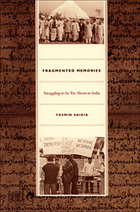 Fragmented Memories: Struggling to be Tai-Ahom in India
Yasmin Saikia
Duke University Press, 2004 Fragmented Memories is a beautifully rendered exploration of how, during the 1990s, socially and economically marginalized people in the northeastern Indian state of Assam sought to produce a past on which to base a distinctive contemporary identity recognized within late-twentieth-century India. Yasmin Saikia describes how groups of Assamese identified themselves as Tai-Ahom—a people with a glorious past stretching back to the invasion of what is now Assam by Ahom warriors in the thirteenth century. In her account of the 1990s Tai-Ahom identity movement, Saikia considers the problem of competing identities in India, the significance of place and culture, and the outcome of the memory-building project of the Tai-Ahom. Assamese herself, Saikia lived in several different Tai-Ahom villages between 1994 and 1996. She spoke with political activists, intellectuals, militant leaders, shamans, and students and observed and participated in Tai-Ahom religious, social, and political events. She read Tai-Ahom sacred texts and did archival research—looking at colonial documents and government reports—in Calcutta, New Delhi, and London. In Fragmented Memories, Saikia reveals the different narratives relating to the Tai-Ahom as told by the postcolonial Indian government, British colonists, and various texts reaching back to the thirteenth century. She shows how Tai-Ahom identity is practiced in Assam and also in Thailand. Revealing how the “dead” history of Tai-Ahom has been transformed into living memory to demand rights of citizenship, Fragmented Memories is a landmark history told from the periphery of the Indian nation.
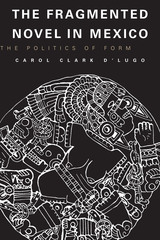 The Fragmented Novel in Mexico: The Politics of Form
By Carol Clark D'Lugo
University of Texas Press, 1997 From Mariano Azuela's 1915 novel Los de abajo to Rosamaría Roffiel's Amora of 1989, fragmented narrative has been one of the defining features of innovative Mexican fiction in the twentieth century. In this innovative study, Carol Clark D'Lugo examines fragmentation as a literary strategy that reflects the social and political fissures within modern Mexican society and introduces readers to a more participatory reading of texts. D'Lugo traces defining moments in the development of Mexican fiction and the role fragmentation plays in each. Some of the topics she covers are nationalist literature of the 1930s and 1940s, self-referential novels of the 1950s that focus on the process of reading and writing, the works of Carlos Fuentes, novels of La Onda that came out of rebellious 1960s Mexican youth culture, gay and lesbian fiction, and recent women's writings. With its sophisticated theoretical methodology that encompasses literature and society, this book serves as an admirable survey of the twentieth-century Mexican novel. It will be important reading for students of Latin American culture and history as well as literature.
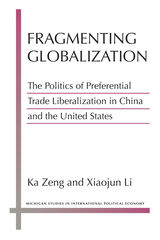 Fragmenting Globalization: The Politics of Preferential Trade Liberalization in China and the United States
Ka Zeng and Xiaojun Li
University of Michigan Press, 2021 Global supply chain integration is not only a rapidly growing feature of international trade, it is responsible for fundamentally changing trade policy at international and domestic levels. Given that final goods are produced with both domestic and foreign suppliers, Ka Zeng and Xiaojun Li argue that global supply chain integration pits firms and industries that are more heavily dependent on foreign supply chains against those that are less dependent on intermediate goods for domestic production. Hence, businesses whose supply chain would be disrupted as a result of increased trade barriers should lobby for preferential trade liberalization to maintain access to those foreign markets. Moreover, businesses whose products are used in the production of goods in foreign countries should also support preferential trade liberalization to compete with suppliers from other parts of the world.
Fragmenting Globalization uses multiple methods, including time series, cross-sectional analysis of the pattern of Preferential Trade Alliance formation by existing World Trade Organization members, a firm-level survey, and case studies of the pattern of corporate support for regional trade liberalization in both China and the United States. Zeng and Li show that the growing fragmentation of global production, trade, and investment is altering trade policy away from the traditional divide between export-oriented and import-competing industries.
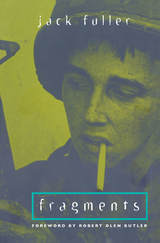 Fragments
Jack Fuller
University of Chicago Press, 1997 Fragments is a story about how war can make everything explosive—even love—and how two friends try to put the pieces of their lives together again.
"[Fragments] makes the usual semi-autobiographical account [of the Vietnam War] . . . seem flimsy and discursive in comparison. . . . The shapeliness and sense of larger design [is] so elegantly executed in Fragments."—Michiko Kakutani, New York Times
"The plot is believable, the characters sharply drawn, the prose clean and distinctive. . . . Stand[s] with Tim O'Brien's Going After Cacciato, James Webb's Fields of Fire, Josiah Bunting's The Lionheads and John Del Vecchio's The 13th Valley. . . . A strong, compelling novel."—Marc Leepson, Washington Post
"There have been many books on Vietnam, and there will be many others. This is more a novel than the rest. . . . Fuller has reassembled the exploded grenade."—Bob MacDonald, Boston Sunday Globe
"Should our children ask about Vietnam, we would not go wrong to place this book in their hands. . . . [Fragments] purveys more than information—it gives the war a literary form."—David Myers, New York Times
"The best novel yet about the Vietnam War. . . . It ranks with Norman Mailer's The Naked and the Dead and James Jones's From Here to Eternity."—Daniel Kornstein, Wall Street Journal
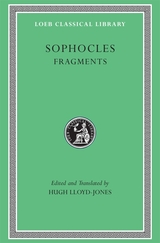 Fragments
Sophocles
Harvard University Press, 1994 Ancient Athens’ most successful tragedian.
Sophocles (497/6–406 BC), the second of the three great tragedians of Athens and by common consent one of the world's greatest poets, wrote more than 120 plays. Only seven of these survive complete, but we have a wealth of fragments, from which much can be learned about Sophocles' language and dramatic art. This volume presents a collection of all the major fragments, ranging in length from two lines to a very substantial portion of the satyr play The Searchers. Prefatory notes provide frameworks for the fragments of known plays.
Many of the Sophoclean fragments were preserved by quotation in other authors; others, some of considerable size, are known to us from papyri discovered during the past century. Among the lost plays of which we have large fragments, The Searchers shows the god Hermes, soon after his birth, playing an amusing trick on his brother Apollo; Inachus portrays Zeus coming to Argos to seduce Io, the daughter of its king; and Niobe tells how Apollo and his sister Artemis punish Niobe for a slight upon their mother by killing her twelve children. Throughout the volume, as in the extant plays, we see Sophocles drawing his subjects from heroic legend.
This is the final volume of Lloyd-Jones's Loeb Classical Library edition of Sophocles. In Volumes I and II he gives a faithful and very skillful translation of the seven surviving plays. Volume I contains Oedipus Tyrannus, Ajax, and Electra. Volume II contains Oedipus at Colonus, Antigone, The Women of Trachis, and Philoctetes.
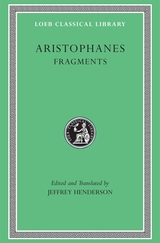 Fragments
AristophanesEdited and Translated by Jeffrey Henderson
Harvard University Press, 2007 The master of Old Comedy.
The eleven plays by Aristophanes that have come down to us intact brilliantly illuminate the eventful period spanned by his forty-year career, beginning with the first production in 427 BC. But the Athenians knew much more of his work: over forty plays by Aristophanes were read in antiquity, of which nearly a thousand fragments survive. These provide a fuller picture of the poet’s ever astonishing comic vitality and a wealth of information and insights about his world. Jeffrey Henderson’s new, widely acclaimed Loeb edition of Aristophanes is completed by this volume containing what survives from, and about, his lost plays, hitherto inaccessible to the nonspecialist, and incorporating the enormous scholarly advances that have been achieved in recent years.
Each fragmentary play is prefaced by a summary of what can be inferred about its plot, characters, themes, theatricality, and topical significance. Also included in this edition are the ancient reports about Aristophanes’ life, works, and influence on the later comic tradition.
 Fragments
Aeschylus
Harvard University Press, 2008 Tantalizing quotations from lost tragedies.
Aeschylus (ca. 525–456 BC), the dramatist who made Athenian tragedy one of the world’s great art forms, witnessed the establishment of democracy at Athens, fought against the Persians at Marathon and probably also at Salamis, and had one of his productions sponsored by the young Pericles. He was twice invited to visit Sicily, and it was there that he died. At Athens he competed for the tragic prize at the City Dionysia about nineteen times between circa 499 and 458, and won it on thirteen occasions; in his later years he was probably victorious almost every time he put on a production, though Sophocles beat him at least once.
Of his total of about eighty plays, seven survive complete. The first volume of this new Loeb Classical Library edition contains fresh texts and translations by Alan H. Sommerstein of Persians (472), on the recent war, the only surviving Greek historical drama; Seven against Thebes (467), the third play of a trilogy, on the conflict between Oedipus’ sons which ends when they kill each other; Suppliants, the first or second play of a trilogy, on the successful appeal by the daughters of Danaus to the king and people of Argos for protection against a forced marriage to their cousins (whom they will later murder, all but one); and Prometheus Bound (of disputed authenticity), on the terrible punishment of Prometheus for giving fire to humans in defiance of Zeus (with whom he will later be reconciled after preventing his overthrow). The second volume contains the complete Oresteia trilogy (458), comprising Agamemnon, Libation-Bearers, and Eumenides, presenting the murder of Agamemnon by his wife, the revenge taken by their son Orestes, the pursuit of Orestes by his mother’s avenging Furies, his trial and acquittal at Athens, Athena’s pacification of the Furies, and the blessings they both invoke upon the Athenian people.
This edition’s third volume offers all the major fragments of lost Aeschylean plays, with brief headnotes explaining what is known, or can be plausibly inferred, about their content, and bibliographies of recent studies.
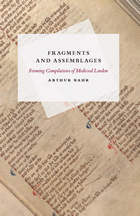 Fragments and Assemblages: Forming Compilations of Medieval London
Arthur Bahr
University of Chicago Press, 2013 In Fragments and Assemblages, Arthur Bahr expands the ways in which we interpret medieval manuscripts, examining the formal characteristics of both physical manuscripts and literary works. Specifically, Bahr argues that manuscript compilations from fourteenth-century London reward interpretation as both assemblages and fragments: as meaningfully constructed objects whose forms and textual contents shed light on the city’s literary, social, and political cultures, but also as artifacts whose physical fragmentation invites forms of literary criticism that were unintended by their medieval makers. Such compilations are not simply repositories of data to be used for the reconstruction of the distant past; their physical forms reward literary and aesthetic analysis in their own right. The compilations analyzed reflect the full vibrancy of fourteenth-century London’s literary cultures: the multilingual codices of Edwardian civil servant Andrew Horn and Ricardian poet John Gower, the famous Auchinleck manuscript of texts in Middle English, and Chaucer’s Canterbury Tales. By reading these compilations as both formal shapes and historical occurrences, Bahr uncovers neglected literary histories specific to the time and place of their production. The book offers a less empiricist way of interpreting the relationship between textual and physical form that will be of interest to a wide range of literary critics and manuscript scholars.
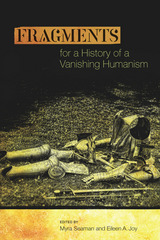 Fragments for a History of a Vanishing Humanism
Edited by Myra Seaman and Eileen A. Joy
Ohio State University Press, 2016 Fragments for a History of a Vanishing Humanism brings together scholars working in prehistoric, classical, medieval, and early modern studies who are developing, from longer and slower historical perspectives, critical post/humanisms that explore: 1) the significance (historical, sociocultural, psychic, etc.) of human expression and affectivity; 2) the impact of technology and new sciences on what it means to be a human self; 3) the importance of art and literature in defining and enacting human selves; 4) the importance of history in defining the human; 5) the artistic plasticity of the human; 6) the question of a human collectivity—what is the value, and peril, of “being human” or “being post/human” together?; and finally, 7) the constructive, and destructive, relations (aesthetic, historical, and philosophical) of the human to the nonhuman.
This volume, edited by Myra Seaman and Eileen A. Joy, insists on the always provisional and contingent formations of the human, and of various humanisms, over time, while also aiming to demonstrate the different ways these formations emerge (and also disappear) in different times and places, from the most ancient past to the most contemporary present. The essays are offered as “fragments” because the authors do not believe there can ever be a “total history” of either the human or the post/human as they play themselves out in differing historical contexts. At the same time, the volume as a whole argues that defining what “the human” (or “post/human”) is has always been an ongoing, never finished cultural project.
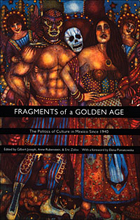 Fragments of a Golden Age: The Politics of Culture in Mexico Since 1940
Gilbert M. Joseph, Anne Rubenstein, and Eric Zolov, eds.
Duke University Press, 2001 During the twentieth century the Mexican government invested in the creation and promotion of a national culture more aggressively than any other state in the western hemisphere. Fragments of a Golden Age provides a comprehensive cultural history of the vibrant Mexico that emerged after 1940. Agreeing that the politics of culture and its production, dissemination, and reception constitute one of the keys to understanding this period of Mexican history, the volume’s contributors—historians, popular writers, anthropologists, artists, and cultural critics—weigh in on a wealth of topics from music, tourism, television, and sports to theatre, unions, art, and magazines. Each essay in its own way addresses the fragmentation of a cultural consensus that prevailed during the “golden age” of post–revolutionary prosperity, a time when the state was still successfully bolstering its power with narratives of modernization and shared community. Combining detailed case studies—both urban and rural—with larger discussions of political, economic, and cultural phenomena, the contributors take on such topics as the golden age of Mexican cinema, the death of Pedro Infante as a political spectacle, the 1951 “caravan of hunger,” professional wrestling, rock music, and soap operas. Fragments of a Golden Age will fill a particular gap for students of modern Mexico, Latin American studies, cultural studies, political economy, and twentieth century history, as well as to others concerned with rethinking the cultural dimensions of nationalism, imperialism, and modernization. Contributors. Steven J. Bachelor, Quetzil E. Castañeda, Seth Fein, Alison Greene, Omar Hernández, Jis & Trino, Gilbert M. Joseph, Heather Levi, Rubén Martínez, Emile McAnany, John Mraz, Jeffrey M. Pilcher, Elena Poniatowska, Anne Rubenstein, Alex Saragoza, Arthur Schmidt, Mary Kay Vaughan, Eric Zolov
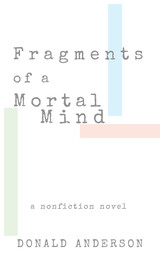 Fragments of a Mortal Mind: A Nonfiction Novel
Donald Anderson
University of Nevada Press, 2021 We are where we’ve been and what we’ve read, aren’t we? Where else do we get the experience we need to evocatively live?
At once a memoir, a reading journal, and a novel, Fragments of a Mortal Mind is a daring, contemporary commonplace book. Donald Anderson, critically acclaimed author of Gathering Noise from My Life and Below Freezing, shows us how the disparate elements of our lives collect to construct our deepest selves and help us to make sense of it all. Anderson layers his personal experiences and reflections with those of others who have wrestled with inner and outer social, cultural, and political memories that are not as accurate as history might suggest but that each of us believe nonetheless. He challenges the reader’s sense of memory and fact, downplaying the latter in explaining how each of us crafts our own personal histories.
As Anderson weaves his voice among numerous other voices and ideas that rest upon other ideas, we are faced with larger issues of human existence: war, memory, trauma, mortality, religion, fear, joy, ugliness, and occasional beauty. What we have here is a meditation on living in America. We are shown how the world we consume becomes us as we metabolize it. How we, as humans, through our own fragments of memories, influences, and experiences become our true selves. By charting fragments of thoughts over a lifetime, Anderson exposes a way of thinking and perceiving the world that is refreshingly intuitive and desperately needed. Fragments of a Mortal Mind is a powerful masterpiece that closely resembles our lived experiences and is a vivid reflection of our time.
Fragments of a World: William of Auvergne and His Medieval Life
Lesley Smith
University of Chicago Press, 2023 The first modern biography of medieval French scholar and bishop William of Auvergne.
Today, William of Auvergne (1180?–1249) is remembered for his scholarship about the afterlife as well as the so-called Trial of the Talmud. But the medieval bishop of Paris also left behind nearly 600 sermons delivered to all manner of people—from the royal court to the poorest in his care. In Fragments of a World, Lesley Smith uses these sermons to paint a vivid picture of this extraordinary cleric, his parishioners, and their bustling world. The first modern biography of the influential teacher, bishop, and theologian, Fragments of a World casts a new image of William of Auvergne for our times—deeply attuned to both the spiritual and material needs of an ever-changing populace in the medieval city.
Fragments of an Anarchist Anthropology
David Graeber
Prickly Paradigm Press, 2004 Everywhere anarchism is on the upswing as a political philosophy—everywhere, that is, except the academy. Anarchists repeatedly appeal to anthropologists for ideas about how society might be reorganized on a more egalitarian, less alienating basis. Anthropologists, terrified of being accused of romanticism, respond with silence . . . . But what if they didn't?
This pamphlet ponders what that response would be, and explores the implications of linking anthropology to anarchism. Here, David Graeber invites readers to imagine this discipline that currently only exists in the realm of possibility: anarchist anthropology.
Fragments of Bone: Neo-African Religions in a New World
Edited by Patrick Bellegarde-Smith
University of Illinois Press, 2005 In Fragments of Bone, thirteen essayists discuss African religions as forms of resistance and survival in the face of Western cultural hegemony and imperialism. The collection presents scholars working outside of the Western tradition with backgrounds in a variety of disciplines, genders, and nationalities. These experts draw on research, fieldwork, personal interviews, and spiritual introspection to support a provocative thesis: that fragments of ancestral traditions are fluidly interwoven into New World African religions as creolized rituals, symbolic systems, and cultural identities. Contributors: Osei-Mensah Aborampah, Niyi Afolabi, Patrick Bellegarde-Smith, Randy P. Conner, T. J. Desch-Obi, Ina Johanna Fandrich, Kean Gibson, Marilyn Houlberg, Nancy B. Mikelsons, Roberto Nodal, Rafael Ocasio, Miguel "Willie" Ramos, and Denise Ferreira da Silva
 Fragments of Culture: The Everyday of Modern Turkey
Kandiyoti, Deniz
Rutgers University Press, 2002 Fragments of Culture explores the evolving modern daily life of Turkey. Through analyses of language, folklore, film, satirical humor, the symbolism of Islamic political mobilization, and the shifting identities of diasporic communities in Turkey and Europe, this book provides a fresh and corrective perspective to the often-skewed perceptions of Turkish culture engendered by conventional western critiques.
In this volume, some of the most innovative scholars of post 1980s Turkey address the complex ways that suburbanization and the growth of a globalized middle class have altered gender and class relations, and how Turkish society is being shaped and redefined through consumption. They also explore the increasingly polarized cultural politics between secularists and Islamists, and the ways that previously repressed Islamic elements have reemerged to complicate the idea of an "authentic" Turkish identity. Contributors examine a range of issues from the adjustments to religious identity as the Islamic veil becomes marketed as a fashion item, to the media's increased attention in Turkish transsexual lifestyle, to the role of folk dance as a ritualized part of public life. Fragments of Culture shows how attention to the minutiae of daily life can successfully unravel the complexities of a shifting society. This book makes a significant contribution to both modern Turkish studies and the scholarship on cross-cultural perspectives in Middle Eastern studies.
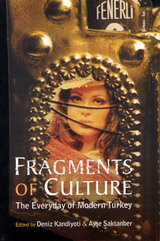 Fragments of Culture: The Everyday of Modern Turkey
Kandiyoti, Deniz
Rutgers University Press, 2002 Fragments of Culture explores the evolving modern daily life of Turkey. Through analyses of language, folklore, film, satirical humor, the symbolism of Islamic political mobilization, and the shifting identities of diasporic communities in Turkey and Europe, this book provides a fresh and corrective perspective to the often-skewed perceptions of Turkish culture engendered by conventional western critiques.
In this volume, some of the most innovative scholars of post 1980s Turkey address the complex ways that suburbanization and the growth of a globalized middle class have altered gender and class relations, and how Turkish society is being shaped and redefined through consumption. They also explore the increasingly polarized cultural politics between secularists and Islamists, and the ways that previously repressed Islamic elements have reemerged to complicate the idea of an "authentic" Turkish identity. Contributors examine a range of issues from the adjustments to religious identity as the Islamic veil becomes marketed as a fashion item, to the media's increased attention in Turkish transsexual lifestyle, to the role of folk dance as a ritualized part of public life. Fragments of Culture shows how attention to the minutiae of daily life can successfully unravel the complexities of a shifting society. This book makes a significant contribution to both modern Turkish studies and the scholarship on cross-cultural perspectives in Middle Eastern studies.
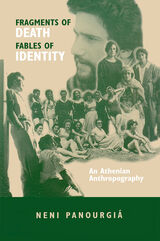 Fragments of Death, Fables of Identity: An Athenian Anthropography
Eleni Panourgia
University of Wisconsin Press, 1996 The death of her grandfather sets Neni Panourgiá and her readers on a path through the rituals of mourning and memory in modern urban Greece. Blending emotional richness and intellectual rigor, the anthropologist returns home in this exploration of kinship and identity within her own family and native city of Athens. What emerges is not only a new anthropological view of contemporary Greek culture, but also a reflective consideration of the self and subject.
Following men and women grappling with questions of mortality, Panourgiá moves through the streets and neighborhoods of Athens, seaside resorts and pistachio groves, the corridors and rooms of the Cancer Institute, wakes in apartments and observances in cemeteries. She mingles popular culture, venerable traditions, and contemporary theory as she considers how individuals define their identity as Athenians, as members of a family, as subjects of a polity, in sickness and in health, in death or in mourning. Memory is their guide as it negotiates their relationships with a personal, collective, and cultural past—and the memory of many deaths challenges and reaffirms, deconstructs and reconstructs who they are.
As intellectually ambitious as it is moving, Fragments of Death, Fables of Identity reconfigures the subject and object of anthropological study and recasts the line where experience ends and analysis begins.
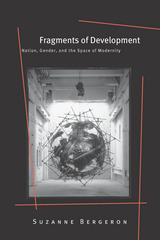 Fragments of Development: Nation, Gender, and the Space of Modernity
Suzanne Bergeron
University of Michigan Press, 2005 "A bold and challenging consideration of questions of development, economic globalization, communities and subjectivity from a unique feminist perspective. A must-read book for those who wish to understand restructuring and resistance in this era of intensified globalization."
---Isabella C. Bakker, York University
"Bergeron's pathbreaking analysis challenges orthodox development theories, questions current feminist economic thinking and highlights crucial new gendered challenges to globalization."
---Jane Parpart, Dalhousie University
"Cutting-edge scholarship. Bergeron deftly engages the complexity of current debates while retaining clarity, improving analyses, and illuminating alternatives."
---V. S. Peterson, University of Arizona
By tracing out the intersection between the imagined space of the national economy and the gendered construction of "expert" knowledge in development thought, Suzanne Bergeron provides a provocative analysis of development discourse and practice. By elaborating a framework of including/excluding economic subjects and activities in development economics, she provides a rich account of the role that economists have played in framing the contested political and cultural space of development.
Bergeron's account of the construction of the national economy as an object of development policy follows its shifting meanings through modernization and growth models, dependency theory, structural adjustment, and contemporary debates about globalization and highlights how intersections of nation and economy are based on gendered and colonial scripts. The author's analysis of development debates effectively demonstrates that critics of development who ignore economists' nation stories may actually bolster the formation they are attempting to subvert. Fragments of Development is essential reading for those interested in development studies, feminist economics, international political economy, and globalization studies.
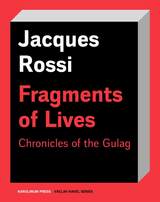 Fragments of Lives: Chronicles of the Gulag
Jacques Rossi
Karolinum Press, 2018 In Fragments of Lives, Gulag survivor Jacques Rossi opens a window onto everyday life inside the notorious Soviet prison camp through a series of portraits of inmates and camp personnel across all walks of life—from workers to peasants, soldiers, civil servants, and party apparatchiks. Featuring Rossi’s original illustrations and written in a tone as sharp and dry as that of Russian writer Varlam Shalamov, Rossi’s vignettes are also filled with surprising humor. A former agent in the Spanish Civil War and a lifelong Communist, Rossi never considered himself a victim. Instead, in the manner of Primo Levi, Solzhenitsyn, and Margaret Buber-Neumann, he sought to share and transmute his experience within the living hell of the Gulag. In so doing, he gives voice to the inmates whose lives were shattered by one of the most corrupt and repressive regimes of the twentieth century.
An impassioned reminder to always question one’s beliefs, to have the courage to give up one’s illusions at the risk of one’s life, Fragments of Lives lays bare, with acute observations and biting wit, the falsity of the Soviet utopia that transformed Rossi’s home into a “huge Potemkin village, a farcical sham dissimulating oceans of mud and blood.”
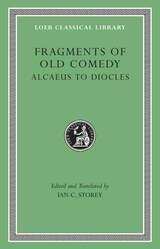 Fragments of Old Comedy, Volume I: Alcaeus to Diocles
Ian C. Storey
Harvard University Press, 2011 Laughter in stitches.
The era of Old Comedy (ca. 485 – ca. 380 BC), when theatrical comedy was created and established, is best known through the extant plays of Aristophanes, but there were many other poets whose comedies survive only in fragments. This new Loeb edition, the most extensive selection of the fragments available in English, presents the work of more than fifty-five poets, including Cratinus and Eupolis, the other members (along with Aristophanes) of the canonical Old Comic triad.
For each poet and play there is an introduction, and for many there are brief notes and recent bibliography. Also included are a selection of ancient testimonia to Old Comedy, nearly one hundred unattributed fragments (both book and papyri), and descriptions of thirty vase paintings illustrating Old Comic scenes. The texts are based on the monumental edition of Kassel and Austin, updated to reflect the latest scholarship. The complete Loeb Fragments of Old Comedy is in three volumes.
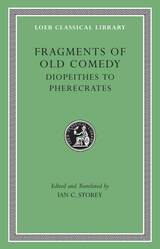 Fragments of Old Comedy, Volume II: Diopeithes to Pherecrates
Ian C. Storey
Harvard University Press, 2011 Laughter in stitches.
The era of Old Comedy (ca. 485 – ca. 380 BC), when theatrical comedy was created and established, is best known through the extant plays of Aristophanes, but there were many other poets whose comedies survive only in fragments. This new Loeb edition, the most extensive selection of the fragments available in English, presents the work of more than fifty-five poets, including Cratinus and Eupolis, the other members (along with Aristophanes) of the canonical Old Comic triad.
For each poet and play there is an introduction, and for many there are brief notes and recent bibliography. Also included are a selection of ancient testimonia to Old Comedy, nearly one hundred unattributed fragments (both book and papyri), and descriptions of thirty vase paintings illustrating Old Comic scenes. The texts are based on the monumental edition of Kassel and Austin, updated to reflect the latest scholarship. The complete Loeb Fragments of Old Comedy is in three volumes.
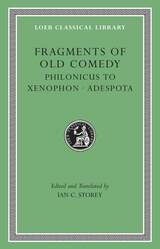 Fragments of Old Comedy, Volume III: Philonicus to Xenophon. Adespota
Ian C. Storey
Harvard University Press, 2011 Laughter in stitches.
The era of Old Comedy (ca. 485 – ca. 380 BC), when theatrical comedy was created and established, is best known through the extant plays of Aristophanes, but there were many other poets whose comedies survive only in fragments. This new Loeb edition, the most extensive selection of the fragments available in English, presents the work of more than fifty-five poets, including Cratinus and Eupolis, the other members (along with Aristophanes) of the canonical Old Comic triad.
For each poet and play there is an introduction, and for many there are brief notes and recent bibliography. Also included are a selection of ancient testimonia to Old Comedy, nearly one hundred unattributed fragments (both book and papyri), and descriptions of thirty vase paintings illustrating Old Comic scenes. The texts are based on the monumental edition of Kassel and Austin, updated to reflect the latest scholarship. The complete Loeb Fragments of Old Comedy is in three volumes.
Fragments of Rationality: Postmodernity and the Subject of Composition
Lester Faigley
University of Pittsburgh Press, 1992
In an insightful assessment of the study and teaching of writing against the larger theoretical, political, and technological upheavals of the past thirty years, Fragments of Rationality questions why composition studies has been less affected by postmodern theory than other humanities and social science disciplines.
 Fragments of the Histories. Letters to Caesar
Sallust
Harvard University Press, 2015 Chronicles of a Caesarean partisan.
Sallust, Gaius Sallustius Crispus (86–35 BC), a Sabine from Amiternum, acted as tribune against Cicero and Milo in 52, joined Caesar after being expelled from the Senate in 50, was restored to the Senate by Caesar and took part in his African campaign as praetor in 46, and was then appointed governor of New Africa (Numidia). Upon his return to Rome he narrowly escaped conviction for malfeasance in office, retired from public life, and took up historiography. Sallust’s last work, the annalistic Histories in five books, is much more expansive than his monographs on Catiline and Jugurtha (LCL 116), treating the whole of Roman history at home and abroad in the post-Sullan age. Although fragmentary, it provides invaluable information and insight about a crucial period of history spanning the period from 78 to around 67 BC.
Although Sallust is decidedly unsubtle and partisan in analyzing people and events, his works are important and significantly influenced later historians, notably Tacitus. Taking Thucydides as his model but building on Roman stylistic and rhetorical traditions, Sallust achieved a distinctive style, concentrated and arresting; lively characterizations, especially in the speeches; and skill at using particular episodes to illustrate large general themes.
For this volume, which completes the Loeb Classical Library edition of Sallust’s works, John T. Ramsey has freshly edited the Histories and the two pseudo-Sallustian Letters to Caesar, supplying ample annotation.
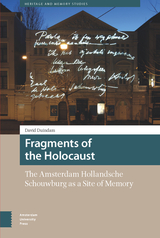 Fragments of the Holocaust: The Amsterdam Hollandsche Schouwburg as a Site of Memory
David Duindam
Amsterdam University Press, 2019 Why do we attach so much value to sites of Holocaust memory, if all we ever encounter are fragments of a past that can never be fully comprehended? David Duindam examines how the Hollandsche Schouwburg, a former theater in Amsterdam used for the registration and deportation of nearly 50,000 Jews, fell into disrepair after World War II before it became the first Holocaust memorial museum of the Netherlands. Fragments of the Holocaust: The Amsterdam Hollandsche Schouwburg as a Site of Memory combines a detailed historical study of the postwar period of this site with a critical analysis of its contemporary presentation by placing it within international debates concerning memory, emotionally fraught heritage and museum studies. A case is made for the continued importance of the Hollandsche Schouwburg and other comparable sites, arguing that these will remain important in the future as indexical fragments where new generations can engage with the memory of the Holocaust on a personal and affective level.
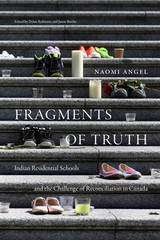 Fragments of Truth: Residential Schools and the Challenge of Reconciliation in Canada
Naomi Angel. Edited by Dylan Robinson and Jamie Berthe.
Duke University Press, 2022 In 2008, the Canadian government established a Truth and Reconciliation Commission (TRC) to review the history of the residential school system, a brutal colonial project that killed and injured many Indigenous children and left a legacy of trauma and pain. In Fragments of Truth Naomi Angel analyzes the visual culture of reconciliation and memory in relation to this complex and painful history. In her analyses of archival photographs from the residential school system, representations of the schools in popular media and literature, and testimonies from TRC proceedings, Angel traces how the TRC served as a mechanism through which memory, trauma, and visuality became apparent. She shows how many Indigenous communities were able to use the TRC process as a way to claim agency over their memories of the schools. Bringing to light the ongoing costs of transforming settler states into modern nations, Angel demonstrates how the TRC offers a unique optic through which to survey the long history of colonial oppression of Canada’s Indigenous populations.
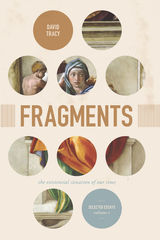 Fragments: The Existential Situation of Our Time: Selected Essays, Volume 1
David Tracy
University of Chicago Press, 2020 David Tracy is widely considered one of the most important religious thinkers in North America, known for his pluralistic vision and disciplinary breadth. His first book in more than twenty years reflects Tracy’s range and erudition, collecting essays from the 1980s to 2018 into a two-volume work that will be greeted with joy by his admirers and praise from new readers.
In the first volume, Fragments, Tracy gathers his most important essays on broad theological questions, beginning with the problem of suffering across Greek tragedy, Christianity, and Buddhism. The volume goes on to address the Infinite, and the many attempts to categorize and name it by Plato, Aristotle, Rilke, Heidegger, and others. In the remaining essays, he reflects on questions of the invisible, contemplation, hermeneutics, and public theology. Throughout, Tracy evokes the potential of fragments (understood both as concepts and events) to shatter closed systems and open us to difference and Infinity. Covering science, literature, philosophy, psychoanalysis, and non-Western religious traditions, Tracy provides in Fragments a guide for any open reader to rethink our fragmenting contemporary culture.
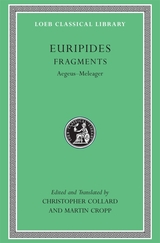 Fragments, Volume I: Aegeus–Meleager
Edited and Translated by Christopher Collard and Martin Cropp
Harvard University Press Lost works by ancient Greece’s third great tragedian.
Eighteen of the ninety or so plays composed by Euripides between 455 and 406 BC survive in a complete form and are included in the preceding six volumes of the Loeb Euripides. A further fifty-two tragedies and eleven satyr plays, including a few of disputed authorship, are known from ancient quotations and references and from numerous papyri discovered since 1880. No more than one-fifth of any play is represented, but many can be reconstructed with some accuracy in outline, and many of the fragments are striking in themselves. The extant plays and the fragments together make Euripides by far the best known of the classic Greek tragedians.
This edition, in a projected two volumes, offers the first complete English translation of the fragments together with a selection of testimonia bearing on the content of the plays. The texts are based on the recent comprehensive edition of R. Kannicht. A general Introduction discusses the evidence for the lost plays. Each play is prefaced by a select bibliography and an introductory discussion of its mythical background, plot, and location of the fragments, general character, chronology, and impact on subsequent literary and artistic traditions.
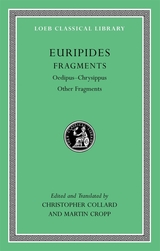 Fragments, Volume II: Oedipus–Chrysippus. Other Fragments
Euripides
Harvard University Press Lost works by ancient Greece’s third great tragedian.
Eighteen of the ninety or so plays composed by Euripides between 455 and 406 BC survive in a complete form and are included in the preceding six volumes of the Loeb Euripides. A further fifty-two tragedies and eleven satyr plays, including a few of disputed authorship, are known from ancient quotations and references and from numerous papyri discovered since 1880. No more than one-fifth of any play is represented, but many can be reconstructed with some accuracy in outline, and many of the fragments are striking in themselves. The extant plays and the fragments together make Euripides by far the best known of the classic Greek tragedians.
This edition, in a projected two volumes, offers the first complete English translation of the fragments together with a selection of testimonia bearing on the content of the plays. The texts are based on the recent comprehensive edition of R. Kannicht. A general Introduction discusses the evidence for the lost plays. Each play is prefaced by a select bibliography and an introductory discussion of its mythical background, plot, and location of the fragments, general character, chronology, and impact on subsequent literary and artistic traditions.
 Fragonard: Art and Eroticism
Mary D. Sheriff
University of Chicago Press, 1990 In the aftermath of the French Revolution, Jean Honoré Fragonard, perhaps the most significant French painter of the eighteenth century, was condemned first as a purveyor of luxury items and later as an artist who abandoned noble subjects for the erotic genre. In this revisionist, art-historical study, Mary D. Sheriff challenges such pejorative views of Fragonard by arguing that he is better understood as an artist whose unsurpassed technical skill and witty manipulation of academic standards established a dynamic relation with the audience his art both courted and created.
Sheriff begins her inquiry with an appraisal of Fragonard criticism, followed by an extensive and thoroughly original reading of selected works by Fragonard and of the eroticism encoded in them. Art and eroticism converge in a discussion of execution, in which Sheriff explores the changing conception of execution and elucidates its complex rhetorical and cultural underpinnings. Drawing on analytic methods from contemporary critical theory and an understanding of each work's cultural milieu, Sheriff pays particular attention throughout to the relation between beholder and work of art, which she views as manifest in the artist's preoccupation with the play between the real and the fictive. Scholars and students of art history, eighteenth-century culture and history, critical theory, literary criticism, and all those drawn to the work of this great French painter will find this work essential reading.
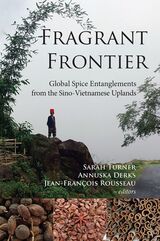 Fragrant Frontier: Global Spice Entanglements from the Sino-Vietnamese Uplands
Edited by Sarah Turner, Annuska Derks, and Jean-François Rousseau
National University of Singapore Press, 2022 Since its inception over two millennia ago, the spice trade has connected and transformed the environments, politics, cultures, and cuisines of vastly different societies around the world. The ‘magical’ qualities of spices mean they offer more than a mere food flavoring, often evoking memories of childhood events or specific festivals. Although spices are frequently found in our kitchen cupboards, how they get there has something of a mythical allure. In this ethnographically rich and insightful study, the authors embark on a journey of demystification that starts in the Sino-Vietnamese uplands with three spices – star anise, black cardamom, and cassia (cinnamon) – and ends on dining tables across the globe. This book foregrounds the experiences of ethnic minority farmers cultivating these spices, highlighting nuanced entanglements among livelihoods, environment, ethnic identity, and external pressures, as well as other factors at play. It then investigates the complex commodity chains that move and transform these spices from upland smallholdings and forests in this frontier to global markets, mapping the flows of spices, identifying the numerous actors involved, and teasing out critical power imbalances. Finally, it focuses on value-creation and the commoditization of these spices across a spectrum of people and places. This rich and carefully integrated volume offers new insights into upland frontier livelihoods and the ongoing implications of the contemporary agrarian transition. Moreover, it bridges the gap in our knowledge regarding how these specific spices, cultivated for centuries in the mountainous Sino-Vietnamese uplands, become everyday ingredients in Global North food, cosmetics, and medicines. Links to online resources, including story maps, provide further insights and visual highlights.
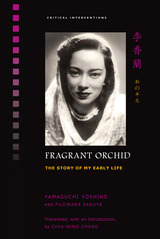 Fragrant Orchid: The Story of My Early Life
Yamaguchi Yoshiko and Fujiwara Sakuya, translated by Chia-ning Chang
University of Hawaii Press, 2015 The acclaimed actress and legendary singer, Yamaguchi Yoshiko (aka Li Xianglan, 1920– 2014), emerged from Japan- occupied Manchuria to become a transnational star during the Second Sino-Japanese war. Born to Japanese parents, raised in Manchuria, and educated in Beijing, the young Yamaguchi learned to speak impeccable Mandarin Chinese and received professional training in operatic singing. When recruited by the Manchurian Film Association in 1939 to act in “national policy” films in the service of Japanese imperialism in China, she allowed herself to be presented as a Chinese, effectively masking her Japanese identity in both her professional and private lives. Yamaguchi soon became an unprecedented transnational phenomenon in Manchuria, Shanghai, and Japan itself as the glamorous female lead in such well-known films as Song of the White Orchid (1939), China Nights (1940), Pledge in the Desert (1940), and Glory to Eternity (1943). Her signature songs, including “When Will You Return?” and “The Evening Primrose,” swept East Asia in the waning years of the war and remained popular well into the postwar decades. Ironically, although her celebrated international stardom was without parallel in wartime East Asia, she remained a puppet within a puppet state, choreographed at every turn by Japanese film studios in accordance with the expediencies of Japan’s continental policy. In a dramatic turn of events after Japan’s defeat, she was placed under house arrest in Shanghai by the Chinese Nationalist forces and barely escaped execution as a traitor to China. Her complex and intriguing life story as a convenient pawn, willing instrument, and tormented victim of Japan’s imperialist ideology is told in her bestselling autobiography, translated here in full for the first time in English. An addendum reveals her postwar career in Hollywood and Broadway in the 1950s, her friendship with Charlie Chaplin, her first marriage to Isamu Noguchi, and her postwar life as singer, actress, political figure, television celebrity, and private citizen.
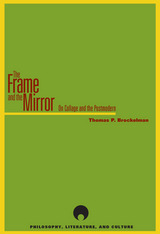 The Frame and the Mirror: On Collage and the Postmodern
Thomas P. Brockelman
Northwestern University Press, 2001 If the postmodern is a collage—as some critics have suggested—or if collage is itself a kernel of the postmodern, what does this mean for our way of understanding the world? The Frame and the Mirror uses this question to probe the distinctive character of the postmodern situation and the philosophical problem of representation. Brockelman’s work is itself a collage of sorts, using juxtapositions of critics and art historical figures to conduct a debate between such figures as Karsten Harries, Gianni Vattimo, Rosalind Krauss, Immanuel Kant, Jean-Francois Lyotard, Slavo Žižek, and Le Corbusier about issues such as truth in art, perspectivism, theatricality, the sublime, psychoanalytic theory, politics, and urbanism.
More than an introduction to the postmodern, The Frame and the Mirror advances our understanding of the contemporary world by relating its features to the peculiar characteristics of collage. Ultimately, Brockelman shows how collage demands that we reinterpret modernity, conceiving of it as suspended between a loss of certainty and a new kind of knowledge about the human condition. In doing so, his work challenges many of the claims made in the name of postmodernism—and offers in their place a new and ironic view of the cultural space in which contemporary and historical events occur.
 The Framed Houses of Massachusetts Bay, 1625–1725
Abbott Lowell Cummings
Harvard University Press, 1979 A nation's buildings are a record of the character and aspirations of its people. In a rich blend of social and architectural history, Abbott Lowell Cummings reconstructs, through text and pictures, the framed houses of Massachusetts Bay that reflect the straightforward honesty of our earliest northern settlers and their profound love of craftsmanship.
A substantial number of the nation's seventeenth-century houses have been preserved in Massachusetts, and Cummings provides illustrations for a majority of them. He describes the dwellings in detail, and includes architectural drawings that were especially commissioned for this book. He demonstrates that the builders were far more sophisticated than previously imagined and that, while maintaining their English timber-building traditions, they were astonishingly adaptable to their new environment.
Beyond the houses themselves, Cummings discusses evolutions in pioneer life. The most simple kinds of changes in architecture, Cummings shows, indicated singular changes in family living. Such additions as kitchens and parlors, or the moving of the master bedroom to a second floor, suggest shifts in the private and social lives of families.
The Framed Houses of Massachusetts Bay is a splendid story of innovations— of restless, migratory people and their architectural and social responses to the heavily forested New World. It is the first chapter in the long saga of America's preoccupation with technology as it affected the early American home.
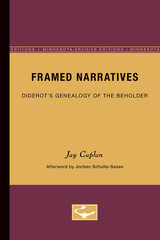 Framed Narratives: Diderot’s Genealogy of the Beholder
Jay CaplanAfterword by Jochen Schulte-Sasse
University of Minnesota Press, 1985 Framed Narratives was first published in 1985. Minnesota Archive Editions uses digital technology to make long-unavailable books once again accessible, and are published unaltered from the original University of Minnesota Press editions. The work of French philosophe Denis Diderot (1713-1784) has inspired conflicting reactions in those who encounter him. Diderot has been admired and despised; he has moved his readers and irritated them - often at the same time. His work continually shifts between mutually exclusive positions - neither of which provides an entirely satisfactory answer to the question at hand, yet neither of which can be disregarded. The nature of these paradoxes has been the fundamental problem in Diderot, a problem that his interpreters have approached by imagining synthetic perspectives or frames within which the paradoxes could be resolved. In Framed Narratives, Jay Caplan focuses on the problem of framing in and of Diderot. He proposes an interpretive model that draws upon the notion of dialogue developed by Mikhail Bakhtin. For Bakhtin, no utterance can be reduced to a univocal meaning; one's discourse is always marked by other voices. In Diderot, Caplan shows, the narrative device of the tableau engages the reader (or beholder) in a dialogic relationship with the author and the characters. Diderot defines the players of those roles as members of a family, one of whom is always missing, and that sacrificial relationship becomes an integral part of the text. Caplan then uses the concept of the tableau to interpret the rhetoric of gender, genre, and pathos in Diderot's works for and about the theater, his novel The Nun, the philosophical dialogue D'Alembert's Dream,and his correspondence. What emerges from these readings is not only an interpretation of certain texts, but a description of Diderot's—and, by implication, early bourgeois—poetics. Framed Narratives is, in addition, one of the first attempts to rely upon Bakhtin's concepts in the interpretation of specific texts, in this case the work of an essentially dialogic writer. A socio-historical supplement to Framed Narratives is provided in Jochen Schulte-Sasse's afterword.
Framed Spaces: Photography and Memory in Contemporary Installation Art
Monica E. McTighe
Dartmouth College Press, 2012 While earlier theorists held up “experience” as the defining character of installation art, few people have had the opportunity to walk through celebrated installation pieces from the past. Instead, installation art of the past is known through archival photographs that limit, define, and frame the experience of the viewer. Monica E. McTighe argues that the rise of photographic–based theories of perception and experience, coupled with the inherent closeness of installation art to the field of photography, had a profound impact on the very nature of installation art, leading to a flood of photography– and film–based installations. With its close readings of specific works, Framed Spaces will appeal to art historians and theorists across a broad spectrum of the visual arts.
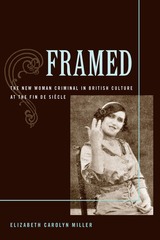 Framed: The New Woman Criminal in British Culture at the Fin de Siecle
Elizabeth Carolyn Miller
University of Michigan Press, 2008 Framed uses fin de siècle British crime narrative to pose a highly interesting question: why do female criminal characters tend to be alluring and appealing while fictional male criminals of the era are unsympathetic or even grotesque? In this elegantly argued study, Elizabeth Carolyn Miller addresses this question, examining popular literary and cinematic culture from roughly 1880 to 1914 to shed light on an otherwise overlooked social and cultural type: the conspicuously glamorous New Woman criminal. In so doing, she breaks with the many Foucauldian studies of crime to emphasize the genuinely subversive aspects of these popular female figures. Drawing on a rich body of archival material, Miller argues that the New Woman Criminal exploited iconic elements of late nineteenth- and early twentieth-century commodity culture, including cosmetics and clothing, to fashion an illicit identity that enabled her to subvert legal authority in both the public and the private spheres. "This is a truly extraordinary argument, one that will forever alter our view of turn-of-the-century literary culture, and Miller has demonstrated it with an enrapturing series of readings of fictional and filmic criminal figures. In the process, she has filled a gap between feminist studies of the New Woman of the 1890s and more gender-neutral studies of early twentieth-century literary and social change. Her book offers an extraordinarily important new way to think about the changing shape of political culture at the turn of the century."
---John Kucich, Professor of English, Rutgers University "Given the intellectual adventurousness of these chapters, the rich material that the author has brought to bear, and its combination of archival depth and disciplinary range, any reader of this remarkable book will be amply rewarded."
---Jonathan Freedman, Professor of English and American Culture, University of Michigan Elizabeth Carolyn Miller is Assistant Professor of English at the University of California, Davis.
digitalculturebooks is an imprint of the University of Michigan and the Scholarly Publishing Office of the University of Michigan Library dedicated to publishing innovative and accessible work exploring new media and their impact on society, culture, and scholarly communication. Visit the website at www.digitalculture.org.
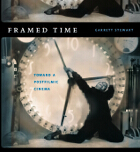 Framed Time: Toward a Postfilmic Cinema
Garrett Stewart
University of Chicago Press, 2007 Italian director Michelangelo Antonioni claimed, three decades ago, that different conceptions of time helped define the split in film between European humanism and American science fiction. And as Garrett Stewart argues here, this transatlantic division has persisted since cinema’s 1995 centenary, made more complex by the digital technology that has detached movies from their dependence on the sequential frames of the celluloid strip.
Brilliantly interpreting dozens of recent films—from Being John Malkovich, Donnie Darko, and The Sixth Sense to La mala educación and Caché —Stewart investigates how their treatments of time reflect the change in media from film’s original rolling reel to today’s digital pixel. He goes on to show—with 140 stills—how American and European narratives confront this shift differently: while Hollywood movies tend to revolve around ghostly afterlives, psychotic doubles, or violent time travel, their European counterparts more often feature second sight, erotic telepathy, or spectral memory. Stewart questions why these recent plots, in exploring temporality, gravitate toward either supernatural or uncanny apparitions rather than themes of digital simulation. In doing so, he provocatively continues the project he began with Between Film and Screen, breaking new ground in visual studies, cinema history, and media theory.
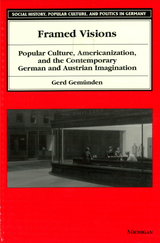 Framed Visions: Popular Culture, Americanization, and the Contemporary German and Austrian Imagination
Gerd Gemunden
University of Michigan Press, 1998 Framed Visions analyzes the pivotal role American mass media and popular culture have played in shaping the political, social, and psychological identity of postwar Germans and Austrians. Through detailed readings of films, novels, plays, and poems of a variety of contemporary artists--including Rainer Werner Fassbinder, Wim Wenders, Elfriede Jelinek, Herbert Achternbusch, Monika Treut, Peter Handke, and Rolf Dieter Brinkmann--Gerd Gemuinden reveals the paradoxical stance of this generation toward American politics and Hollywood aesthetics. On the one hand, they are pulled toward a culture that has shaped childhood images, tastes and desires; on the other, they reject American politics and the colonizing effect of its mass culture. In contrast to most scholarship about the reception of U.S. culture abroad, this study underscores the imaginary relation of contemporary German and Austrian artists to America. Topics such as "Americanization" and "cultural imperialism" are therefore treated not as a foreign principle imposed from the outside but as ways that German and Austrian artists have tried to come to terms with their own problematic culture and history. Gem_nden's study elucidates how the culture of the United States has been mapped in contradictory ways onto questions of national and cultural identity in Germany and Austria over the last thirty years. Gerd Gemuinden is Assistant Professor of German and Comparative Literature, Dartmouth College.
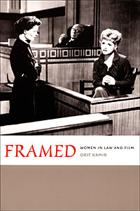 Framed: Women in Law and Film
Orit Kamir
Duke University Press, 2006 Some women attack and harm men who abuse them. Social norms, law, and films all participate in framing these occurrences, guiding us in understanding and judging them. How do social, legal, and cinematic conventions and mechanisms combine to lead us to condemn these women or exonerate them? What is it, exactly, that they teach us to find such women guilty or innocent of, and how do they do so? Through innovative readings of a dozen movies made between 1928 and 2001 in Europe, Japan, and the United States, Orit Kamir shows that in representing “gender crimes,” feature films have constructed a cinematic jurisprudence, training audiences worldwide in patterns of judgment of women (and men) in such situations. Offering a novel formulation of the emerging field of law and film, Kamir combines basic legal concepts—murder, rape, provocation, insanity, and self-defense—with narratology, social science methodologies, and film studies. Framed not only offers a unique study of law and film but also points toward new directions in feminist thought. Shedding light on central feminist themes such as victimization and agency, multiculturalism, and postmodernism, Kamir outlines a feminist cinematic legal critique, a perspective from which to evaluate the “cinematic legalism” that indoctrinates and disciplines audiences around the world. Bringing an original perspective to feminist analysis, she demonstrates that the distinction between honor and dignity has crucial implications for how societies construct women, their social status, and their legal rights. In Framed, she outlines a dignity-oriented, honor-sensitive feminist approach to law and film.
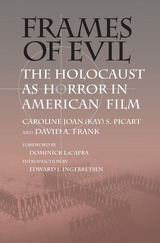 Frames of Evil: The Holocaust as Horror in American Film
Caroline J. S. Picart, and David A. Frank. Foreword by Dominick LaCapra. Introduction by Edward J. Ingebretsen
Southern Illinois University Press, 2006 Challenging the classic horror frame in American film American filmmakers appropriate the “look” of horror in Holocaust films and often use Nazis and Holocaust imagery to explain evil in the world, say authors Caroline Joan (Kay) S. Picart and David A. Frank. In Frames of Evil: The Holocaust as Horror in American Film, Picart and Frank challenge this classic horror frame—the narrative and visual borders used to demarcate monsters and the monstrous. After examining the way in which directors and producers of the most influential American Holocaust movies default to this Gothic frame, they propose that multiple frames are needed to account for evil and genocide. Using Schindler’s List, The Silence of the Lambs, and Apt Pupil as case studies, the authors provide substantive and critical analyses of these films that transcend the classic horror interpretation. For example, Schindler’s List, say Picart and Frank, has the appearance of a historical docudrama but actually employs the visual rhetoric and narrative devices of the Hollywood horror film. The authors argue that evil has a face: Nazism, which is configured as quintessentially innate, and supernaturally crafty. Frames of Evil, which is augmented by thirty-six film and publicity stills, also explores the commercial exploitation of suffering in film and offers constructive ways of critically evaluating this exploitation. The authors suggest that audiences will recognize their participation in much larger narrative formulas that place a premium on monstrosity and elide the role of modernity in depriving millions of their lives and dignity, often framing the suffering of others in a manner that allows for merely “documentary” enjoyment.
Frames of Friction: Black Genealogies, White Hegemony, and the Essay as Critical Intervention
Carsten Junker
Campus Verlag, 2010 In Frames of Friction, Carsten Junker maps out a dazzling panorama of critical cultural debatesfrom the twentieth century to explore the ways in which African American speakers and writers established their authority and gained recognition. Taking into account the latest ideas from gender studies and African American studies, as well as current essay theory, Junker juxtaposes the ways in which African American authors and speakers from the 1920s to the 1970s debated critical topics with their white and Jewish contemporaries in order to emphasize the dialogic nature of the essay form. Ultimately, Junker hones in on the genre of essay itself, arguing that it is repeatedly questioned and reconstituted during times of social change.
 Frames of Mind: A Post-Jungian Look at Cinema, Television and Technology
Luke Hockley
Intellect Books, 2007 The eminent psychologist Carl Jung is best known for such indelible contributions to modern thought as the concept of the collective unconscious, but his wide-spread work can also be fruitfully employed to analyze popular culture. Frames of Mind offers an introduction to the world of Post-Jungian film and television studies, examining how Jung’s theories can heighten our understanding of everything from Chinatown and Star Trek to advertisements.
In this illuminating psychoanalysis of our media environment, Luke Hockley probes questions such as why we have genuine emotional responses to film events we know to be fictional, why we are compulsively driven to watch television, and how advertisers use unconscious motifs to persuade viewers. “A beautiful job! Hockley’s is a big screen approach, for he seeks to link Jungian and post-Jungian ideas about film with the sounds and images that flicker across everyone’s everyday experience. In this mixture of the formal and the informal, he performs an act of therapy for Jungian media criticism itself, rooting it (for its own good) in the popular and the ubiquitous. The process brings out aspects of Jung’s work on sexuality and the body that often get overlooked in academic circles.”—Andrew Samuels, Professor of Analytical Psychology, University of Essex
 A Framework for the Good
Kevin Kinghorn
University of Notre Dame Press, 2016 This book provides an ethical framework for understanding the good and how we can experience it in increasing measure. In Part 1, Kevin Kinghorn offers a formal analysis of the meaning of the term "good," the nature of goodness, and why we are motivated to pursue it. Setting this analysis within a larger ethical framework, Kinghorn proposes a way of understanding where noninstrumental value lies, the source of normativity, and the relationship between the good and the right. Kinghorn defends a welfarist conception of the good along with the view that mental states alone directly affect a person's well-being. He endorses a Humean account of motivation—in which desires alone motivate us, not moral beliefs—to explain the source of the normative pressure we feel to do the good and the right. Turning to the place of objectivity within ethics, he concludes that the concept of "objective wrongness" is a misguided one, although a robust account of "objective goodness" is still possible. In Part 2, Kinghorn shifts to a substantive, Christian account of what the good life consists in as well as how we can achieve it. Hume's emphasis of desire over reason is not challenged but rather endorsed as a way of understanding both the human capacity for choice and the means by which God prompts us to pursue relationships of benevolence, in which our ultimate flourishing consists. This original, carefully argued book will interest scholars and graduate students in moral philosophy and philosophy of religion.
"This is a terrific work, in many respects. It is ambitious, clear, engaging, and energetic. The better part of the second half of the book makes some original, positive moves in thinking about values from the standpoint of Christian theism. The material is nuanced, well-illustrated with analogies and thought experiments." —Charles Taliaferro, St. Olaf College
 The Framework of the New Testament Stories
Arnold Ehrhardt
Harvard University Press Dr. Ehrhardt considers that New Testament teaching could benefit by being more closely related to its context and background than is often the case. He suggests that the method of the presentation of the Gospel is important, as well as the intention behind it.
In an examination of the background, Dr. Ehrhardt deals principally with two aspects. The first is the fact that the New Testament and the form Christianity took in the first few centuries after the death of Christ were subject to several influences. One of the most important was Greek and Dr. Ehrhardt traces Hellenistic influence in St. Paul's treatment of Christ, in Greek modes of thought in the preaching of the Gospel and the historical tradition in the Book of Acts. He then turns to Jewish and Roman practices and ideas which played a part in forming Church doctrine and ritual, such as ordination and baptism. Secondly, he discusses the daily life of the newly-converted Christians, the problems they met with and the changes that took place.
It is hoped that these essays, many of which aim at giving a fresh, rather than a final view, may prove stimulating by asking unfamiliar questions and offering new solutions.
 Framing a Lost City: Science, Photography, and the Making of Machu Picchu
By Amy Cox Hall
University of Texas Press, 2017 <p>When Hiram Bingham, a historian from Yale University, first saw Machu Picchu in 1911, it was a ruin obscured by overgrowth whose terraces were farmed a by few families. A century later, Machu Picchu is a UNESCO world heritage site visited by more than a million tourists annually. This remarkable transformation began with the photographs that accompanied Bingham’s article published in <i>National Geographic</i> magazine, which depicted Machu Picchu as a lost city discovered. Focusing on the practices, technologies, and materializations of Bingham’s three expeditions to Peru (1911, 1912, 1914–1915), this book makes a convincing case that visualization, particularly through the camera, played a decisive role in positioning Machu Picchu as both a scientific discovery and a Peruvian heritage site.</p><p>Amy Cox Hall argues that while Bingham’s expeditions relied on the labor, knowledge, and support of Peruvian elites, intellectuals, and peasants, the practice of scientific witnessing, and photography specifically, converted Machu Picchu into a cultural artifact fashioned from a distinct way of seeing. Drawing on science and technology studies, she situates letter writing, artifact collecting, and photography as important expeditionary practices that helped shape the way we understand Machu Picchu today. Cox Hall also demonstrates that the photographic evidence was unstable, and, as images circulated worldwide, the “lost city” took on different meanings, especially in Peru, which came to view the site as one of national patrimony in need of protection from expeditions such as Bingham’s.</p>
 Framing Abuse: Media Influence and Public Understanding of Sexual Violence Against Children
Jenny Kitzinger
Pluto Press, 2004 This book offers fascinating insights into how the media shape the way we think. Combining in-depth analysis of media representations of child sexual abuse with focus group discussions and interviews with around 500 journalists, campaigners and a cross-section of 'the public', Jenny Kitzinger reveals the media's role in contemporary society.
Which stories attract attention and why? What strategies do journalists and campaigners use to persuade people and how do we respond? Answering these and other questions, Kitzinger demonstrates how media reporting can impact on people's knowledge of the 'facts', perceptions of risk, sense of appropriate policy responses and even how we interpret our own experiences.
Kitzinger examines feminist initiatives to challenge sexual violence, the emergence of incest as a social problem and the development of new survivor identities. She also explores stereotypes around sex offenders,interrogates protests against 'paedophiles-in-the-community' and presents a detailed analysis of the impact of scandals about disputed abuse accusations.
This book is essential reading for anyone interested in theories of media influence, identity and social change or who wishes to encourage responsible journalism. It is also a key resource for anyone concerned about sexual violence and the protection of children or who is attempting to design intervention strategies.
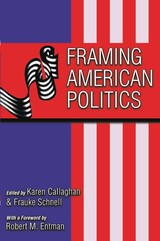 Framing American Politics
Karen Callaghan
University of Pittsburgh Press, 2005
Most issues in American political life are complex and multifaceted, subject to multiple interpretations and points of view. How issues are framed matters enormously for the way they are understood and debated. For example, is affirmative action a just means toward a diverse society, or is it reverse discrimination? Is the war on terror a defense of freedom and liberty, or is it an attack on privacy and other cherished constitutional rights? Bringing together some of the leading researchers in American politics, Framing American Politics explores the roles that interest groups, political elites, and the media play in framing political issues for the mass public.
The contributors address some of the most hotly debated foreign and domestic policies in contemporary American life, focusing on both the origins and process of framing and its effects on citizens. In so doing, these scholars clearly demonstrate how frames can both enhance and hinder political participation and understanding.
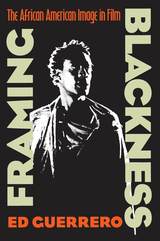 Framing Blackness: The African American Image in Film
Ed Guerrero
Temple University Press, 1993 From D.W. Griffith's The Birth of a Nation to Spike Lee's Malcolm X, Ed Guerrero argues, the commercial film industry reflects white domination of American society. Written with the energy and conviction generated by the new black film wave, Framing Blackness traces an ongoing epic—African Americans protesting screen images of blacks as criminals, servants, comics, athletes, and sidekicks. These images persist despite blacks' irrepressible demands for emancipated images and a role in the industry. Although starkly racist portrayals of blacks in early films have gradually been replaced by more appealing characterizations, the legacy of the plantation genre lives on in Blaxpoitation films, the fantastic racialized imagery in science fiction and horror films, and the resubordination of blacks in Reagan-era films. Probing the contradictions of such images, Guerrero recalls the controversies surrounding role choices by stars like Sidney Poitier, Eddie Murphy, Whoopie Goldberg, and Richard Pryor. Throughout his study, Guerrero is attentive to the ways African Americans resist Hollywood's one-dimensional images and superficial selling of black culture as the latest fad. Organizing political demonstrations and boycotts, writing, and creating their own film images are among the forms of active resistance documented. The final chapter awakens readers to the artistic and commercial breakthrough of black independent filmmakers who are using movies to channel their rage at social injustice. Guerrero points out their diverse approaches to depicting African American life and hails innovative tactics for financing their work. Framing Blackness is the most up-to-date critical study of how African Americans are acquiring power once the province of Hollywood alone: the power of framing blackness. In the series Culture and the Moving Image, edited by Robert Sklar.
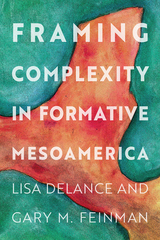 Framing Complexity in Formative Mesoamerica
Lisa Delance
University Press of Colorado, 2022 A fresh examination of variable social and economic processes, Framing Complexity in Formative Mesoamerica explores nascent social complexity during the Preclassic/Formative period in Mesoamerica and addresses broader social questions about egalitarian and transegalitarian prehispanic Mesoamerican cultural groups.
Contributors present multiple lines of evidence demonstrating the process of social complexity and reconsider a number of traditionally accepted models and presumed tenets as a result of the wealth of empirical data that has been gathered over the past four decades. Their chapters approach complexity as a process rather than a state of being by exploring social aggregation, the emergence of ethnic affiliations, and aspects of regional and macroregional variability.
Framing Complexity in Formative Mesoamerica presents some of the most recent data—and the implications of that data—for understanding the development of complex societies as human beings moved into urban environments. The book is an especially important volume for researchers and students working in Mesoamerica, as well as archaeologists taking a comparative approach to questions of complexity.
Contributors: Jaime J. Awe, Sarah B. Barber, Jeffrey S. Brezezinski, M. Kathryn Brown, Ryan H. Collins, Kaitlin Crow, Lisa DeLance, Gary M. Feinman, Sara Dzul Gongora, Guy David Hepp, Arthur A. Joyce, Rodrigo Martin Morales, George Micheletti, Deborah L. Nichols, Terry G. Powis, Zoe J. Rawski, Prudence M. Rice, Michael P. Smyth, Katherine E. South, Jon Spenard, Travis W. Stanton, Wesley D. Stoner, Teresa Tremblay Wagner
Framing Contract Law: An Economic Perspective
Victor Goldberg
Harvard University Press, 2012 The central theme of this book is that an economic framework--incorporating such concepts as information asymmetry, moral hazard, and adaptation to changed circumstances--is appropriate for contract interpretation, analyzing contract disputes, and developing contract doctrine. The value of the approach is demonstrated through the close analysis of major contract cases. In many of the cases, had the court (and the litigators) understood the economic context, the analysis and results would have been very different. Topics and some representative cases include consideration (Wood v. Lucy, Lady Duff Gordon), interpretation (Bloor v. Falstaff and Columbia Nitrogen v. Royster), remedies (Campbell v. Wentz, Tongish v. Thomas, and Parker v. Twentieth Century Fox), and excuse (Alcoa v. Essex).
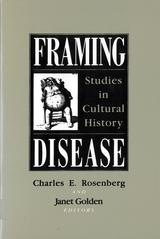 Framing Disease: Studies in Cultural History
Rosenberg, Charles E
Rutgers University Press, 1992 "In some ways disease does not exist until we have agreed that it does, by perceiving, naming, and responding to it, " writes Charles E. Rosenberg in his introduction to this stimulating set of essays. Disease is both a biological event and a social phenomenon. Patient, doctor, family, and social institutions—including employers, government, and insurance companies—all find ways to frame the biological event in terms that make sense to them and serve their own ends. Many diseases discussed here—endstage renal disease, rheumatic fever, parasitic infectious diseases, coronary thrombosis—came to be defined, redefined, and renamed over the course of several centuries. As these essays show, the concept of disease has also been used to frame culturally resonant behaviors: suicide, homosexuality, anorexia nervosa, chronic fatigue syndrome. Disease is also framed by public policy, as the cases of industrial disability and of forensic psychiatry demonstrate. Medical institutions, as managers of people with disease, come to have vested interests in diagnoses, as the histories of facilities to treat tuberculosis or epilepsy reveal. Ultimately, the existence and conquest of disease serves to frame a society's sense of its own "healthiness" and to give direction to social reforms. The contributors include Steven J. Peitzman, Peter C. English, John Farley, Christopher Lawrence, Michael MacDonald, Bert Hansen, Joan Jacobs Brumberg, Robert A. Aronowitz, Gerald Markowitz, David Rosner, Janet A. Tighe, Barbara Bates, Ellen Dwyer, John M. Eyler, and Elizabeth Fee. For any student of disease and society, this book is essential, compelling reading.
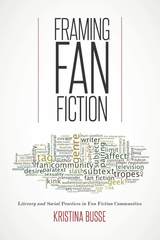 Framing Fan Fiction: Literary and Social Practices in Fan Fiction Communities
Kristina Busse
University of Iowa Press, 2017 Gathering some of Kristina Busse’s essential essays on fan fiction together with new work, Framing Fan Fiction argues that understanding media fandom requires combining literary theory with cultural studies because fan artifacts are both artistic works and cultural documents. Drawing examples from a multitude of fan communities and texts, Busse frames fan fiction in three key ways: as individual and collective erotic engagement; as a shared interpretive practice in which tropes constitute shared creative markers and illustrate the complexity of fan creations; and as a point of contention around which community conflicts over ethics play out. Moving between close readings of individual texts and fannish tropes on the one hand, and the highly intertextual embeddedness of these communal creations on the other, the book demonstrates that fan fiction is simultaneously a literary and a social practice.
Framing Fan Fiction deploys personal history and the interpretations of specific stories to contextualize fan fiction culture and its particular forms of intertextuality and performativity. In doing so, it highlights the way fans use fan fiction’s reimagining of the source material to explore issues of identities and peformativities, gender and sexualities, within a community of like-minded people. In contrast to the celebration of originality in many other areas of artistic endeavor, fan fiction celebrates repetition, especially the collective creation and circulation of tropes.
An essential resource for scholars, Framing Fan Fiction is also an ideal starting point for those new to the study of fan fiction and its communities of writers.
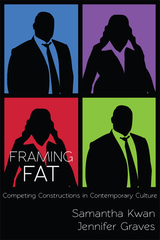 Framing Fat: Competing Constructions in Contemporary Culture
Kwan, Samantha
Rutgers University Press, 2013 According to public health officials, obesity poses significant health risks and has become a modern-day epidemic. A closer look at this so-called epidemic, however, suggests that there are multiple perspectives on the fat body, not all of which view obesity as a health hazard.
Alongside public health officials at the Centers for Disease Control and Prevention are advertisers of the fashion-beauty complex, food industry advocates at the Center for Consumer Freedom, and activists at the National Association to Advance Fat Acceptance.
Framing Fat takes a bird’s-eye view of how these multiple actors construct the fat body by identifying the messages these groups put forth, particularly where issues of beauty, health, choice and responsibility, and social justice are concerned. Samantha Kwan and Jennifer Graves examine how laypersons respond to these conflicting messages and illustrate the gendered, raced, and classed implications within them. In doing so, they shed light on how dominant ideas about body fat have led to the moral indictment of body nonconformists, essentially “framing” them for their fat bodies.
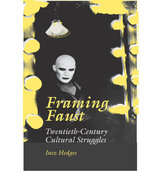 Framing Faust: Twentieth-Century Cultural Struggles
Inez Hedges
Southern Illinois University Press, 2009 In this interdisciplinary cultural history that encompasses film, literature, music, and drama, Inez Hedges follows the thread of the Faustian rebel in the major intellectual currents of the last hundred years. She presents Faust and his counterpart Mephistopheles as antagonistic—yet complementary—figures whose productive conflict was integral to such phenomena as the birth of narrative cinema, the rise of modernist avant-gardes before World War II, and feminist critiques of Western cultural traditions. Framing Faust: Twentieth-Century Cultural Struggles pursues a dialectical approach to cultural history. Using the probing lens of cultural studies, Hedges shows how claims to the Faustian legacy permeated the struggle against Nazism in the 1930s while infusing not only the search for socialist utopias in Russia, France, and Germany, but also the quest for legitimacy on both sides of the Cold War divide after 1945. Hedges balances new perspectives on such well-known works as Thomas Mann’s Dr. Faustus and Jack Kerouac’s Dr. Sax with discussions of previously overlooked twentieth-century expressions of the Faust myth, including American film noir and the Faust films of Stan Brakhage. She evaluates musical compositions—Hanns Eisler’s Faust libretto, the opera Votre Faust by Henri Pousseur and Michel Butor, and Alfred Schnittke’s Faust Cantata—as well as works of fiction and drama in French and German, many of which have heretofore never been discussed outside narrow disciplinary confines. Enhanced by twenty-four illustrations, Framing Faust provides a fascinating and focused narrative of some of the major cultural struggles of the past century as seen through the Faustian prism, and establishes Faust as an important present-day frame of reference.
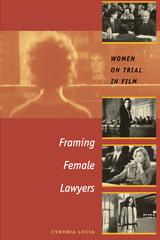 Framing Female Lawyers: Women on Trial in Film
By Cynthia Lucia
University of Texas Press, 2005 As real women increasingly entered the professions from the 1970s onward, their cinematic counterparts followed suit. Women lawyers, in particular, were the protagonists of many Hollywood films of the Reagan-Bush era, serving as a kind of shorthand reference any time a script needed a powerful career woman. Yet a close viewing of these films reveals contradictions and anxieties that belie the films' apparent acceptance of women's professional roles. In film after film, the woman lawyer herself effectively ends up "on trial" for violating norms of femininity and patriarchal authority. In this book, Cynthia Lucia offers a sustained analysis of women lawyer films as a genre and as a site where other genres including film noir, maternal melodrama, thrillers, action romance, and romantic comedy intersect. She traces Hollywood representations of female lawyers through close readings of films from the 1949 Adam's Rib through films of the 1980s and 1990s, including Jagged Edge, The Accused, and The Client, among others. She also examines several key male lawyer films and two independent films, Lizzie Borden's Love Crimes and Susan Streitfeld's Female Perversions. Lucia convincingly demonstrates that making movies about women lawyers and the law provides unusually fertile ground for exploring patriarchy in crisis. This, she argues, is the cultural stimulus that prompts filmmakers to create stories about powerful women that simultaneously question and undermine women's right to wield authority.
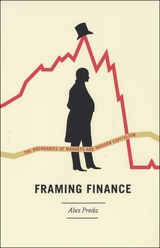 Framing Finance: The Boundaries of Markets and Modern Capitalism
Alex Preda
University of Chicago Press, 2009 As the banking crisis and its effects on the world economy have made plain, the stock market is of colossal importance to our livelihoods. In Framing Finance, Alex Preda looks at the history of the market to figure out how we arrived at a point where investing is not only commonplace, but critical, as market fluctuations threaten our plans to send our children to college or retire comfortably. As Preda discovers through extensive research, the public was once much more skeptical. For investing to become accepted, a deep-seated prejudice against speculation had to be overcome, and Preda reveals that over the course of the eighteenth and nineteenth centuries groups associated with stock exchanges in New York, London, and Paris managed to redefine finance as a scientific pursuit grounded in observational technology. But Preda also notes that as the financial data in which they trafficked became ever more difficult to understand, charismatic speculators emerged whose manipulations of the market undermined the benefits of widespread investment. And so, Framing Finance ends with an eye on the future, proposing a system of public financial education to counter the irrational elements that still animate the appeal of finance.
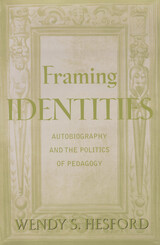 Framing Identities: Autobiography and the Politics of Pedagogy
Wendy S. Hesford
University of Minnesota Press, 1999 A trenchant examination of the political dynamics of autobiography in education. How do historically marginalized groups expose the partiality and presumptions of educational institutions through autobiographical acts? How are the stories we tell used to justify resistance to change or institutional complacency? These are the questions Wendy S. Hesford asks as she considers the uses of autobiography in educational settings. This book demonstrates how autobiographical acts-oral, written, performative, and visual-play out in vexed and contradictory ways and how in the academy they can become sites of cultural struggle over multicultural education, sexual harassment, institutional racism, hate speech, student activism, and commemorative practices. Within the context of Oberlin, a small liberal arts college in Ohio, and beginning with a speak-out organized by Asian American students in 1995, this book looks at the uses of autobiographical practices in empowering groups traditionally marginalized in academic settings. Investigating the process of self-representation and the social, spatial, and discursive frames within which academic bodies and identities are constituted, Framing Identities explores the use of autobiographical acts in terms of power, influence, risks involved, and effectiveness. Hesford does not endorse autobiography as an unequivocal source of empowerment, however. Instead, she illustrates how autobiographical practices in the academy can mobilize competing and often irreconcilable interests. Hesford argues that by integrating self-reflection into cultural, rhetorical, and material analyses-and encouraging students to do the same-teachers not only will largely justify attention to the personal in the classroom, they will help their communities move beyond a naive identity politics. Framing Identities provides a model for teacher-researchers across the disciplines (education, English, composition, cultural studies, women’s studies, to name a few) to investigate the contradictory uses and consequences of autobiography at their own institutions, and to carve out new pedagogical spaces from which they and their students can emerge as social, political, and intellectual subjects.
Framing Immigrant Integration: Dutch Research-Policy Dialogues in Comparative Perspective
Peter Scholten
Amsterdam University Press, 2011
Debates on immigrant integration often center on “national models of integration,” a concept that reflects the desire of both researchers and policy makers to find common ground. This book challenges the idea that there has ever been a coherent or consistent Dutch model of integration and asserts that though Dutch society has long been seen as exemplary for its multiculturalism—and argues that the incorporation of migrants remains one of the country’s most pressing social and political concerns. In addition to an analysis of how immigration is framed and reframed through diverse dialogues, the author provides a highly dynamic overview of integration policy and its evolution alongside migration research.
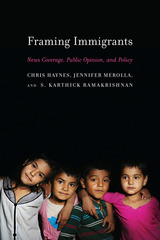 Framing Immigrants: News Coverage, Public Opinion, and Policy
Chris Haynes
Russell Sage Foundation, 2016 While undocumented immigration is controversial, the general public is largely unfamiliar with the particulars of immigration policy. Given that public opinion on the topic is malleable, to what extent do mass media shape the public debate on immigration? In Framing Immigrants, political scientists Chris Haynes, Jennifer Merolla, and Karthick Ramakrishnan explore how conservative, liberal, and mainstream news outlets frame and discuss undocumented immigrants. Drawing from original voter surveys, they show that how the media frames immigration has significant consequences for public opinion and has implications for the passage of new immigration policies.
The authors analyze media coverage of several key immigration policy issues—including mass deportations, comprehensive immigration reform, and measures focused on immigrant children, such as the DREAM Act—to chart how news sources across the ideological spectrum produce specific “frames” for the immigration debate. In the past few years, liberal and mainstream outlets have tended to frame immigrants lacking legal status as “undocumented” (rather than “illegal”) and to approach the topic of legalization through human-interest stories, often mentioning children. Conservative outlets, on the other hand, tend to discuss legalization using impersonal statistics and invoking the rule of law. Yet, regardless of the media’s ideological positions, the authors’ surveys show that “negative” frames more strongly influence public support for different immigration policies than do positive frames. For instance, survey participants who were exposed to language portraying immigrants as law-breakers seeking “amnesty” tended to oppose legalization measures. At the same time, support for legalization was higher when participants were exposed to language referring to immigrants living in the United States for a decade or more.
Framing Immigrants shows that despite heated debates on immigration across the political aisle, the general public has yet to form a consistent position on undocumented immigrants. By analyzing how the media influences public opinion, this book provides a valuable resource for immigration advocates, policymakers, and researchers.
|
|


